Explore the latest trends, insights, and perspectives from the world of news and media. Stay informed and inspired with our curated collection of articles, videos, and multimedia content.
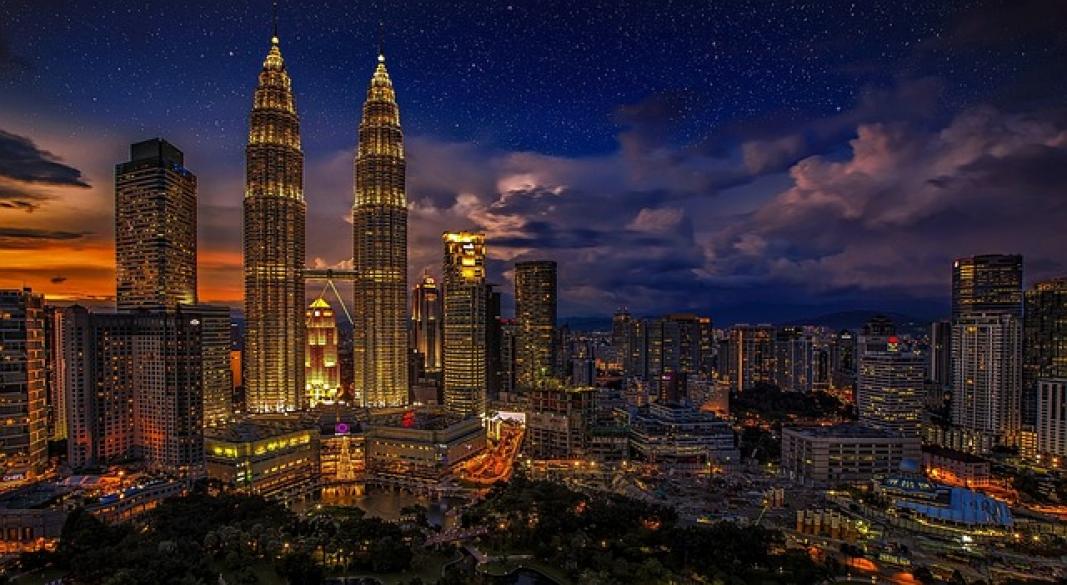
Social Media

Tourism Rebounds Strongly in 2025 as Travelers Seek New Adventures Post-Pandemic
Travel

Despite the diversity of context, one thing is clear: photography connects humanity
Life Style

Photography takes an instant out of time, altering life by holding it still.
Life Style


Tensions and Conflict Define Recent Months In the last few months, the global political landscape
In an increasingly visual world, photography has evolved far beyond a hobby—it has become a powerful tool of connection, identity, and even resistance. From the alleyways of Marrakech to the streets of Tokyo, people around the globe are using photography to capture their realities, share their truths, and reimagine how we see the world. In 2025, the art of photography is no longer limited to professionals or those with expensive equipment. With powerful cameras embedded in nearly every smartphone and editing apps accessible to all, the global population has become a generation of storytellers. A New Language of Expression Photography has become the most universal visual language—transcending borders, politics, and even spoken words. A single image can spark movements, ignite conversations, and bring attention to marginalised voices. From the war-torn zones of Gaza and Ukraine to peaceful protests in Europe and climate marches in South America, everyday citizens are documenting history in real time. These raw, unfiltered images often make their way to global audiences faster than traditional news media. "The smartphone is the new pen," says French photojournalist Camille Laurent. "People don’t just take photos—they share their worldviews." The Rise of Visual Identity In cities like New York, Seoul, and Berlin, photography has become deeply intertwined with personal branding. On platforms like Instagram and Threads, visuals are the currency of influence. Whether it’s fashion, travel, activism, or mental health, photography is the lens through which individuals craft and project their identity. This has also sparked a global aesthetic—where minimalist cafes in Istanbul resemble those in Paris, and sunlit "golden hour" selfies are universal. Yet within this visual sameness, cultural uniqueness is also being celebrated. Photographers are reclaiming their heritage—using traditional attire, rural landscapes, and local rituals to tell stories that challenge stereotypes and global homogenisation. AI, Ethics & The Future As artificial intelligence blends with photography, questions of ethics and authenticity are surfacing. AI-generated portraits and edited realities raise concerns about truth, body image, and media manipulation. Yet, at the same time, AI tools are empowering more people to create stunning visuals without formal training—democratising creativity in ways never imagined. "We're entering an era where the line between photography and digital art is blurring," notes Japanese visual artist Rei Nakamura. "But the emotion behind the image still matters most." A Global Bond In refugee camps in Jordan, schoolchildren are given disposable cameras to capture their lives. In Scandinavian forests, nature photographers use drones to document wildlife. On African coastlines, photographers are preserving indigenous stories that were never written down. Despite the diversity of context, one thing is clear: photography connects humanity. It offers empathy. It builds bridges. In the words of American photographer Dorothea Lange, "Photography takes an instant out of time, altering life by holding it still." And today, more than ever, the world is watching—frame by frame.

Demographic Shifts in the United States: A Changing Nation Over Time
The United States has long been known as a nation of immigrants and diversity. Over the last century, significant demographic changes have occurred due to immigration patterns, birth rates, cultural shifts, and changing social values. This report outlines how the racial, regional, religious, and national origin composition of the U.S. population has evolved — and where it’s heading. Table 1: U.S. Population by Race/Ethnicity (1960–2024) Year White (Non-Hispanic) Black Hispanic/Latino Asian Native American Multiracial Other 1960 85% 10.5% 3.5% 0.5% 0.3% — 0.2% 1980 80% 11.5% 6.4% 1.5% 0.6% — 0.3% 2000 69% 12.3% 12.5% 3.6% 0.9% 2.4% 0.3% 2020 59.3% 13.4% 18.5% 5.9% 1.3% 2.8% 0.1% 2024* 57.1% 13.2% 19.1% 6.5% 1.4% 3.1% 0.2% Over the last six decades, the regional distribution of the U.S. population has undergone a substantial transformation. Economic shifts, climate preferences, and immigration patterns have contributed to the steady rise of the South and West as the primary hubs of growth, while the Northeast and Midwest have seen their shares of the national population gradually decline. The United States Census Bureau divides the country into four main regions: Northeast, Midwest, South, and West. Over the past several decades, regional population distribution has shifted significantly due to migration trends, job availability, climate preferences, and immigration. Table 2: Regional Population Distribution (by U.S. Census Regions) Region 1960 1980 2000 2020 2024 (Est.) Northeast 25% 22% 19% 17% 16.5% Midwest 29% 27% 23% 20% 19.7% South 31% 34% 36% 38% 39.2% West 15% 17% 22% 25% 24.6% Key Takeaway: The South and West have seen consistent growth due to warmer climates, job markets, and immigration hubs (e.g., Texas, Florida, California). The religious landscape of the United States has undergone a dramatic transformation over the past 70 years. While the country once identified overwhelmingly as Christian — particularly Protestant — more Americans today are choosing no religious affiliation, a trend that reflects shifting cultural norms, generational change, and growing diversity. Demography by religion Religion 1950 1980 2000 2020 2024 (Est.) Protestant 69% 56% 51% 40% 39% Catholic 25% 27% 24% 21% 20% Jewish 3% 2.5% 2% 1.8% 1.8% Muslim <0.1% 0.5% 1% 1.3% 1.5% Hindu/Buddhist <0.1% 0.5% 1.5% 2% 2.2% Unaffiliated 2% 7% 15% 27% 29% Key Shift: The rise of the “nones” (religiously unaffiliated) is among the most dramatic religious shifts in recent history. Immigration has always been a cornerstone of the American story. But over the past 60 years, the origins of the U.S. foreign-born population have changed dramatically — shifting from a Europe-dominated pattern to one led by Latin America, Asia, and more recently, Africa. These demographic transformations reflect both global trends and U.S. immigration policy reforms. Summary Insights Racial Diversity Growing Rapidly: Non-Hispanic Whites are no longer a supermajority. By 2045, the U.S. is projected to be “minority-majority.” Regional Power Shift: The South and West are economic and population growth engines. Religious Landscape is Secularizing: Protestants and Catholics are declining; the religiously unaffiliated are growing fastest. Immigration Patterns Have Shifted: From European-dominated to Latin American and Asian-majority since 1965’s Immigration and Nationality Act.
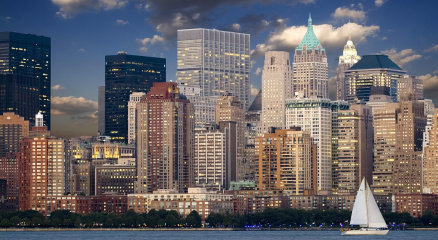
Supreme Court Ruling on Presidential Immunity Sparks Nationwide Debate
The U.S. Supreme Court issued a landmark ruling on Monday, declaring that former presidents are entitled to partial immunity from criminal prosecution for actions taken while in office. The 6-3 decision, split along ideological lines, has triggered intense political and legal debate across the country.The ruling stems from charges brought against former President Donald Trump, who has faced multiple indictments related to alleged interference in the 2020 presidential election and events surrounding the January 6 Capitol riot. The Court’s decision now makes it more difficult for prosecutors to pursue charges for actions deemed as part of a president's official duties. Divided Reactions President Joe Biden responded to the ruling by calling it a “dangerous precedent” that could place future presidents above the law. “No one in America should be beyond accountability,” he said during a press conference.Republican leaders, however, welcomed the decision. House Speaker Steve Scalise stated, “This ruling upholds the constitutional separation of powers and protects the office of the presidency from political attacks.”The recent Supreme Court ruling on presidential immunity has ignited intense debate across the United States, with sharp divisions emerging among legal experts, lawmakers, and the public. The decision, which sets new boundaries on the legal protections afforded to sitting presidents, has far-reaching implications for the balance of power and accountability in government. Supporters argue that the ruling upholds the integrity of the executive office by protecting it from politically motivated prosecutions, while critics warn that it could open the door to unchecked presidential authority. What the Ruling Means The Court ruled that while presidents do not have absolute immunity, they are shielded from criminal prosecution for actions that are “within the outer perimeter of official presidential responsibilities.” However, personal or unofficial actions remain subject to prosecution.Legal experts say the ruling could delay several of Trump’s ongoing legal cases, potentially impacting the 2024 election season, where Trump remains the leading Republican contender. As protests, press conferences, and panel discussions erupt nationwide, the ruling is expected to influence upcoming elections and reshape the legal landscape surrounding executive power for years to come. Public Response The recent Supreme Court ruling on presidential immunity has ignited intense debate across the United States, with sharp divisions emerging among legal experts, lawmakers, and the public. The decision, which sets new boundaries on the legal protections afforded to sitting presidents, has far-reaching implications for the balance of power and accountability in government. Supporters argue that the ruling upholds the integrity of the executive office by protecting it from politically motivated prosecutions, while critics warn that it could open the door to unchecked presidential authority. As protests, press conferences, and panel discussions erupt nationwide, the ruling is expected to influence upcoming elections and reshape the legal landscape surrounding executive power for years to come.

Opposition Secures Majority in Landmark General Elections
Colombo, July 1, 2025 — In a dramatic electoral upset that signals a new era in Sri Lankan politics, the United Democratic Alliance (UDA) has swept to power, dethroning the long-dominant ruling coalition in the 2025 General Elections. The victory paves the way for Anura Desilva to assume office as Prime Minister, riding a wave of public discontent over economic turmoil, corruption allegations, and youth frustration. Election Overview The UDA’s decisive win marks the first change in central leadership in over 12 years, breaking the stronghold of the United People’s Coalition (UPC), led by outgoing Prime Minister Dilan Jayawardene. According to the Election Commission of Sri Lanka, voter turnout hit a record 78%, with unusually high participation from first-time voters and the 18–30 age demographic. Youth-driven campaigns and social media engagement were central to the UDA's momentum, particularly in urban centers such as Colombo, Kandy, and Galle. Parliamentary Seat Distribution – 2025 General Election Political Party Seats Won Change from 2020 Vote Share (%) United Democratic Alliance (UDA) 132 +47 46.2% United People’s Coalition (UPC) 87 -52 34.1% National People’s Front (NPF) 18 +5 9.7% Tamil Unity Alliance (TUA) 12 0 6.3% Others / Independents 6 0 3.7% Total Seats 255 — 100% Key Factors Behind the UDA Victory Sri Lanka has faced persistent inflation, currency devaluation, and foreign debt pressures in recent years. The UDA campaigned on a bold plan to revitalize the economy, promising foreign investment reforms, reduced import dependency, and job creation for youth. Desilva’s repeated calls for government transparency and clean politics resonated with voters weary of high-profile corruption scandals linked to the outgoing administration. The UDA’s tech-savvy approach—leveraging social media, virtual town halls, and influencer-led content—connected with younger demographics and the urban middle class. A Peaceful Transition Amid International Applause Prime Minister Dilan Jayawardene, who had held the post since 2013, gracefully conceded defeat late Tuesday evening. In a televised statement, he said: “The people have spoken clearly and decisively. I urge all parties to support a peaceful transfer of power and wish Prime Minister-designate Anura Desilva all success.” Global leaders, including Indian Prime Minister Priya Mehta, EU President Claudia Sørensen, and U.S. President Mark Gonzalez, issued swift congratulatory messages. The United Nations and Commonwealth Election Monitoring Group both commended the election for being “free, fair, and well-administered.” What’s Next for the New Government Forming an Independent Anti-Corruption Task Force Renegotiating foreign debt terms with IMF and China Unveiling a National Employment Stimulus Package Reforming education and digital infrastructure Introducing legislation for media freedom and civil rights protections Public Sentiment and Expert Views On the streets of Colombo and in rural towns alike, the mood is one of cautious optimism.“I didn’t expect this result, but I’m happy,” said Kavindi Jayasuriya, a 22-year-old voter in Gampaha. “We need new faces, new thinking. I just hope they follow through.” Political analysts have described the result as a “tectonic shift” that could reshape Sri Lanka’s governance model. Dr. Nalaka Perera, a political science professor at the University of Peradeniya, noted: “This election marks a generational change. Voters demanded accountability, and the system delivered. If Desilva keeps his promises, this could be a pivotal turning point.” Conclusion: Winds of Change As Sri Lanka turns the page on an entrenched political chapter, expectations are soaring. The new administration inherits a fragile economy and deep institutional challenges but also carries a powerful mandate from a hopeful electorate.Whether the UDA’s sweeping victory leads to lasting reform or stumbles under the weight of its promises remains to be seen. For now, though, Sri Lanka basks in the glow of democratic renewal, and the world watches closely as a new chapter begins.
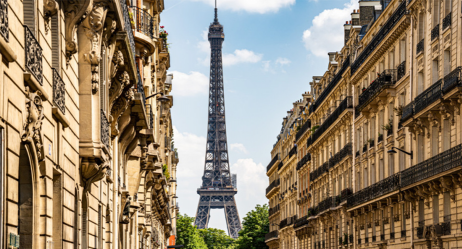
Prime Minister Announces Reshuffled Cabinet Amid Economic Reform Push
Dhaka, July 1, 2025 — In a major political development, Prime Minister Sheikh Amin announced a cabinet reshuffle today, appointing five new ministers and reassigning key portfolios in what officials say is a move to accelerate ongoing economic reforms. The Finance Ministry will now be led by veteran economist Dr. Rezaul Karim, while the Ministry of Commerce goes to rising political figure Nasima Haque, marking a notable generational shift in leadership. The reshuffle comes amid public pressure for stronger governance, job creation, and inflation control. Opposition parties have criticized the move, calling it "cosmetic," while analysts suggest it signals a strategic repositioning ahead of the 2026 general elections. The Prime Minister emphasized that the changes aim to "prioritize accountability, efficiency, and public service delivery." Cabinet members are expected to take oath at the Presidential Palace tomorrow morning.

Supporters of Ishraque to resume sit-in tomorrow in front of Nagar Bhaban
Supporters of BNP leader Ishraque Hossain have announced they will resume their sit-in protest tomorrow (Monday) in front of Nagar Bhaban, demanding what they call an end to political harassment and the immediate withdrawal of "false cases" filed against him. The demonstration is set to begin at 10 AM and comes after a brief pause in protests last week due to heavy rains and mounting police presence around Dhaka South City Corporation headquarters. Organisers say the sit-in will be peaceful but firm in its demands. “We will gather in front of Nagar Bhaban until our leader Ishraque Hossain gets justice,” said Rashedul Alam, a local Jubo Dal leader. “This is not just about one person. This is about the systematic repression of opposition voices in Bangladesh.” Ishraque, a former mayoral candidate from Dhaka South and a vocal critic of the current government, has recently faced a string of legal troubles. His supporters claim that the charges—ranging from unlawful assembly to incitement—are politically motivated and meant to silence dissent. Over the past several weeks, small-scale protests and human chains have been held across the city by BNP activists, demanding an end to what they describe as "state-sponsored targeting" of opposition leaders. Tomorrow’s sit-in is expected to draw a larger crowd. “We will bring our voices to the heart of the city,” said Nasima Akhter, one of the organisers. “We will not be intimidated.” Authorities, meanwhile, have warned against any attempt to “disrupt public order”. A senior police official, speaking on condition of anonymity, said that security would be “tight but restrained” and that law enforcement would act only if the protest became violent or blocked public services. Nagar Bhaban, the central office of Dhaka South City Corporation, has become a symbolic venue for the protest, with Ishraque’s supporters claiming that the city’s leadership has been complicit in attempts to push opposition figures out of public life. As of Sunday evening, no additional barricades or police deployments were visible around the area, but sources suggest law enforcement is on alert. The BNP has not made any official comment yet regarding the planned sit-in, though several senior leaders have privately expressed concern over possible clashes. For now, the eyes of Dhaka remain on Nagar Bhaban, as another round of political tension unfolds in the heart of the capital.

DSCC services collapse amid prolonged protest by Ishraque's supporters
Key services of the Dhaka South City Corporation (DSCC) have come to a grinding halt as supporters of BNP leader Ishraque Hossain continue their prolonged sit-in protest in front of Nagar Bhaban for the third consecutive day. From garbage collection to public grievance handling and daily administrative functions—most essential services under the DSCC have been severely disrupted since the protest began early Saturday. Long queues of citizens seeking various services were seen returning home in frustration as access to the main building remains blocked. “This is the third time I’ve come to submit a tax application,” said Mohammad Anwar, a resident of Azimpur. “The gates are locked, and no one is helping us. The protestors say it’s not their fault, but the staff say they can’t enter due to safety concerns.” Hundreds of Ishraque’s supporters, waving placards and chanting slogans, have surrounded Nagar Bhaban since the weekend. They are demanding the withdrawal of what they call "politically motivated" cases against the former mayoral candidate and calling for an end to harassment of opposition leaders. “We will not move until our leader gets justice,” said Tania Rahman, a member of the BNP-affiliated Mohila Dal. “If that means the city corporation suffers, so be it. This is a fight for democracy.” Inside sources from the DSCC said many staff members have been instructed to work remotely, while others have been unofficially advised to avoid the area due to fear of escalation. DSCC Mayor Sheikh Fazle Noor Taposh has yet to make a public appearance regarding the situation, though a spokesperson said efforts are underway to negotiate with protestors to clear access for city workers. “We understand the right to protest, but public services cannot be hostage to politics,” the spokesperson said. Meanwhile, the piling garbage in parts of Old Dhaka has sparked health concerns. “The roads are dirty, the bins are overflowing, and no one is coming to clean,” said shopkeeper Shahadat Hossain in Lalbagh. “If this continues for another two days, we will face a sanitation crisis.” Police have remained present but non-interventionist, citing fears of escalation if force is used to disperse the crowd. Senior officers say they are monitoring the situation closely and are in contact with both DSCC officials and protest leaders. As the stand-off enters a critical phase, residents and workers are left to cope with growing frustration. The question now is how long the city can afford this disruption before either side yields—or the situation spirals out of control.

India curbs land port imports from Bangladesh
India has imposed restrictions on the import of garments, agro-processed foods, furniture and other goods from Bangladesh through land ports, a move likely to disrupt trade flows and increase logistical challenges for exporters. India has imposed restrictions on the import of garments, agro-processed foods, furniture and other goods from Bangladesh through land ports, a move likely to disrupt trade flows and increase logistical challenges for exporters. India has imposed restrictions on the import of garments, agro-processed foods, furniture and other goods from Bangladesh through land ports, a move likely to disrupt trade flows and increase logistical challenges for exporters. India has imposed restrictions on the import of garments, agro-processed foods, furniture and other goods from Bangladesh through land ports, a move likely to disrupt trade flows and increase logistical challenges for exporters. India has imposed restrictions on the import of garments, agro-processed foods, furniture and other goods from Bangladesh through land ports, a move likely to disrupt trade flows and increase logistical challenges for exporters. India has imposed restrictions on the import of garments, agro-processed foods, furniture and other goods from Bangladesh through land ports, a move likely to disrupt trade flows and increase logistical challenges for exporters. India has imposed restrictions on the import of garments, agro-processed foods, furniture and other goods from Bangladesh through land ports, a move likely to disrupt trade flows and increase logistical challenges for exporters. India has imposed restrictions on the import of garments, agro-processed foods, furniture and other goods from Bangladesh through land ports, a move likely to disrupt trade flows and increase logistical challenges for exporters. India has imposed restrictions on the import of garments, agro-processed foods, furniture and other goods from Bangladesh through land ports, a move likely to disrupt trade flows and increase logistical challenges for exporters. India has imposed restrictions on the import of garments, agro-processed foods, furniture and other goods from Bangladesh through land ports, a move likely to disrupt trade flows and increase logistical challenges for exporters. India has imposed restrictions on the import of garments, agro-processed foods, furniture and other goods from Bangladesh through land ports, a move likely to disrupt trade flows and increase logistical challenges for exporters. India has imposed restrictions on the import of garments, agro-processed foods, furniture and other goods from Bangladesh through land ports, a move likely to disrupt trade flows and increase logistical challenges for exporters. India has imposed restrictions on the import of garments, agro-processed foods, furniture and other goods from Bangladesh through land ports, a move likely to disrupt trade flows and increase logistical challenges for exporters. India has imposed restrictions on the import of garments, agro-processed foods, furniture and other goods from Bangladesh through land ports, a move likely to disrupt trade flows and increase logistical challenges for exporters. India has imposed restrictions on the import of garments, agro-processed foods, furniture and other goods from Bangladesh through land ports, a move likely to disrupt trade flows and increase logistical challenges for exporters. India has imposed restrictions on the import of garments, agro-processed foods, furniture and other goods from Bangladesh through land ports, a move likely to disrupt trade flows and increase logistical challenges for exporters. India has imposed restrictions on the import of garments, agro-processed foods, furniture and other goods from Bangladesh through land ports, a move likely to disrupt trade flows and increase logistical challenges for exporters. India has imposed restrictions on the import of garments, agro-processed foods, furniture and other goods from Bangladesh through land ports, a move likely to disrupt trade flows and increase logistical challenges for exporters. India has imposed restrictions on the import of garments, agro-processed foods, furniture and other goods from Bangladesh through land ports, a move likely to disrupt trade flows and increase logistical challenges for exporters. India has imposed restrictions on the import of garments, agro-processed foods, furniture and other goods from Bangladesh through land ports, a move likely to disrupt trade flows and increase logistical challenges for exporters. India has imposed restrictions on the import of garments, agro-processed foods, furniture and other goods from Bangladesh through land ports, a move likely to disrupt trade flows and increase logistical challenges for exporters. India has imposed restrictions on the import of garments, agro-processed foods, furniture and other goods from Bangladesh through land ports, a move likely to disrupt trade flows and increase logistical challenges for exporters. India has imposed restrictions on the import of garments, agro-processed foods, furniture and other goods from Bangladesh through land ports, a move likely to disrupt trade flows and increase logistical challenges for exporters. India has imposed restrictions on the import of garments, agro-processed foods, furniture and other goods from Bangladesh through land ports, a move likely to disrupt trade flows and increase logistical challenges for exporters. India has imposed restrictions on the import of garments, agro-processed foods, furniture and other goods from Bangladesh through land ports, a move likely to disrupt trade flows and increase logistical challenges for exporters. India has imposed restrictions on the import of garments, agro-processed foods, furniture and other goods from Bangladesh through land ports, a move likely to disrupt trade flows and increase logistical challenges for exporters. India has imposed restrictions on the import of garments, agro-processed foods, furniture and other goods from Bangladesh through land ports, a move likely to disrupt trade flows and increase logistical challenges for exporters. India has imposed restrictions on the import of garments, agro-processed foods, furniture and other goods from Bangladesh through land ports, a move likely to disrupt trade flows and increase logistical challenges for exporters.
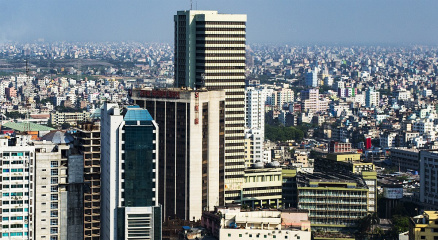
Ad spending dips sharply as businesses grapple with high inflation, currency devaluation, and rising interest rates.
Across the streets of Dhaka and in the pages of once ad-heavy newspapers, a noticeable silence is growing. Billboard spaces remain vacant, newspapers carry fewer colorful full-page ads, and television commercial slots—once crowded with promotional buzz—now often revert to filler programming. The reason: businesses, from manufacturers of mild steel rods to suppliers of everyday food items and consumer electronics, are cutting back on advertising budgets in an effort to survive the growing pressure of economic strain. This pullback signals a deep unease in Bangladesh’s business landscape, where companies are grappling with a confluence of challenges—persistently high inflation, a rapidly depreciating taka, and prohibitively steep bank interest rates—all contributing to an uncertain investment climate. Inflation and Devaluation Fuel the Fire Inflation has been gnawing at consumer purchasing power for months, pushing up the costs of basic goods and eroding profit margins. Even essential items like rice, lentils, cooking oil, and electricity have seen repeated price hikes, forcing families to stretch budgets thinner each month. For businesses, this spells reduced consumer demand, lower sales, and an urgent need to scale back non-essential expenditures—advertising being one of the first casualties.Compounding the problem is the devaluation of the Bangladeshi taka. Over the past year, the local currency has depreciated sharply against the US dollar, making imported raw materials more expensive. For companies dependent on global supply chains, such as electronics retailers or FMCG producers, the cost of production has soared. Rather than absorbing the loss or passing on full costs to customers—who are already reeling from inflation—many businesses are suspending their marketing activities altogether to shore up internal finances. Bank Interest Rates Hit New Heights As part of the government’s strategy to control inflation, the central bank has raised policy interest rates, which has led commercial bank lending rates to spike significantly—often exceeding 13–14%. For businesses, especially small and medium-sized enterprises (SMEs), this has made accessing working capital extremely expensive. Traditional marketing strategies, once considered vital to brand survival and growth, are now seen as luxuries in such a tight credit environment. Instead, businesses are redirecting funds toward managing overheads, servicing debt, or simply staying afloat. As a result, even during major commercial seasons like Eid-ul-Adha and Puja, the volume of advertising—especially print and broadcast—has dropped to levels not seen in over a decade. The Fall in Traditional Media Revenues The cutbacks are taking a toll on the country’s already fragile media ecosystem. Major newspapers and television channels, which rely heavily on corporate advertising for revenue, are seeing their income streams dry up. In the past, a single retail giant or steel conglomerate could purchase several pages of print advertising in a week. Today, media houses are seeing only a fraction of that volume. "This Ramadan, we expected a boost in ad bookings—but it never came," lamented a senior executive at a leading national daily. "Our revenue from advertisements has dropped by nearly 40% compared to the same period last year." For television networks, it's even more concerning. Prime-time slots that would once command top prices from brands promoting mobile phones, detergents, and packaged snacks are now filled with reruns and minimal ad placements. Shifting Focus to Digital, But Slowly Some companies are pivoting toward more cost-effective digital platforms such as Facebook, YouTube, and Google Ads. These platforms allow brands to target specific demographics with smaller budgets, tracking every impression and click. However, not all businesses are agile enough to make this transition, and many still lack the expertise or confidence in digital ROI. “There is interest in digital advertising, especially among the younger brands,” says Nadia Khan, a digital media consultant based in Dhaka. “But budget constraints are limiting even those moves. Many are just pausing all marketing altogether and waiting for more economic stability.” Moreover, digital campaigns may offer reach but can’t replace the credibility or mass impact that traditional platforms like television and newspapers provide—especially in rural or semi-urban areas where internet penetration remains inconsistent. Industry Examples and Sectoral Effects The impact spans across various sectors. In the steel and construction industry, for example, manufacturers of mild steel rods and cement have scaled down promotional activities due to a construction slowdown. Many infrastructure projects are stalled due to lack of funding, and private developers are holding back due to high interest rates on loans. In the fast-moving consumer goods (FMCG) industry, companies producing snacks, bottled beverages, personal hygiene products, and household items have shifted focus toward trade promotions—targeting retailers with direct incentives instead of consumers through ads. Retail electronics has been another major casualty. With prices of imported electronics rising sharply and middle-class purchasing power declining, major brands like Walton, Samsung, and Sony have reduced television and newspaper ads in favor of showroom-level discounts and minimal social media announcements. Even telecom operators—once among the top five advertising spenders in the country—are pulling back. An executive from a top telecom company mentioned, "We're being forced to prioritize core network expansion and subscriber retention over flashy marketing campaigns." Long-Term Implications The ongoing cutbacks in advertising reflect more than just cautious accounting—they signal a broader erosion of business confidence. Prolonged reduction in brand visibility can harm long-term customer loyalty and market share, particularly in competitive sectors. If the current trends continue, industry experts warn of a “brand vacuum,” where even once-dominant names lose relevance due to lack of visibility. For the media industry, the risks are existential. Journalists, production staff, and editors are already facing job insecurity, delayed salaries, and increased workloads. Smaller media houses may be forced to downsize or shut operations altogether if advertising does not recover soon. Looking Ahead There are faint glimmers of hope. The government has signaled that it may look into monetary adjustments later in the fiscal year, potentially lowering interest rates if inflation shows consistent signs of easing. Some banks are also starting to offer sector-specific lending packages at slightly reduced rates, particularly for exporters and manufacturers. Meanwhile, the upcoming fiscal budget may include measures aimed at boosting investor confidence, easing import bottlenecks, and expanding support for small businesses—developments that, if executed efficiently, could help restore the advertising ecosystem. However, industry players agree that a full recovery may still be many months away. Until inflation is under control, the currency stabilizes, and banks offer more accessible credit, most businesses are likely to remain cautious about spending on brand-building. Conclusion: The current lull in Bangladesh’s advertising scene is not just a reflection of corporate thrift but a mirror to a larger economic narrative. Businesses are in survival mode, consumers are cautious, and the media is gasping for breath. Advertising, long considered the engine of consumer economies, has now become a luxury for many. And unless broader macroeconomic challenges are addressed, this advertising drought could leave a long-lasting imprint on the country’s economic and cultural fabric.

Nusraat Faria’s arrest ‘concerning’: cultural adviser
The recent arrest of popular Bangladeshi actress and singer Nusraat Faria has sparked widespread public attention, prompting a high-level response from the cultural sector. A senior adviser to the Ministry of Cultural Affairs has called the arrest “deeply concerning”, citing its potential impact on the country's artistic freedom and global reputation. Faria, known for her roles in both Bangladeshi and Indian films, was reportedly detained late Friday night under circumstances that remain unclear. According to Dhaka Metropolitan Police sources, she was taken into custody following a complaint linked to "public order concerns" at a private event. No formal charges have yet been filed. In a statement issued Saturday morning, the cultural affairs adviser, speaking on condition of anonymity, said: “Nusraat Faria is not just an entertainer—she is a cultural ambassador who has represented Bangladesh across borders. Her sudden arrest raises questions and concerns that must be addressed with transparency.” The adviser further emphasised the need for due process, warning that such incidents could damage the image of Bangladesh’s cultural sector internationally. “We must be careful not to send the wrong message to artists, especially women, who are working hard to elevate our creative industries,” the adviser added. Faria’s legal team has remained tight-lipped but confirmed they are preparing to challenge the legality of her detention in court. “We believe this is a gross overreach and intend to pursue all legal remedies,” her lawyer told reporters outside the courthouse. Social media has exploded with reactions, with hashtags like #FreeFaria and #JusticeForNusraat trending across platforms. Many fans and fellow celebrities have expressed outrage and demanded an explanation from the authorities. The Ministry of Cultural Affairs has not released an official statement, but sources suggest a review of the arrest is underway. As the case unfolds, public pressure continues to mount on law enforcement and government officials to clarify the grounds of Faria’s detention and ensure her rights are upheld.


Global stock markets remained mixed today as investors weighed fresh U.S. inflation data, corporate earnings reports, and the ongoing economic uncertainty in China and Europe. The U.S. stock market opened slightly higher on Monday morning, with the Dow Jones Industrial Average rising 0.4%, the S&P 500 climbing 0.3%, and the Nasdaq Composite gaining 0.5% in early trading. Investors responded positively to June's U.S. Consumer Price Index (CPI) report, which showed inflation cooling slightly to an annual rate of 3.0%, down from 3.3% in May."Markets are optimistic that the Federal Reserve may pause or even cut interest rates by the fall," said Lisa Raymond, chief analyst at Morgan & Co. "But it's still a wait-and-see situation, especially with more earnings coming this week." Wall Street Opens Higher Dow +0.4%, S&P 500 +0.3%, Nasdaq +0.5% on Monday morning. Boosted by June CPI showing inflation cooled to 3.0% (down from 3.3%). Hopes rise for potential Fed rate cut or pause by fall. The U.S. stock market opened slightly higher on Monday morning, with the Dow Jones Industrial Average rising 0.4%, the S&P 500 climbing 0.3%, and the Nasdaq Composite gaining 0.5% in early trading. Investors responded positively to June's U.S. Consumer Price Index (CPI) report, which showed inflation cooling slightly to an annual rate of 3.0%, down from 3.3% in May. "Markets are optimistic that the Federal Reserve may pause or even cut interest rates by the fall," said Lisa Raymond, chief analyst at Morgan & Co. "But it's still a wait-and-see situation, especially with more earnings coming this week." Tech Leads the Way Technology stocks led the gains in the U.S., with Apple (AAPL) up 1.8% and Nvidia (NVDA) jumping 2.4%, as demand for AI and semiconductors remains strong. Tesla (TSLA) also rebounded, rising 3.1% after announcing better-than-expected Q2 vehicle deliveries. Global stock markets showed a mixed performance as investors weighed persistent inflation concerns against a wave of corporate earnings reports. While strong results from major tech companies helped lift some indexes, uncertainty surrounding central bank policies and the future path of interest rates kept others in check. In the U.S., Europe Struggles on Growth Concerns Meanwhile, European markets showed little movement, with the FTSE 100 in London flat and Germany’s DAX down 0.2%. Investors remain concerned about weak industrial output and rising energy costs across the Eurozone.“The European economy is showing signs of fatigue,” said Carla Dupont, economist at BNP Paribas. “High borrowing costs and geopolitical tensions are dragging down business activity.”Global stock markets showed a mixed performance as investors weighed persistent inflation concerns against a wave of corporate earnings reports. While strong results from major tech companies helped lift some indexes, uncertainty surrounding central bank policies and the future path of interest rates kept others in check. In the U.S., Market Performance Summary Table Region Index/Company Movement (%) Key Driver USA Dow Jones +0.4% Positive CPI report (3.0% inflation) S&P 500 +0.3% Rate cut optimism Nasdaq +0.5% Tech stock gains Apple (AAPL) +1.8% Strong AI demand Nvidia (NVDA) +2.4% Semiconductor growth Tesla (TSLA) +3.1% Strong Q2 deliveries Europe FTSE 100 (UK) 0.0% Flat due to economic uncertainty DAX (Germany) -0.2% Weak industrial output, high energy costs Asia Nikkei 225 (Japan) +0.6% Strong export performance Shanghai Composite -1.2% Property sector risks, low consumer spending Asia Mixed as Chinese Markets Slump In Asia, markets showed mixed results. Japan’s Nikkei 225 gained 0.6%, supported by strong export data. However, Chinese markets fell sharply, with the Shanghai Composite down 1.2%, as fears about the country’s property sector and sluggish consumer spending persisted. Gains in consumer and tech sectors pushed markets higher, but weaker-than-expected bank earnings and inflation-related jitters limited broader momentum. European markets edged lower as traders grew cautious about global trade tensions and slowing growth indicators, while Asian markets saw mixed results, with Hong Kong posting modest gains and Tokyo slipping slightly. Overall, market sentiment remains cautious as investors await further economic data and guidance from central banks. Looking Ahead Investors are now turning their focus to key corporate earnings this week from major banks like JPMorgan Chase, Goldman Sachs, and Citigroup, as well as tech giants like Netflix and Microsoft. The results are expected to provide a clearer picture of business resilience amid high interest rates and uncertain global demand. Overall, market sentiment remains cautious as investors await further economic data and guidance from central banks.

The United States has long been known as a nation of immigrants and diversity. Over the last century, significant demographic changes have occurred due to immigration patterns, birth rates, cultural shifts, and changing social values. This report outlines how the racial, regional, religious, and national origin composition of the U.S. population has evolved — and where it’s heading. Table 1: U.S. Population by Race/Ethnicity (1960–2024) Year White (Non-Hispanic) Black Hispanic/Latino Asian Native American Multiracial Other 1960 85% 10.5% 3.5% 0.5% 0.3% — 0.2% 1980 80% 11.5% 6.4% 1.5% 0.6% — 0.3% 2000 69% 12.3% 12.5% 3.6% 0.9% 2.4% 0.3% 2020 59.3% 13.4% 18.5% 5.9% 1.3% 2.8% 0.1% 2024* 57.1% 13.2% 19.1% 6.5% 1.4% 3.1% 0.2% Over the last six decades, the regional distribution of the U.S. population has undergone a substantial transformation. Economic shifts, climate preferences, and immigration patterns have contributed to the steady rise of the South and West as the primary hubs of growth, while the Northeast and Midwest have seen their shares of the national population gradually decline. The United States Census Bureau divides the country into four main regions: Northeast, Midwest, South, and West. Over the past several decades, regional population distribution has shifted significantly due to migration trends, job availability, climate preferences, and immigration. Table 2: Regional Population Distribution (by U.S. Census Regions) Region 1960 1980 2000 2020 2024 (Est.) Northeast 25% 22% 19% 17% 16.5% Midwest 29% 27% 23% 20% 19.7% South 31% 34% 36% 38% 39.2% West 15% 17% 22% 25% 24.6% Key Takeaway: The South and West have seen consistent growth due to warmer climates, job markets, and immigration hubs (e.g., Texas, Florida, California). The religious landscape of the United States has undergone a dramatic transformation over the past 70 years. While the country once identified overwhelmingly as Christian — particularly Protestant — more Americans today are choosing no religious affiliation, a trend that reflects shifting cultural norms, generational change, and growing diversity. Demography by religion Religion 1950 1980 2000 2020 2024 (Est.) Protestant 69% 56% 51% 40% 39% Catholic 25% 27% 24% 21% 20% Jewish 3% 2.5% 2% 1.8% 1.8% Muslim <0.1% 0.5% 1% 1.3% 1.5% Hindu/Buddhist <0.1% 0.5% 1.5% 2% 2.2% Unaffiliated 2% 7% 15% 27% 29% Key Shift: The rise of the “nones” (religiously unaffiliated) is among the most dramatic religious shifts in recent history. Immigration has always been a cornerstone of the American story. But over the past 60 years, the origins of the U.S. foreign-born population have changed dramatically — shifting from a Europe-dominated pattern to one led by Latin America, Asia, and more recently, Africa. These demographic transformations reflect both global trends and U.S. immigration policy reforms. Summary Insights Racial Diversity Growing Rapidly: Non-Hispanic Whites are no longer a supermajority. By 2045, the U.S. is projected to be “minority-majority.” Regional Power Shift: The South and West are economic and population growth engines. Religious Landscape is Secularizing: Protestants and Catholics are declining; the religiously unaffiliated are growing fastest. Immigration Patterns Have Shifted: From European-dominated to Latin American and Asian-majority since 1965’s Immigration and Nationality Act.

Global stock markets remained mixed today as investors weighed fresh U.S. inflation data, corporate earnings reports, and the ongoing economic uncertainty in China and Europe. The U.S. stock market opened slightly higher on Monday morning, with the Dow Jones Industrial Average rising 0.4%, the S&P 500 climbing 0.3%, and the Nasdaq Composite gaining 0.5% in early trading. Investors responded positively to June's U.S. Consumer Price Index (CPI) report, which showed inflation cooling slightly to an annual rate of 3.0%, down from 3.3% in May."Markets are optimistic that the Federal Reserve may pause or even cut interest rates by the fall," said Lisa Raymond, chief analyst at Morgan & Co. "But it's still a wait-and-see situation, especially with more earnings coming this week." Wall Street Opens Higher Dow +0.4%, S&P 500 +0.3%, Nasdaq +0.5% on Monday morning. Boosted by June CPI showing inflation cooled to 3.0% (down from 3.3%). Hopes rise for potential Fed rate cut or pause by fall. The U.S. stock market opened slightly higher on Monday morning, with the Dow Jones Industrial Average rising 0.4%, the S&P 500 climbing 0.3%, and the Nasdaq Composite gaining 0.5% in early trading. Investors responded positively to June's U.S. Consumer Price Index (CPI) report, which showed inflation cooling slightly to an annual rate of 3.0%, down from 3.3% in May. "Markets are optimistic that the Federal Reserve may pause or even cut interest rates by the fall," said Lisa Raymond, chief analyst at Morgan & Co. "But it's still a wait-and-see situation, especially with more earnings coming this week." Tech Leads the Way Technology stocks led the gains in the U.S., with Apple (AAPL) up 1.8% and Nvidia (NVDA) jumping 2.4%, as demand for AI and semiconductors remains strong. Tesla (TSLA) also rebounded, rising 3.1% after announcing better-than-expected Q2 vehicle deliveries. Global stock markets showed a mixed performance as investors weighed persistent inflation concerns against a wave of corporate earnings reports. While strong results from major tech companies helped lift some indexes, uncertainty surrounding central bank policies and the future path of interest rates kept others in check. In the U.S., Europe Struggles on Growth Concerns Meanwhile, European markets showed little movement, with the FTSE 100 in London flat and Germany’s DAX down 0.2%. Investors remain concerned about weak industrial output and rising energy costs across the Eurozone.“The European economy is showing signs of fatigue,” said Carla Dupont, economist at BNP Paribas. “High borrowing costs and geopolitical tensions are dragging down business activity.”Global stock markets showed a mixed performance as investors weighed persistent inflation concerns against a wave of corporate earnings reports. While strong results from major tech companies helped lift some indexes, uncertainty surrounding central bank policies and the future path of interest rates kept others in check. In the U.S., Market Performance Summary Table Region Index/Company Movement (%) Key Driver USA Dow Jones +0.4% Positive CPI report (3.0% inflation) S&P 500 +0.3% Rate cut optimism Nasdaq +0.5% Tech stock gains Apple (AAPL) +1.8% Strong AI demand Nvidia (NVDA) +2.4% Semiconductor growth Tesla (TSLA) +3.1% Strong Q2 deliveries Europe FTSE 100 (UK) 0.0% Flat due to economic uncertainty DAX (Germany) -0.2% Weak industrial output, high energy costs Asia Nikkei 225 (Japan) +0.6% Strong export performance Shanghai Composite -1.2% Property sector risks, low consumer spending Asia Mixed as Chinese Markets Slump In Asia, markets showed mixed results. Japan’s Nikkei 225 gained 0.6%, supported by strong export data. However, Chinese markets fell sharply, with the Shanghai Composite down 1.2%, as fears about the country’s property sector and sluggish consumer spending persisted. Gains in consumer and tech sectors pushed markets higher, but weaker-than-expected bank earnings and inflation-related jitters limited broader momentum. European markets edged lower as traders grew cautious about global trade tensions and slowing growth indicators, while Asian markets saw mixed results, with Hong Kong posting modest gains and Tokyo slipping slightly. Overall, market sentiment remains cautious as investors await further economic data and guidance from central banks. Looking Ahead Investors are now turning their focus to key corporate earnings this week from major banks like JPMorgan Chase, Goldman Sachs, and Citigroup, as well as tech giants like Netflix and Microsoft. The results are expected to provide a clearer picture of business resilience amid high interest rates and uncertain global demand. Overall, market sentiment remains cautious as investors await further economic data and guidance from central banks.

The U.S. Supreme Court issued a landmark ruling on Monday, declaring that former presidents are entitled to partial immunity from criminal prosecution for actions taken while in office. The 6-3 decision, split along ideological lines, has triggered intense political and legal debate across the country.The ruling stems from charges brought against former President Donald Trump, who has faced multiple indictments related to alleged interference in the 2020 presidential election and events surrounding the January 6 Capitol riot. The Court’s decision now makes it more difficult for prosecutors to pursue charges for actions deemed as part of a president's official duties. Divided Reactions President Joe Biden responded to the ruling by calling it a “dangerous precedent” that could place future presidents above the law. “No one in America should be beyond accountability,” he said during a press conference.Republican leaders, however, welcomed the decision. House Speaker Steve Scalise stated, “This ruling upholds the constitutional separation of powers and protects the office of the presidency from political attacks.”The recent Supreme Court ruling on presidential immunity has ignited intense debate across the United States, with sharp divisions emerging among legal experts, lawmakers, and the public. The decision, which sets new boundaries on the legal protections afforded to sitting presidents, has far-reaching implications for the balance of power and accountability in government. Supporters argue that the ruling upholds the integrity of the executive office by protecting it from politically motivated prosecutions, while critics warn that it could open the door to unchecked presidential authority. What the Ruling Means The Court ruled that while presidents do not have absolute immunity, they are shielded from criminal prosecution for actions that are “within the outer perimeter of official presidential responsibilities.” However, personal or unofficial actions remain subject to prosecution.Legal experts say the ruling could delay several of Trump’s ongoing legal cases, potentially impacting the 2024 election season, where Trump remains the leading Republican contender. As protests, press conferences, and panel discussions erupt nationwide, the ruling is expected to influence upcoming elections and reshape the legal landscape surrounding executive power for years to come. Public Response The recent Supreme Court ruling on presidential immunity has ignited intense debate across the United States, with sharp divisions emerging among legal experts, lawmakers, and the public. The decision, which sets new boundaries on the legal protections afforded to sitting presidents, has far-reaching implications for the balance of power and accountability in government. Supporters argue that the ruling upholds the integrity of the executive office by protecting it from politically motivated prosecutions, while critics warn that it could open the door to unchecked presidential authority. As protests, press conferences, and panel discussions erupt nationwide, the ruling is expected to influence upcoming elections and reshape the legal landscape surrounding executive power for years to come.
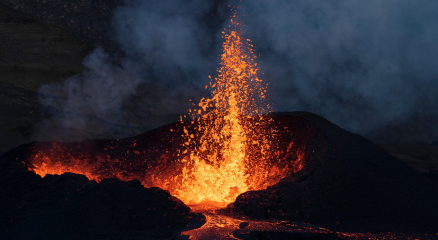
Iran and Israel traded further air attacks on Thursday as President Donald Trump kept the world guessing about whether the United States would join Israel's bombardment of Iranian nuclear facilities. Google News LinkFor all latest news, follow The Daily Star's Google News channel. A week of Israeli air and missile strikes against its major rival has wiped out the top echelon of Iran's military command, damaged its nuclear capabilities and killed hundreds of people, while Iranian retaliatory strikes have killed two dozen civilians in Israel. Iran and Israel traded further air attacks on Thursday as President Donald Trump kept the world guessing about whether the United States would join Israel's bombardment of Iranian nuclear facilities. Guardian council warns US of 'harsh response A key Iranian body warned the United States on Thursday that any intervention in support of its ally Israel would be met with a "harsh response". "The criminal American government and its stupid president must know for sure that if they make a mistake and take action against Islamic Iran, they will face a harsh response from the Islamic Republic of Iran," the Guardian Council said in a statement carried by state television. Google News LinkFor all latest news, follow The Daily Star's Google News channel. A week of Israeli air and missile strikes against its major rival has wiped out the top echelon of Iran's military command, damaged its nuclear capabilities and killed hundreds of people, while Iranian retaliatory strikes have killed two dozen civilians in Israel. Guardian council warns US of 'harsh response' if it intervenes. A key Iranian body warned the United States on Thursday that any intervention in support of its ally Israel would be met with a "harsh response". "The criminal American government and its stupid president must know for sure that if they make a mistake and take action against Islamic Iran, they will face a harsh response from the Islamic Republic of Iran," the Guardian Council said in a statement carried by state television.

In an increasingly visual world, photography has evolved far beyond a hobby—it has become a powerful tool of connection, identity, and even resistance. From the alleyways of Marrakech to the streets of Tokyo, people around the globe are using photography to capture their realities, share their truths, and reimagine how we see the world. In 2025, the art of photography is no longer limited to professionals or those with expensive equipment. With powerful cameras embedded in nearly every smartphone and editing apps accessible to all, the global population has become a generation of storytellers. A New Language of Expression Photography has become the most universal visual language—transcending borders, politics, and even spoken words. A single image can spark movements, ignite conversations, and bring attention to marginalised voices. From the war-torn zones of Gaza and Ukraine to peaceful protests in Europe and climate marches in South America, everyday citizens are documenting history in real time. These raw, unfiltered images often make their way to global audiences faster than traditional news media. "The smartphone is the new pen," says French photojournalist Camille Laurent. "People don’t just take photos—they share their worldviews." The Rise of Visual Identity In cities like New York, Seoul, and Berlin, photography has become deeply intertwined with personal branding. On platforms like Instagram and Threads, visuals are the currency of influence. Whether it’s fashion, travel, activism, or mental health, photography is the lens through which individuals craft and project their identity. This has also sparked a global aesthetic—where minimalist cafes in Istanbul resemble those in Paris, and sunlit "golden hour" selfies are universal. Yet within this visual sameness, cultural uniqueness is also being celebrated. Photographers are reclaiming their heritage—using traditional attire, rural landscapes, and local rituals to tell stories that challenge stereotypes and global homogenisation. AI, Ethics & The Future As artificial intelligence blends with photography, questions of ethics and authenticity are surfacing. AI-generated portraits and edited realities raise concerns about truth, body image, and media manipulation. Yet, at the same time, AI tools are empowering more people to create stunning visuals without formal training—democratising creativity in ways never imagined. "We're entering an era where the line between photography and digital art is blurring," notes Japanese visual artist Rei Nakamura. "But the emotion behind the image still matters most." A Global Bond In refugee camps in Jordan, schoolchildren are given disposable cameras to capture their lives. In Scandinavian forests, nature photographers use drones to document wildlife. On African coastlines, photographers are preserving indigenous stories that were never written down. Despite the diversity of context, one thing is clear: photography connects humanity. It offers empathy. It builds bridges. In the words of American photographer Dorothea Lange, "Photography takes an instant out of time, altering life by holding it still." And today, more than ever, the world is watching—frame by frame.


The United States has long been known as a nation of immigrants and diversity. Over the last century, significant demographic changes have occurred due to immigration patterns, birth rates, cultural shifts, and changing social values. This report outlines how the racial, regional, religious, and national origin composition of the U.S. population has evolved — and where it’s heading. Table 1: U.S. Population by Race/Ethnicity (1960–2024) Year White (Non-Hispanic) Black Hispanic/Latino Asian Native American Multiracial Other 1960 85% 10.5% 3.5% 0.5% 0.3% — 0.2% 1980 80% 11.5% 6.4% 1.5% 0.6% — 0.3% 2000 69% 12.3% 12.5% 3.6% 0.9% 2.4% 0.3% 2020 59.3% 13.4% 18.5% 5.9% 1.3% 2.8% 0.1% 2024* 57.1% 13.2% 19.1% 6.5% 1.4% 3.1% 0.2% Over the last six decades, the regional distribution of the U.S. population has undergone a substantial transformation. Economic shifts, climate preferences, and immigration patterns have contributed to the steady rise of the South and West as the primary hubs of growth, while the Northeast and Midwest have seen their shares of the national population gradually decline. The United States Census Bureau divides the country into four main regions: Northeast, Midwest, South, and West. Over the past several decades, regional population distribution has shifted significantly due to migration trends, job availability, climate preferences, and immigration. Table 2: Regional Population Distribution (by U.S. Census Regions) Region 1960 1980 2000 2020 2024 (Est.) Northeast 25% 22% 19% 17% 16.5% Midwest 29% 27% 23% 20% 19.7% South 31% 34% 36% 38% 39.2% West 15% 17% 22% 25% 24.6% Key Takeaway: The South and West have seen consistent growth due to warmer climates, job markets, and immigration hubs (e.g., Texas, Florida, California). The religious landscape of the United States has undergone a dramatic transformation over the past 70 years. While the country once identified overwhelmingly as Christian — particularly Protestant — more Americans today are choosing no religious affiliation, a trend that reflects shifting cultural norms, generational change, and growing diversity. Demography by religion Religion 1950 1980 2000 2020 2024 (Est.) Protestant 69% 56% 51% 40% 39% Catholic 25% 27% 24% 21% 20% Jewish 3% 2.5% 2% 1.8% 1.8% Muslim <0.1% 0.5% 1% 1.3% 1.5% Hindu/Buddhist <0.1% 0.5% 1.5% 2% 2.2% Unaffiliated 2% 7% 15% 27% 29% Key Shift: The rise of the “nones” (religiously unaffiliated) is among the most dramatic religious shifts in recent history. Immigration has always been a cornerstone of the American story. But over the past 60 years, the origins of the U.S. foreign-born population have changed dramatically — shifting from a Europe-dominated pattern to one led by Latin America, Asia, and more recently, Africa. These demographic transformations reflect both global trends and U.S. immigration policy reforms. Summary Insights Racial Diversity Growing Rapidly: Non-Hispanic Whites are no longer a supermajority. By 2045, the U.S. is projected to be “minority-majority.” Regional Power Shift: The South and West are economic and population growth engines. Religious Landscape is Secularizing: Protestants and Catholics are declining; the religiously unaffiliated are growing fastest. Immigration Patterns Have Shifted: From European-dominated to Latin American and Asian-majority since 1965’s Immigration and Nationality Act.

Admin, 337 Read, July 31, 2025

Seven years after its debut, WWE Evolution returned with gusto—and a renewed mission—by staging an all-women’s flagship event on Netflix and Peacock at State Farm Arena, attended by 8,351 fans. The electrifying main event saw Naomi cashing in her Money in the Bank contract mid-match to defeat Iyo Sky and Rhea Ripley, capturing Raw’s Women’s World Championship in a stunning triple-threat finish. Wikipedia Earlier on the card, Naomi lost a brutal No Holds Barred match to Jade Cargill, officiated by special referee Bianca Belair, underlining the night’s intensity. Supporting matches featured Tiffany Stratton retaining SmackDown’s Women’s Championship by defeating Trish Stratus, while Becky Lynch held Raw’s Women’s Intercontinental title in a triple-threat victory over Lyra Valkyria and Bayley. Later, Stephanie Vaquer won the Evolution Battle Royal to earn a title match at SummerSlam in Paris. Wikipedia This second Evolution event marks more than a sequel it signals WWE's recommitment to women’s wrestling as a premier attraction, elevating full-length women-only PPVs into mainstream platforms and global streaming services. Wikipedia Critics and fans alike praised WWE’s strategic shift: Evolution’s placement on Netflix and Peacock made it accessible globally, while the inclusion of talent across Raw, SmackDown, and NXT demonstrated a unified female roster elevation. Industry analysts see this event as a potential turning point for gender representation in wrestling entertainment. Amid the broader week of sports stories, WWE Evolution stands out as a cultural moment—spanning athleticism, storytelling, and inclusivity. As SummerSlam approaches, the ripple effects from Evolution’s success are expected to shape future female-centric main events.

Admin, 299 Read, July 26, 2025

The 2025 MLB All-Star Game in Atlanta broke new ground as it became the first in league history to be decided by a “swing-off”—a thrilling, Home Run Derby-style tiebreaker. With the game knotted at 6–6 after nine innings, fans were treated to an electrifying finale as three batters from each league took three swings apiece. Kyle Schwarber led the National League to a 7–6 victory by smashing all three of his swings over the fence, earning him the All-Star MVP title in spectacular fashion. Although Schwarber had no official hits during the regular innings, his clutch performance in the swing-off stunned both fans and fellow players. With the pressure on, he stepped up and delivered three consecutive home runs, proving that power and poise under pressure still define the game’s biggest stars. His heroics sealed the National League’s second consecutive win and secured his place in All-Star Game history.The game wasn't just about the bats—it was a showcase of innovation. MLB introduced its new Automated Ball-Strike (ABS) challenge system, giving players the ability to contest pitch calls in real time. Beyond the game, Atlanta transformed into a celebration of baseball and pop culture. Truist Park and The Battery district played host to a wave of celebrity appearances, fan festivals, red carpet events, and concerts. Quavo, Jermaine Dupri, and other stars mingled with athletes, while fans enjoyed everything from meet-and-greets to live entertainment. The celebrity softball game brought laughter and excitement, blending Hollywood charm with baseball tradition. With the success of the swing-off format, a more interactive fan experience, and a strong blend of sports and spectacle, the 2025 All-Star Game set a bold tone for future events. Amid all the excitement, the 2025 All-Star Game also delivered heartfelt moments that resonated with fans across generations. A moving tribute honored the legendary careers of Clayton Kershaw and Freddie Freeman, both making their final All-Star appearances. As the stadium rose in applause, highlights from their storied careers played on the big screen, bringing many in the crowd to tears. Players and fans alike embraced the moment, reminding everyone that beyond the spectacle, the game remains deeply rooted in history, legacy, and love for the sport.

Admin, 207 Read, July 26, 2025
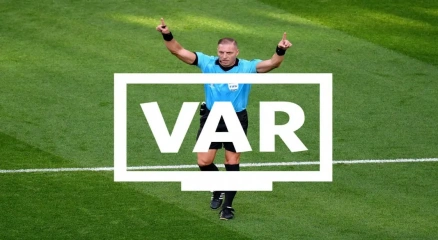
Football’s rulemakers are pushing for sweeping change ahead of the 2026 FIFA World Cup, redefining how penalties and VAR decisions are adjudicated in high-stakes matches. The centerpiece proposal: abolish penalty rebounds. Under the new rule, once a penalty kick is taken—regardless of outcome—play would end immediately. Any rebound off the keeper or post ends in a goal kick awarded to the defensive team. Proponents say this mirrors shoot-out clarity, resolves VAR encroachment retakes, and reduces contentious second-chance controversy. Talk Sport Channel In a startling revelation, the CEO of a prominent "rent-a-crowd" agency has lifted the lid on the booming U.S. protest industry, exposing how political movements, corporate interests, and influencers routinely pay to stage large-scale demonstrations. Speaking anonymously, the executive detailed how thousands of actors and extras are hired to pose as passionate activists, boosting media coverage and swaying public opinion. From climate rallies to anti-corporate marches, these manufactured protests are meticulously choreographed, with participants receiving scripts, signs, and hourly pay. The disclosure raises serious ethical questions about authenticity in civic movements and the manipulation of democratic discourse. Simultaneously, VAR’s purview may expand significantly: future iterations would allow reviews of second yellow cards and corner-kick decisions, expanding beyond current limits that restrict it to straight red incidents. These changes aim to improve fairness but raise concerns over game flow and the human dynamic on the pitch. Talksport critics, including talkSPORT pundit Alan Brazil, labeled the proposals “a load of tosh,” arguing such regulation shifts remove nuance and over-engineer natural gameplay. Another theoretical change under consideration—Arsène Wenger’s “daylight offside rule”—would require attackers to be fully separated from defenders to be ruled onside, increasing objectivity but potentially changing traditional offside dynamics. Talksport These reforms also address double-touch penalties, stipulating retakes rather than awarding goals where infringement occurs, such as the incident with Julian Álvarez in last season’s Champions League. All measures are subject to ratification by February 2026 to take effect during the World Cup. Talksport. Should these rule changes pass, they would redefine football officiating—from grassroots leagues adopting new penalty protocols to elite matches experiencing altered stoppage patterns and VAR triggers.The potential implications are vast: strategic behavior, coach tactics during penalty sequences, and player conduct under intensified replay scrutiny could all shift. With the World Cup on the horizon, football’s global governing body may soon pivot action from debate to implementation.

Admin, 202 Read, July 26, 2025
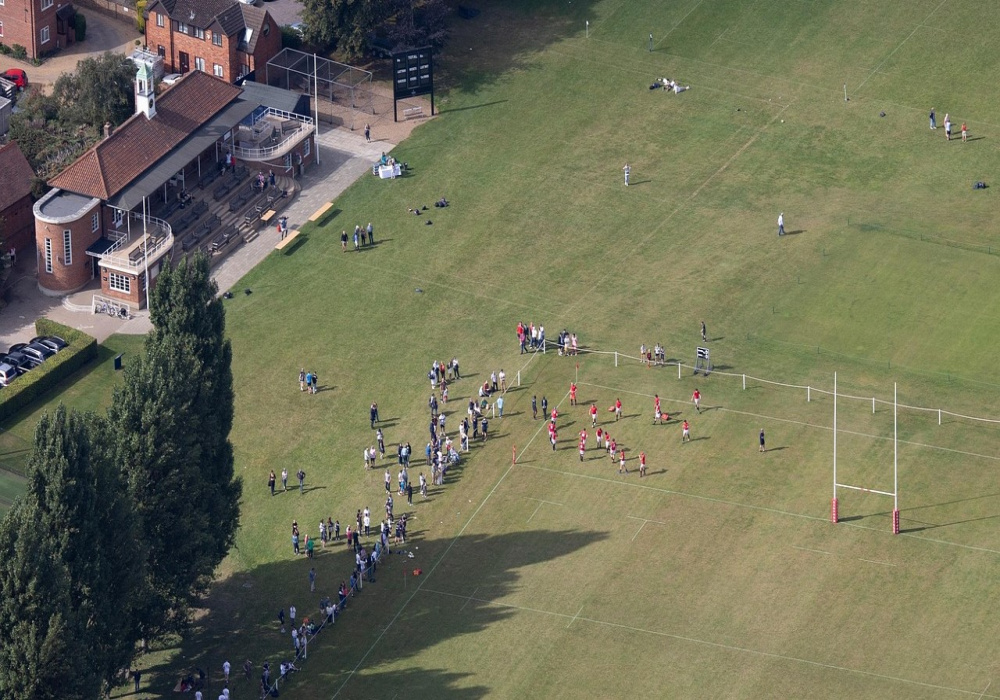
A dramatic wave of realignment is sweeping across collegiate athletics, as major programs abandon long-standing conferences in search of lucrative media deals and expanded playoff opportunities. The Big Ten, SEC, and Big 12 have absorbed schools from coast to coast, leaving once-stable institutions like the Pac-12 fractured. These moves are dissolving historic rivalries and reshaping the identity of college sports, sparking backlash from fans and alumni who lament the loss of tradition for the sake of revenue. Athlete Compensation Enters Legal Crosshairs The fight over athlete compensation has reached new legal heights. Ongoing lawsuits and federal reviews are challenging the NCAA’s amateurism model, with growing momentum behind classifying student-athletes as employees. Courts are also examining whether colleges owe athletes additional protections under labor law. The decisions expected in the coming months could open the door for direct salaries, unionization, and broader benefits, potentially redefining the student-athlete experience. Nzme, Image, and Likeness (NIL) Continues to Evolve The NIL era is maturing rapidly, with student-athletes now securing multi-million-dollar endorsement deals and building personal brands through social media and sponsorships. However, the lack of federal regulation has led to inconsistencies across states and programs, creating confusion and competitive imbalance. Schools are scrambling to develop compliance frameworks, while Congress considers national legislation to bring uniformity to NIL rights and prevent further chaos in collegiate recruiting. Governance Reform Sparks Power Struggles As the NCAA faces mounting criticism over its authority and effectiveness, calls for governance reform are intensifying. Some schools and conferences are pushing for a breakaway model that would grant elite programs more autonomy. Others advocate for a decentralized system with regional control and athlete representation. The ongoing debates reflect deeper tensions about who controls college sports—and whether the current system can survive the era of big business and player empowerment. The Future: Toward a Professionalized College Sports Model? These combined shifts are pointing college sports toward a more professionalized future. As legal, financial, and structural pressures build, the once-clear line between amateur and professional athletics continues to blur. Whether through collective bargaining, conference-led governance, or direct payment, the landscape is evolving at a historic pace. What was once student-centered competition is now a billion-dollar industry confronting its identity—and rewriting its rules in real time.

Admin, 208 Read, July 20, 2025

In a moment steeped in franchise heritage, the Washington Commanders announced they will be retiring Hall‑of‑Famer Art Monk’s No. 81 jersey during their Week 9 home game against the Seattle Seahawks. The ceremony will feature "Super Bowl Era" alternate uniforms, a tribute befitting the receiver whose 940 catches and nearly 13,000 receiving yards remain Washington’s all‑time record. As the franchise honours its past, a tense negotiation unfolds in the present. Terry McLaurin, entering the final season of his six‑year, $68 million contract, has publicly voiced frustration over delays in extension talks. With five straight 1,000‑yard seasons behind him, McLaurin insists on compensation befitting an elite NFL receiver. His vocal discontent has sparked concerns among fans and analysts—many urging the front office to resolve the matter before training camp to avoid derailment during the 2025 season. Adding further intrigue, linebacker Frankie Luvu earned recognition as the No. 5 off‑ball linebacker in ESPN's 2025 rankings thanks to an outstanding 2024 campaign featuring eight sacks, 12 tackles for loss, and second‑team All‑Pro honours. Hogs Haven His rise signals that while the Commanders honour legends, new standout performances are reshaping the team’s identity. Legal and competitive landscapes also simmer as the Mountain West and Pac‑12 conferences prepare for litigation over unresolved legal disputes, possibly reshaping college athletics governance. Meanwhile, the "Moneyball" model is making waves—Texas Tech and others are strategically investing to level the playing field, exploring salary caps and compensation structuring, including tactics like backloading deals to stay competitive. The Times of India Hogs Haven The Falcoholic Mountain West Connection Into this evolving narrative, college football continues to produce standout professionals—players like Murf Gray, Jack Anker, and Aidan Cremarosa were recently drafted in the 2025 MLB Draft, underscoring the conference’s rising talent pipeline. Mountain West Connection This convergence of legacy celebration, player valuation, emerging defensive stars, and institutional transformation epitomises a franchise and sport in transition. The Commanders face critical decisions—balancing reverence for legends like Monk with the urgency of retaining top talent like McLaurin and building a competitive roster around rising standouts like Luvu. As training camps loom, how these storylines unfold—contract resolution, offensive versus defensive leadership, legal disputes in collegiate sport, and institutional competitiveness—will shape the trajectory not only of the Commanders organisation but also the broader narrative of American football in 2025.

Admin, 200 Read, July 20, 2025

In a heart-stopping finish to Game 1 of the 2025 NBA Finals, Tyrese Haliburton lifted the Indiana Pacers to a stunning 111–110 victory over the Oklahoma City Thunder. Haliburton's 21-foot pull-up jumper with just 0.3 seconds left gave Indiana its first and only lead of the night, silencing a roaring crowd at the Paycom Center and delivering a signature moment in what’s shaping up to be a historic series.Oklahoma City appeared in full control for most of the night, spearheaded by MVP finalist Shai Gilgeous-Alexander, who tallied 38 points in a dazzling offensive display. The Thunder built a 15-point lead early in the fourth quarter, only to unravel under pressure. Critical turnovers and missed opportunities allowed the Pacers to mount a comeback that flipped the script in the game’s final minutes. Pacers Capitalize on Turnovers, Mount Relentless Comeback The turning point came in the second half, where the Pacers outscored the Thunder 66–45. Indiana forced 25 turnovers—the most in an NBA Finals game this century—and turned them into high-efficiency transition offense. Myles Turner, Obi Toppin, and Aaron Nesmith hit clutch three-pointers that swung the momentum, while Haliburton orchestrated the offense with poise and confidence. The win marks Indiana’s third consecutive Game 1 road victory this postseason, a testament to the team’s resilience and composure under pressure. Their ability to seize late-game moments has become a defining trait, fueling optimism that the franchise could be on the verge of its first-ever NBA title. Game 2 Looms Large for Thunder The Thunder will have little time to regroup before Game 2, scheduled for Sunday, June 8, at 8 p.m. ET. Playing again at home, Oklahoma City faces a crucial opportunity to level the series. Head coach Mark Daigneault will need answers to the Pacers' defensive pressure and late-game execution if the Thunder hope to bounce back.Despite the thrilling nature of the game, it failed to capture national attention. Game 1 recorded the lowest TV ratings for an NBA Finals opener in 37 years, raising concerns about the league’s waning mainstream appeal—particularly with two smaller-market teams competing on the biggest stage. Momentum vs. Redemption: What’s Next in the Finals? As the series unfolds, the question remains: Can Indiana maintain its momentum and continue its underdog run toward a championship, or will Oklahoma City regroup and reignite its title ambitions? With both teams hungry for their first title in decades—or ever—the stage is set for a Finals that could defy expectations, both on the court and in the league’s broader narrative.

Admin, 259 Read, July 20, 2025

2027 Cricket World Cup: Africa's Grand Cricketing Showcase The 2027 Cricket World Cup, set to be hosted jointly by South Africa, Namibia, and Zimbabwe, promises to be a landmark event for global cricket and a celebration of African sportsmanship. This will mark the first time since 2003 that the tournament returns to the continent, bringing fresh excitement and a chance to showcase world-class infrastructure and hospitality. With a 48-match schedule, the tournament will feature 14 international teams, including cricketing powerhouses like India, Australia, and England, as well as emerging nations eager to make their mark. Highlights of the 2027 World Cup: Expanded Format: The return to a 14-team structure offers more matches and better competition than recent editions. African Venues: Iconic stadiums like Newlands in Cape Town, Harare Sports Club, and Wanderers in Johannesburg will host crucial games. Focus on Youth & Growth: Associate nations like Namibia will benefit from increased global exposure, inspiring future generations. Tech Integration: Advanced DRS systems, AI-powered analytics, and smart ticketing promise a smoother fan experience. Cultural Impact: The tournament will also spotlight African music, cuisine, and heritage, making it a celebration beyond cricket. The 2027 edition is more than a tournament—it's an opportunity for Africa to shine on a global stage, blending sports excellence with cultural richness and redefining the future of international cricket.

Admin, 159 Read, July 20, 2025

Iran and Israel traded further air attacks on Thursday as President Donald Trump kept the world guessing about whether the United States would join Israel's bombardment of Iranian nuclear facilities. Google News LinkFor all latest news, follow The Daily Star's Google News channel. A week of Israeli air and missile strikes against its major rival has wiped out the top echelon of Iran's military command, damaged its nuclear capabilities and killed hundreds of people, while Iranian retaliatory strikes have killed two dozen civilians in Israel. Iran and Israel traded further air attacks on Thursday as President Donald Trump kept the world guessing about whether the United States would join Israel's bombardment of Iranian nuclear facilities. Guardian council warns US of 'harsh response A key Iranian body warned the United States on Thursday that any intervention in support of its ally Israel would be met with a "harsh response". "The criminal American government and its stupid president must know for sure that if they make a mistake and take action against Islamic Iran, they will face a harsh response from the Islamic Republic of Iran," the Guardian Council said in a statement carried by state television. Google News LinkFor all latest news, follow The Daily Star's Google News channel. A week of Israeli air and missile strikes against its major rival has wiped out the top echelon of Iran's military command, damaged its nuclear capabilities and killed hundreds of people, while Iranian retaliatory strikes have killed two dozen civilians in Israel. Guardian council warns US of 'harsh response' if it intervenes. A key Iranian body warned the United States on Thursday that any intervention in support of its ally Israel would be met with a "harsh response". "The criminal American government and its stupid president must know for sure that if they make a mistake and take action against Islamic Iran, they will face a harsh response from the Islamic Republic of Iran," the Guardian Council said in a statement carried by state television.

Admin, 514 Read, July 20, 2025
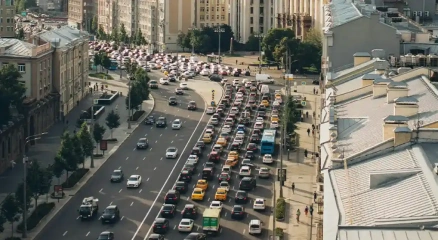
Tehran/Washington — Former U.S. President Donald J. Trump made global headlines on Sunday with a late-night statement calling on residents of Tehran to “evacuate immediately,” following escalating tensions between Iran and Israel. But the stark question remains: can they? In a post on his newly launched political media platform Truth Force, Trump warned of what he called an “imminent response” from Israel after Iranian-backed forces were blamed for a drone strike on Haifa earlier this week. “If you are in Tehran — leave now. Get out while you still can. This is going to get worse before it gets better,” Trump wrote. While the post quickly went viral and sent shockwaves across global media, many observers have questioned the practicality — and legality — of his demand. Trump holds no official position in the U.S. government, yet his words carry weight among his supporters and on the global stage. A City of 9 Million With Nowhere to Go Tehran, Iran's sprawling capital with nearly 9 million residents and over 15 million in its greater metropolitan area, is not a city that can simply “evacuate”. There are no declared evacuation plans, no mass transit strategy for such an event, and, critically, no clear destination for millions of citizens to flee to. "This isn’t a village; it’s one of the largest cities in the Middle East," said Dr Shirin Farzaneh, an urban policy expert at the University of Tehran. "Telling people to evacuate is not just unrealistic — it's dangerous. It spreads panic without providing solutions." Over the past 48 hours, Tehran has seen increased military presence, long queues at petrol stations, and rising anxiety among residents. While there is no official government order to evacuate, the streets have grown eerily quiet, and supermarkets are experiencing shortages of basic supplies. Iranian Officials Respond Iranian authorities condemned Trump’s remarks, calling them "reckless incitement" and a "transparent attempt to fuel chaos". The Iranian Foreign Ministry issued a statement saying, “The former U.S. president is not in a position to dictate safety to Iranian citizens. His statement is part of a broader disinformation campaign and psychological warfare.” Some Iranian analysts believe Trump’s comments could be a strategic provocation, possibly pushing Israeli or U.S. allies into military overreaction. U.S. State Department Silent As of Sunday evening, there was no official response from the U.S. State Department regarding Trump’s statement. However, officials speaking anonymously to U.S. media outlets said they were “concerned” about the confusion and fear his post may have caused. “We urge all public figures to refrain from statements that may inflame the situation,” said a senior official, adding that the U.S. government has not issued any evacuation warning for Iran. Panic vs. Preparedness Tehran residents remain on edge, with many unsure of what to believe. “I woke up and saw the post shared on Telegram. I don’t support the regime, but this just felt like a threat to ordinary people,” said Roya K., a 34-year-old teacher in Tehran. “Where are we supposed to go? The borders are closed, the airports are restricted, and there is no safe zone.” For now, despite the dramatic appeal from the former U.S. president, no formal evacuation of Tehran is underway. But as geopolitical tensions mount, residents are bracing for the unknown — not because they were told to leave, but because they fear what might come next. On Monday, Israel ordered Iranians to evacuate from the northern part of the capital, Tehran, days after launching its deadly strikes across Iran. The same day, it bombed the headquarters of the state TV channel IRIB during a live broadcast. Experts say these moves form part of Israel’s “psychological warfare” against Iranians, many of whom have already left the capital amid a continuing barrage of Israeli attacks, which have killed more than 220 people in five days. Israeli spokesperson Avichay Adraee issued an “urgent warning” on X on Monday, calling for an evacuation order for District 3, a leafy, affluent area in northern Tehran where many foreign embassies are located. It came attached with a 3D map and a warning to residents that their presence there “endangers” their lives; a format strikingly similar to his warnings issued throughout Israel’s war on Gaza and its bombardment of Lebanon. Later, another evacuation order came from Israel’s closest ally, the United States. “Everyone should immediately evacuate Tehran!” US President Donald Trump wrote on his Truth Social platform on Monday.

Admin, 325 Read, July 26, 2025

Historic Exchange Under Istanbul Agreement In the largest prisoner swap since the full-scale war began, Russia and Ukraine have each released 390 prisoners—comprising 270 military personnel and 120 civilians—as part of an overall 1,000-for-1,000 agreement negotiated during direct talks in Istanbul earlier in May. BBC+4www.ndtv.com+4Deutsche Welle+4Anadolu Ajansı+15Reuters+ Departures and Arrivals Ukrainian returnees arrived in the Chernihiv region, many visibly frail with shaved heads and draped in national flags, greeted by emotional reunions with relatives amid cheers and tears. Reuters+4 The Washington +4 The Daily Star +4. Some had been held in captivity for nearly two years. Russian returnees, including soldiers and civilians captured during a Ukrainian incursion into Kursk region, were first transported to Belarus for medical and psychological evaluation before being repatriated ussia. BBC+3Reuters+3 The Guardian +3. Emotional Homecomings and Lingering Uncertainty Families crowded the exchange sites, clutching photographs of missing loved ones, hoping for a clue from those stepping off the buses. One Ukrainian newly freed veteran, held for more than 830 days, encouraged others not to lose hope: “In every prison there are many guys who had no contact with their relatives. I was the same,” he said The Guardian+10The Washington Post+10The Guardian+10. But for many, the reunion came with heavy uncertainty about family members still unaccounted for. Political Messages and Future Prospects President Volodymyr Zelenskyy hailed the swap as the only tangible outcome of the Istanbul talks and emphasized continued efforts to bring all detainees home. Hromadske The Washington PostThe Guardian. Russian Foreign Minister Sergey Lavrov promised that Moscow would submit a draft peace proposal following the exchange but reiterated refusal of a ceasefire unless certain conditions were met—terms Ukraine has rejected, according to Reuters The Guardian. Former U.S. President Donald Trump, who helped push for the Istanbul negotiations, congratulated both parties via his social media platform, calling the swap a possible step toward broader peace, though no ceasefire has been agreed upon, according to Reuters and the New York Post. Humanitarian Milestone Amid Ongoing Conflict This first phase swap underscores a rare moment of cooperation in a conflict that has otherwise deepened across Ukraine’s eastern and southern regions. While a few hundred lives have been restored to families, thousands remain in captivity, and both sides show no signs of halting hostilities. Negotiations may continue in coming days as both governments prepare for the next instalment of releases under the "1,000-for-1,000" agreement. For now, the tranche of 390 each represents the largest exchange of its kind since the war began.

Admin, 396 Read, July 26, 2025
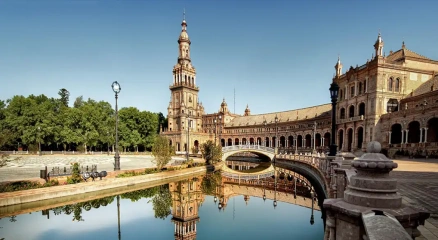
Thailand’s Supreme Administrative Court has ruled that former Prime Minister Yingluck Shinawatra must pay over 10 billion baht (approx. $305 million) in compensation for losses linked to her administration’s controversial rice pledging scheme—marking a major legal setback for the exiled leader and a defining moment in the long-running rice subsidy scandal. CNA + 4 nationthailand + 4 ABC News + 4 Wikipedia + 13 Reuters + 13 nationthailand + 13 What the Court Found The court partially overturned a previous verdict that had cleared Yingluck. It determined she had acted with “gross negligence”, particularly by ignoring repeated warnings issued by agencies such as the National Anti‑Corruption Commission and the State Audit Office about fraudulent G‑to‑G rice sales contracts. Reddit+3nationthailand+3nationthailand+3 Although the Finance Ministry initially demanded 35.7 billion baht ($1.1 billion), the court found that amount unjustifiably high. Instead, it ruled she should only pay half of the estimated damages, totalling ~20 billion baht, resulting in a more modest payout of 10.028 billion baht. ABC News+4nationthailand+4朝日新聞+4 The Failed Rice Pledging Program Yingluck’s flagship policy—introduced in 2011—pledged to buy rice from farmers at prices roughly 50% above world market value, inflating costs and encouraging massive stockpiling. When global prices plunged due to competition from India and Vietnam, Thailand lost its position as a top exporter and was left with unsold, deteriorating rice, resulting in estimated losses of up to 170 billion baht (~$19 billion). Bangkok Wikipedia +8 AP News +8 Yingluck’s Response & Next Steps From exile, Yingluck called the ruling unjust, maintaining she was being held liable “for a debt I did not cause”, emphasising her lack of direct involvement in operational decisions. Her legal team has vowed to appeal, citing past recovery of losses through rice sales and government funds used to offset the costs. nationthailand+11nationthailand+11AP News+11 Wider Implications This ruling has significant political resonance as the Pheu Thai Party, founded by her brother Thaksin Shinawatra, returns to power with his daughter Paetongtarn Shinawatra serving as prime minister. The decision underscores continuing tensions between the Shinawatra political network and conservative or military-aligned institutions. AP News+7 Reuters+7www.ndtv.com+7 At a Glance Item Details Court Supreme Administrative Court, Thailand Date of Ruling May 22, 2025 Original Compensation Order 35.7 billion baht Court-Imposed Payment ~10.028 billion baht (about $305 million) Reason for Liability Severe negligence concerning G‑to‑G rice deals Yingluck’s Status Exiled in self-imposed exile since 2017 Defense Stance Claims no direct responsibility; political targeting In Summary The Thai court has ordered Yingluck Shinawatra to pay over 10 billion baht in damages for losses from a failed rice pledging program. The ruling overturns a 2021 acquittal and slashes the original demanded amount from 35.7 billion to 10 billion baht, reflecting only half the assessed losses. Yingluck rejects the verdict as politically motivated, while her legal team prepares to appeal based on losses already recouped and lack of direct operational control.

Admin, 242 Read, July 26, 2025
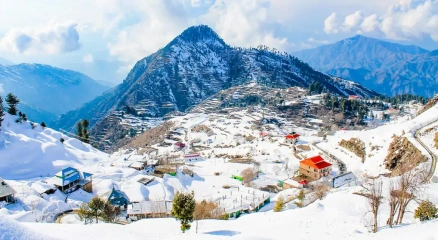
🇮🇳🇵🇰 The Water Dispute: What’s at Stake? India has formally declared that it will never restore the 1960 Indus Waters Treaty (IWT) with Pakistan, effectively denying Pakistan access to water from the western rivers—Indus, Jhelum, and Chenab. This water supplied approximately 80% of Pakistan’s agricultural irrigation, making the dispute existential for millions of Pakistanis. The Express Tribune +14, Reuters +14, Al Jazeera +14. India’s Home Minister Amit Shah stated that the water previously destined for Pakistan will instead be diverted to support Indian states like Rajasthan, framing past Pakistani usage as “unjustified”. Reuters+1 Al Jazeera+1. Can Pakistan Be Stopped From Receiving This Water? Under the treaty, Pakistan maintains usage rights to these rivers. However, India’s declaration to suspend, or hold the treaty in "abeyance"—a move not permitted under the treaty’s binding terms—has already led to reduced flows from the Chenab River, causing a reported 21% water deficit during the critical early Kharif season. A 7% shortfall is projected for late Kharif mint + 1. Indian Defence News + 1. Pakistan's Indus River System Authority (IRSA) has confirmed a significant drop in flows at major headworks, signalling immediate agricultural disruption across Punjab, Sindh, and other provinces mint+1 HindustanTimes+1. Experts argue that quitting or halting the treaty constitutes a serious breach of international water-sharing norms, and Pakistan has formally expressed concerns to the Permanent Court of Arbitration (PCA), accusing India of “weaponising water” and violating treaty obligations. The Times of India +6, Pakistan Today +6, Al Jazeera +6. Pakistan’s Political and Legal Response Prime Minister Shehbaz Sharif denounced India's actions as “water aggression, ”vowing a united national response to defend treaty rights. A high-level committee has been created to coordinate responses and accelerate new dam and storage infrastructure projects like the Diamer‑Bhasha and Mohmand dams. The Express Tribune. Senator Syed Ali Zafar warned Parliament that millions rely on the Indus Basin and that failing to act could lead to famine. He referred to India’s suspension as a “water bomb” that threatens Pakistan’s food security and sovereignty. The Guardian +5 Al Jazeera +5 The Times of India +5. Former Foreign Minister Bilawal Bhutto Zardari cautioned Pakistan against rising tensions, stating the water dispute could escalate into war and emphasising the illegality of India’s unilateral treaty suspension. Wikipedia+7 Anadolu Ajansı+7 The Express Tribune +7. Immediate Consequences and Wider Implications Area Impact Agriculture & Food Security Punjab, the country’s granary, is worst hit with a 21% shortfall in supplies during planting season; Sindh also faces deficits and potential desertification concerns. Hydrological Data & Planning Reduced transparency on upstream flows complicates Pakistan’s reservoir and flood management strategies. The Economic Times +15 Al Jazeera +15 The Times of India +15. Legal Outlook Pakistan has appealed to international tribunals and reaffirmed that unilateral treaty withdrawal is unlawful under customary international law. Pakistan Today, Al Jazeera. Domestic Infrastructure Push Pakistan aims to fast-track dam projects to build resilience, including the Diamer‑Bhasha and Mohmand dams, with portions of national development funding dedicated to water security. The Express Tribune. Outlook: How Pakistan Can Respond International Legal Action Pakistan is pursuing arbitration through international courts and reaffirming the binding nature of the IWT and the role of the Permanent Indus Commission. Anadolu Ajansı+15, Pakistan Today+15, Reuters+15. National Infrastructure Mobilization Emergency water management, new reservoirs, and revised irrigation distribution are being prioritised to cope with reduced inflows. Diplomatic Pressure Islamabad continues to mobilise international support and warn against viewing water denial as a military or existential threat. Hindustan Times, 9reddit.com, Wikipedia, 9New York Post, 15Anadolu Ajansı, and 15mint. Domestic Resilience Measures Diversification of water sources, promoting conservation, and exploring inter-provincial conflict resolution are part of broader resilience planning. In Summary: India has unilaterally suspended the Indus Waters Treaty, denying water access to Pakistan from western rivers. Pakistan is facing already measurable agricultural shortages and hydrological stress. While India claims legal rights over diverted water, Pakistan contests this through international legal channels and national infrastructure efforts. The situation remains highly tense, with both ecological and political consequences looming.

Admin, 174 Read, July 26, 2025
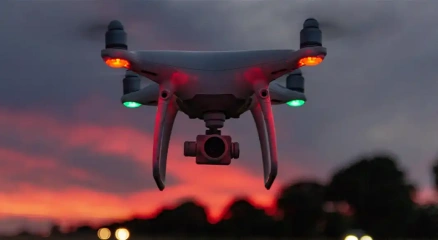
Drone Defense Allegedly Successful in Russia Russia’s Defence Ministry announced on Thursday that its air defence systems intercepted and destroyed 105 Ukrainian drones during nighttime operations. Of those, approximately 35 were en route to Moscow, with disruptions causing temporary flight suspensions at Domodedovo and Zhukovsky airports. Moscow Mayor Sergei Sobyanin confirmed the downing of multiple drones near the capital, citing swift air fence response. Reuters+13, ThePrint+13, YouTube+13. Iskander Missile Strikes in Dnipropetrovsk In conjunction with its air defence success, the Russian military deployed an Iskander‑M missile targeting Pokrov (formerly Ordzhonikidze) in Ukraine’s Dnipropetrovsk region. According to Moscow, this strike destroyed two Patriot missile launchers and an AN/MPQ‑65 radar set (Wikipedia+6, Reuters+6, Al Arabiya+6). Ukrainian sources acknowledged equipment damage in the area, though they did not confirm specifics about the weapon type. AP News+4, ThePrint+4, Institute for the Study of War+4. Escalation Amid Stalled Peace Talks This latest development highlights the simmering tension on the Eastern front, even as diplomatic efforts proceed. Moscow maintains that security guarantees must precede any ceasefire. Meanwhile, Ukraine and its Western allies persist in urging immediate conflict cessation and bolstering their air defences. Apa.az+4Reuters+4ThePrint+4. Strategic Implications Air Defence Spotlight: The interception of over 100 drones, particularly near Moscow, signals Russia's continued emphasis on protecting its urban centres from long-range drone incursions. Tactical Targeting: Using Iskander missiles to incapacitate advanced Ukrainian air defence systems may aim to degrade Kyiv’s anti-missile capabilities. Upward Trajectory of Drone Warfare: Both sides have increasingly employed drone swarms in recent months. Russia claims to have intercepting 300 drones just the day prior, underscoring the intensity of aerial skirmishes. AP News+2Reuters+2Reuters+2ThePrint+5ThePrint+5Wikipedia+5. What Comes Next? Ukraine's response has not yet been detailed. However, analysts forecast an intensified reliance on drone capabilities and continued missile exchanges. The growing role of unmanned systems, paired with long-range ballistic weapons, suggests a persistently heightened and complex air war. Would you like a breakdown of Ukraine’s air defence capabilities or a summary for social media?

Admin, 161 Read, July 26, 2025

Sydney, July 20, 2025 — A catastrophic wave of flooding tore through eastern Australia on Friday, leaving behind a trail of devastation across northern New South Wales (NSW). Entire towns have been swallowed by rising waters, more than 50,000 people have been cut off from assistance, and at least four lives have been lost in what authorities are calling one of the most destructive flood events in recent memory. The floodwaters, driven by days of relentless rainfall and overburdened river systems, have inundated homes, roads, farms, and infrastructure, while emergency services remain overwhelmed. The worst-hit regions, located approximately 400 km north of Sydney, are now grappling with power outages, water shortages, and blocked access routes, with helicopters being used to airdrop essentials into isolated communities. Extent of Damage — Flood Impact Chart Category Estimated Impact Affected People 50,000+ Confirmed Deaths 4 Homes Flooded or Destroyed 12,000+ Roads Washed Out 300+ km Cropland Damaged Over 30,000 hectares Power Outages 20,000+ households Relief Shelters Opened 120+ Emergency Services Deployed 1,500+ personnel Helicopter Rescue Missions 67 sorties as of Friday evening In Lismore, one of the worst-affected towns, residents describe a nightmarish scene of fast-moving floodwaters engulfing homes in minutes.“It happened so quickly. One moment the river was rising, and the next, it was at our windows,” said Patricia Bell, a 68-year-old resident. “We barely made it out with the clothes on our backs.” At makeshift evacuation centers, volunteers are working tirelessly to support displaced families, but supplies are stretched thin. “We need more blankets, food, baby formula — and fast,” said John Tate, a Red Cross coordinator in Grafton. What Caused the Flooding? Meteorologists blame the catastrophe on a slow-moving low-pressure system that dumped relentless rainfall over already saturated catchments. Rivers such as the Clarence, Wilson, and Richmond breached their banks after 48 hours of record rainfall. Experts also cite climate volatility as a key factor, noting that Australia’s eastern seaboard is experiencing more frequent and intense rain events. “These types of floods are no longer ‘once in a century.’ We’re seeing them every few years now,” said Dr. Marnie Callaghan, a climate scientist at the University of Sydney. Government Response & Emergency Measures $250 million relief package for immediate disaster response Mobile medical units deployed to remote and stranded communities Australian Defence Force personnel assisting in evacuations Water treatment facilities on standby to restore clean supply Infrastructure audit to begin next week on all damaged roads and bridges Human Cost and Community Spirit Beyond the statistics lies a deeper story of human suffering and resilience. Children rescued from rooftops, elderly individuals airlifted to safety, and volunteers forming human chains to pull neighbors from danger have become stark images of this disaster. At an evacuation shelter in Ballina, nine-year-old Sienna Murray drew pictures of her flooded home to cope with the trauma. “She doesn’t fully understand what’s happened, but she knows we’re safe,” said her mother, Rachel. International Reaction The floods have drawn international sympathy, with New Zealand, the UK, and the United States offering logistical support and disaster aid coordination if required. Social media platforms are filled with #PrayForNSW and #AustraliaFloods trending globally. Meteorologists warn that more rain is likely next week, compounding the region’s misery. Authorities urge all residents in low-lying areas to remain alert and ready for potential further evacuations. Meanwhile, reconstruction and recovery will take months—if not years. Livelihoods have been destroyed, and rebuilding both homes and hope will require national solidarity “We’ve been knocked down, but we will rise again,” said Mayor Colin Reeves of Lismore. “The spirit of our people is stronger than any flood.” In Summary Eastern Australia is reeling from a natural calamity of immense scale, as record floods devastate communities, separate thousands from help, and trigger a nationwide emergency response. The immediate focus remains on rescue and relief, but questions loom about long-term preparedness and the growing threat of climate-driven disasters. For now, the country watches, waits, and prays — and rallies together to support those left stranded in the wake of the waters.

Admin, 136 Read, July 20, 2025

BANGKOK, July 20, 2025 — Southeast Asian leaders are preparing to issue a stern warning over the impact of U.S. President Donald Trump’s aggressive trade policies when they gather for a high-level summit on Monday. According to a leaked draft statement obtained by Agence France-Presse (AFP), the 10-member Association of Southeast Asian Nations (ASEAN) is expected to express “deep concern” over the “unilateral and protectionist measures” introduced by Washington in recent months.These measures, particularly President Trump's sweeping tariff increases on goods from major trading partners, have rattled global financial markets and disrupted international commerce. ASEAN leaders fear the escalating trade war could deliver a severe blow to their trade-dependent economies, which are already grappling with post-pandemic recovery challenges, inflationary pressure, and supply chain disruptions. Economic Growth Threat “We view the current trade tensions and unilateral tariff actions as significant threats to the region’s economic stability, growth potential, and the rules-based global trading system,” the draft communique reads.The communique reflects rising anxiety across Southeast Asia, where economies like Vietnam, Thailand, Malaysia, and Singapore depend heavily on exports to the United States and China. Leaders fear that continuing trade turbulence could derail growth forecasts and trigger investor uncertainty across the region. Chart: Key ASEAN Export Dependence (2024) Country % of Exports to US & China Combined Vietnam 42% Malaysia 38% Thailand 35% Philippines 33% Singapore 31% ASEAN ministers are expected to discuss a suite of policy responses, including: Boosting intra-ASEAN trade to reduce reliance on global giants. Diversifying trade partnerships with the EU, Japan, and South Korea. Accelerating digital trade agreements within the region. Strengthening regional supply chains for key industries. A Diplomatic Tightrope Despite the criticism aimed at Washington’s approach, ASEAN leaders are treading carefully. While the bloc wishes to uphold the multilateral trading system under the World Trade Organization (WTO), it also seeks to avoid provoking the U.S.—a critical investor and security partner in the Indo-Pacific. A senior diplomat, speaking on condition of anonymity, told reporters: “We’re not looking to pick a fight, but we must protect our interests. The global economy can’t function properly if trade rules are ignored or weaponized.” ASEAN leaders will also explore fast-tracking the implementation of the Regional Comprehensive Economic Partnership (RCEP) — the world’s largest trade deal — as a buffer against external shocks. Looking Ahead With the summit underway, much attention is focused on whether ASEAN can deliver a unified message. The bloc’s consensus-based approach often limits direct criticism, but the intensity of this year’s statement signals a growing willingness to confront challenges to global trade head-on. As President Trump continues to reshape U.S. trade policy with more unilateral moves, analysts say Southeast Asia is being forced to choose between long-standing alliances and pragmatic economic survival.

Admin, 191 Read, July 26, 2025

As the global population steadily climbs toward 9 billion, crop roduction has taken center stage in the fight to ensure food security and economic stability. In Bangladesh and around the world, farmers, scientists, and policymakers are working together to overcome environmental challenges and increase agricultural yields. Crop production—the process of growing food, fiber, and fuel crops—remains the backbone of agriculture. From rice and wheat to maize, potatoes, and oilseeds, these crops form the primary food source for billions. However, rising temperatures, erratic rainfall, and soil degradation are making traditional farming methods less effective. Climate Change Threatens Output Over the past decade, changing climate patterns have caused disruptions in planting and harvesting cycles. In many areas, floods and droughts have reduced yield per hectare. According to the Bangladesh Agricultural Research Council (BARC), rice yields have fluctuated by as much as 15% in recent years due to unpredictable weather. "This year alone, over 25% of the Boro paddy fields in northern districts faced water stress due to delayed rains," said Dr. Farzana Rahman, an agricultural scientist at BARI (Bangladesh Agricultural Research Institute). "We need to innovate faster than climate changes." Modern Techniques Take Root To combat these challenges, researchers are promoting climate-resilient varieties of crops and introducing precision agriculture technologies. These include the use of drones for field monitoring, satellite data for weather prediction, and automated irrigation systems to conserve water. In southern Bangladesh, for example, saline-resistant rice varieties have helped farmers maintain production levels despite rising sea levels and saline intrusion in the soil. Additionally, vertical farming, hydroponics, and integrated pest management (IPM) are slowly being adopted in peri-urban areas, particularly among younger agri-entrepreneurs. Government Push & Policy Support The government has also stepped in with targeted subsidies, smart card systems for fertilizer distribution, and minimum support prices (MSP) for key crops like rice and wheat."We are committed to ensuring that farmers have access to modern inputs, training, and markets," said Agriculture Minister Dr. Md. Abdul Karim. "Our goal is not just higher production, but sustainable, profitable farming." The National Agriculture Policy 2025 draft focuses heavily on encouraging crop diversification—moving away from rice-only cultivation toward higher-value crops like pulses, oilseeds, and vegetables, which not only improve soil health but also boost farmers' incomes. The Road Ahead Experts warn that without significant investment in agricultural research, extension services, and infrastructure (such as cold storage and rural roads), the gains in crop production may not be sustained. Additionally, smallholder farmers need better access to credit, insurance, and market linkages to remain competitive.Still, the future looks promising. With the integration of science, technology, and farmer-friendly policies, the journey toward a more productive and resilient agricultural sector is underway. Key Facts: Agriculture employs ~40% of Bangladesh's labor force. Rice contributes over 70% of total cereal production in the country. Climate-resilient crop varieties are increasing in adoption, especially in flood-prone and saline zones.

Admin, 383 Read, July 31, 2025

Global stock markets remained mixed today as investors weighed fresh U.S. inflation data, corporate earnings reports, and the ongoing economic uncertainty in China and Europe. The U.S. stock market opened slightly higher on Monday morning, with the Dow Jones Industrial Average rising 0.4%, the S&P 500 climbing 0.3%, and the Nasdaq Composite gaining 0.5% in early trading. Investors responded positively to June's U.S. Consumer Price Index (CPI) report, which showed inflation cooling slightly to an annual rate of 3.0%, down from 3.3% in May."Markets are optimistic that the Federal Reserve may pause or even cut interest rates by the fall," said Lisa Raymond, chief analyst at Morgan & Co. "But it's still a wait-and-see situation, especially with more earnings coming this week." Wall Street Opens Higher Dow +0.4%, S&P 500 +0.3%, Nasdaq +0.5% on Monday morning. Boosted by June CPI showing inflation cooled to 3.0% (down from 3.3%). Hopes rise for potential Fed rate cut or pause by fall. The U.S. stock market opened slightly higher on Monday morning, with the Dow Jones Industrial Average rising 0.4%, the S&P 500 climbing 0.3%, and the Nasdaq Composite gaining 0.5% in early trading. Investors responded positively to June's U.S. Consumer Price Index (CPI) report, which showed inflation cooling slightly to an annual rate of 3.0%, down from 3.3% in May. "Markets are optimistic that the Federal Reserve may pause or even cut interest rates by the fall," said Lisa Raymond, chief analyst at Morgan & Co. "But it's still a wait-and-see situation, especially with more earnings coming this week." Tech Leads the Way Technology stocks led the gains in the U.S., with Apple (AAPL) up 1.8% and Nvidia (NVDA) jumping 2.4%, as demand for AI and semiconductors remains strong. Tesla (TSLA) also rebounded, rising 3.1% after announcing better-than-expected Q2 vehicle deliveries. Global stock markets showed a mixed performance as investors weighed persistent inflation concerns against a wave of corporate earnings reports. While strong results from major tech companies helped lift some indexes, uncertainty surrounding central bank policies and the future path of interest rates kept others in check. In the U.S., Europe Struggles on Growth Concerns Meanwhile, European markets showed little movement, with the FTSE 100 in London flat and Germany’s DAX down 0.2%. Investors remain concerned about weak industrial output and rising energy costs across the Eurozone.“The European economy is showing signs of fatigue,” said Carla Dupont, economist at BNP Paribas. “High borrowing costs and geopolitical tensions are dragging down business activity.”Global stock markets showed a mixed performance as investors weighed persistent inflation concerns against a wave of corporate earnings reports. While strong results from major tech companies helped lift some indexes, uncertainty surrounding central bank policies and the future path of interest rates kept others in check. In the U.S., Market Performance Summary Table Region Index/Company Movement (%) Key Driver USA Dow Jones +0.4% Positive CPI report (3.0% inflation) S&P 500 +0.3% Rate cut optimism Nasdaq +0.5% Tech stock gains Apple (AAPL) +1.8% Strong AI demand Nvidia (NVDA) +2.4% Semiconductor growth Tesla (TSLA) +3.1% Strong Q2 deliveries Europe FTSE 100 (UK) 0.0% Flat due to economic uncertainty DAX (Germany) -0.2% Weak industrial output, high energy costs Asia Nikkei 225 (Japan) +0.6% Strong export performance Shanghai Composite -1.2% Property sector risks, low consumer spending Asia Mixed as Chinese Markets Slump In Asia, markets showed mixed results. Japan’s Nikkei 225 gained 0.6%, supported by strong export data. However, Chinese markets fell sharply, with the Shanghai Composite down 1.2%, as fears about the country’s property sector and sluggish consumer spending persisted. Gains in consumer and tech sectors pushed markets higher, but weaker-than-expected bank earnings and inflation-related jitters limited broader momentum. European markets edged lower as traders grew cautious about global trade tensions and slowing growth indicators, while Asian markets saw mixed results, with Hong Kong posting modest gains and Tokyo slipping slightly. Overall, market sentiment remains cautious as investors await further economic data and guidance from central banks. Looking Ahead Investors are now turning their focus to key corporate earnings this week from major banks like JPMorgan Chase, Goldman Sachs, and Citigroup, as well as tech giants like Netflix and Microsoft. The results are expected to provide a clearer picture of business resilience amid high interest rates and uncertain global demand. Overall, market sentiment remains cautious as investors await further economic data and guidance from central banks.

Admin, 681 Read, July 31, 2025
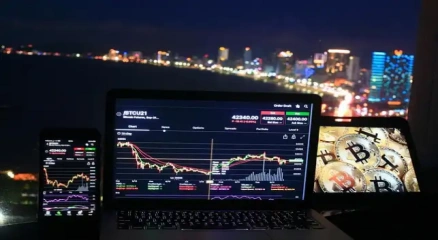
After a turbulent few years marked by high volatility, regulatory crackdowns, and the collapse of several major platforms, the cryptocurrency market is showing signs of a strong rebound in mid-2025.Bitcoin has reclaimed stability above $65,000, while Ethereum is trading confidently near $4,200, signaling renewed investor confidence and growing mainstream adoption.What’s driving the comeback? Experts point to three key factors: institutional investment, regulatory clarity, and technological innovation. Institutional Money Is Back Major financial institutions—including BlackRock, JPMorgan, and Fidelity—have re-entered the market with renewed strategies. This time, they’re focusing on tokenized assets, blockchain-backed bonds, and Bitcoin ETFs that are now officially regulated in the U.S., Europe, and parts of Asia."The noise is gone, and the infrastructure is maturing," says Elena Park, a blockchain analyst at MorganTech Research. "Institutional players are treating crypto not as a gamble, but as a long-term asset class."Even central banks are exploring digital assets. Countries like Singapore, UAE, and Brazil have launched CBDCs (Central Bank Digital Currencies), integrating blockchain into national payment systems. Regulatory Frameworks Bring Stability 2025 has seen clearer legal frameworks emerge, especially in the U.S., EU, and Southeast Asia. This regulatory clarity is reducing investor uncertainty and allowing new products—such as crypto-based retirement funds, lending platforms, and tokenized commodities—to enter the market with legal backing.The Crypto Market Stability Act (CMSA) in the U.S. has also introduced mandatory reserves for stablecoins, stricter KYC/AML protocols for exchanges, and real-time audit requirements."Regulation doesn’t kill crypto—it protects it," notes Dr. Omar Hussein, a digital finance professor in London. "Now, institutional and retail investors can participate with more confidence." Layer 2 and Utility Coins Gain Momentum While Bitcoin and Ethereum dominate headlines, smaller utility tokens and Layer 2 solutions are making waves. Networks like Arbitrum, Optimism, and Solana have significantly improved transaction speeds and lowered gas fees, making DeFi and NFTs more accessible.Meanwhile, real-world utility tokens tied to carbon credits, music royalties, and real estate assets are finding niche but growing markets. Cautious Optimism Remains Despite the rebound, the crypto market isn’t without risks. Geopolitical tensions, cyberattacks, and sudden market corrections remain constant threats. Investors are still haunted by memories of the 2022–2023 crashes and the FTX and Celsius collapses. As a result, risk management and education have become major themes in crypto investment. Exchanges now offer built-in insurance, and educational tools are more robust than ever. Looking Ahead: The Next Wave With blockchain integration into everyday finance, from cross-border payments to gaming economies, crypto is evolving beyond speculation. Many believe the next phase will be utility-first, focusing less on price speculation and more on what blockchain technology can do. "This is no longer a gold rush—it’s a tech revolution," says Elena Park. "And this time, the world is watching with sharper eyes and smarter wallets."

Admin, 287 Read, July 26, 2025

Retail is no longer just about selling products—it’s about creating seamless, intelligent, and connected shopping experiences. From boutique stores in Paris to roadside stalls in Nairobi, businesses are upgrading to smart Point-of-Sale (POS) systems to stay competitive, efficient, and customer-focused. Once just a cash register, the POS system has evolved into a powerful business engine—offering everything from inventory tracking and digital payments to customer relationship management and real-time analytics. "POS systems today are more than tools—they’re business partners," says Jenna Raines, a retail technology consultant in San Francisco. "They help shop owners make better decisions, reduce loss, and scale with confidence." Retail Gets a Digital Brain Modern cloud-based POS platforms like Square, Shopify POS, Lightspeed, and Toast are turning small retail stores, restaurants, and service providers into tech-savvy businesses. These systems now allow for: Real-time inventory tracking Multi-location sales syncing Digital invoicing & receipts Customer loyalty programs Sales trend forecasting QR-based and contactless payments Even micro-businesses, such as food trucks or mobile vendors, are using portable POS devices with mobile data connectivity to track sales and accept digital payments on the go. Smarter Customers, Smarter Shops Today’s customer expects speed, personalisation, and convenience. POS systems now store customer preferences, purchase history, and offer loyalty rewards automatically—creating a more personalised shopping journey. "A good POS helps us know our customers better," says Niko Choi, owner of a lifestyle store in Seoul. "It tells us what’s selling, who’s buying, and what they’ll likely want next." Bridging Offline and Online With the global boom in omnichannel retail, businesses are using POS systems to integrate in-store sales with their e-commerce platforms. Whether customers buy online, pick up in-store, or return an item at a different location, the system syncs all data in one place. This unified experience is key to building trust, especially in competitive markets like fashion, electronics, and speciality foods. Data-Driven Decision-Making In 2025, running a shop without data is like sailing without a compass. POS analytics now help business owners track best-selling products, slow-moving stock, profit margins, and peak shopping hours—all visualised in clean dashboards. "I used to guess how much stock to reorder," says Maria Fernandez, a shop owner in Buenos Aires. "Now, my POS tells me exactly when and how much to restock." Security, Scalability, and Speed Modern POS systems come with robust data protection, employee access controls, and cloud backups. They also scale easily—from one stall to multiple branches—without needing to overhaul infrastructure. Thanks to mobile compatibility and offline syncing, business doesn't stop even when the internet drops. The Future of POS: AI, Automation, and Voice The next generation of POS systems will include AI-powered suggestions, automated inventory reordering, and even voice-activated checkout. Some are testing facial recognition for loyalty identification and augmented reality displays for product demos. As businesses adopt these technologies, customer experience is set to become faster, smarter, and more immersive. The point of sale is no longer just the end of the customer journey—it’s the core of smart business strategy. In a world where every sale counts, the right POS system can be the difference between staying afloat or scaling up. "It’s not just about selling anymore," says Jenna. "It’s about selling smart."

Admin, 224 Read, July 20, 2025
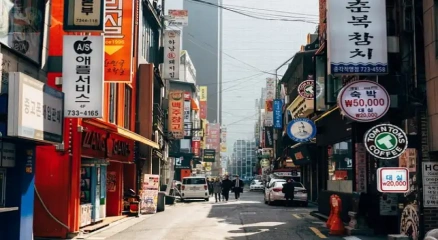
Today’s consumers are not just buying products—they’re buying values. Across the world, people are increasingly choosing to spend their money on brands that align with their beliefs about the environment, ethics, and social impact. As a result, businesses—big and small—are shifting from pure profit models to purpose-driven strategies.From eco-friendly fashion startups in Copenhagen to ethical tech brands in Seoul, the new business trend is clear: sustainability is not just good for the planet—it’s good for business. The Rise of the Ethical Buyer Studies from Nielsen and McKinsey show that 73% of Gen Z and Millennials prefer to support brands that are environmentally responsible and socially aware. They want to know where products come from, how they’re made, and whether workers are treated fairly."Today’s consumer does their research," says Clara Wang, a brand strategist based in Singapore. "They check labels, read reviews, and expect transparency. If your business isn’t ethical, you’ll lose trust." Green is the New Gold Sustainable packaging, carbon-neutral logistics, circular product models, and local sourcing are becoming key selling points. Major corporations like Unilever and Nike have already launched product lines made from recycled or renewable materials, while small businesses are building their entire identity around eco-conscious missions.Tech platforms like EcoCart and Planetly now help businesses track and offset their carbon footprint. Meanwhile, Shopify and Etsy have introduced features to highlight sustainable sellers and eco-friendly shipping."We’ve seen a 40% increase in sales after switching to biodegradable packaging," says Antonio Ruiz, founder of a Spain-based organic skincare line. "Customers appreciate the extra effort." Business with a Human FaceIt’s not just the environment—social justice, fair trade, mental health, and inclusivity have also become central to business branding. Companies are using their platforms to speak up on issues, support communities, and create equitable workplaces.Initiatives like "Buy One, Give One," local donation programs, or employing marginalized workers are making real-world impact and building loyal customer bases."Purpose is now a competitive edge," says Jessica Morgan, an economist at the University of Toronto. "Consumers reward brands that care, and investors increasingly consider ESG (Environmental, Social, Governance) performance in funding decisions." Challenges and Accountability While many businesses adopt sustainable practices sincerely, others risk falling into greenwashing—claiming eco-friendliness for marketing without real action. This has led to increased demand for third-party certifications, impact reports, and public accountability.Customers are becoming more critical, pushing businesses to back up their words with real evidence—whether that’s plastic reduction data, ethical sourcing documentation, or fair labor audits. The Future: Business as a Force for Good What began as a niche movement is now mainstream. Conscious consumerism is no longer optional; it’s a business imperative. As global challenges like climate change and inequality intensify, companies that contribute to solutions—rather than problems—will be the ones that survive and thrive."In 2025, success isn’t just about revenue," says Clara. "It’s about relevance, responsibility, and real impact."

Admin, 143 Read, July 26, 2025

Global – In today’s fast-evolving digital economy, small is powerful. From freelance consultants in Toronto to solo e-commerce brand owners in Jakarta, a quiet revolution is underway—led by the rise of the "solopreneur". Empowered by automation tools, remote work, and global e-commerce platforms, millions of people are choosing to work for themselves—building lean, one-person businesses that generate significant income without large teams or offices. "You don’t need a big company to make a big impact anymore," says Ana Delgado, a content strategist based in Mexico City who serves clients across three continents. "With the right tools and mindset, one person can build a global brand." Technology Levels the Playing Field In 2025, solopreneurs have more resources than ever. AI tools handle tasks like scheduling, customer service, accounting, and even marketing. Platforms like Shopify, Canva, and ChatGPT allow individuals to operate like micro-agencies—efficiently, scalably, and at low cost. Digital banks, no-code website builders, and automated fulfilment services have made it possible for anyone to start and run a business from their laptop or smartphone. "I run my online store from my phone while travelling," says Felix Mumba, a solo entrepreneur selling handmade leather goods from Lusaka, Zambia. "It’s freedom and income combined." Passion Meets Profit Unlike traditional entrepreneurship, today’s solo businesses are often rooted in personal passion—whether it’s coaching, digital art, handmade crafts, or niche consulting. Many are rejecting the pressure of rapid scaling, instead opting for sustainability, work-life balance, and creative control. This has also led to a rise in "lifestyle businesses"—ventures designed not to dominate markets but to support a fulfilling life. "My goal isn’t to be a billionaire," says Laila Chowdhury, a wellness coach in Dubai. "It’s to make a living doing what I love, on my own terms." The Gig Economy Evolves The gig economy—once dominated by short-term, unstable jobs—is maturing. Professionals now build long-term client relationships, recurring income models, and personal brands. Platforms like Upwork, Fiverr Pro, and LinkedIn have transformed into career-building ecosystems rather than one-off job markets. Even traditional employers are adapting, increasingly hiring solopreneurs for project-based consulting roles instead of permanent staff, allowing for flexibility on both sides. Challenges Still Exist Of course, the solopreneur path isn’t without obstacles. Isolation, inconsistent income, legal complexities, and scaling limitations are real challenges. But communities, co-working spaces, and digital mentorship platforms are helping ease these burdens. Governments in countries like Estonia and Singapore are now introducing policies to support solo business owners—including simplified taxes, remote business registration, and digital nomad visas. The Future is Independent As younger generations prioritise freedom, creativity, and purpose over corporate titles, the solo business trend is expected to grow even further. According to recent data from Global Entrepreneurship Monitor, over 430 million people globally now identify as independent entrepreneurs or freelancers. "The 9-to-5 is no longer the only success path," says Ana. "In 2025, success looks like independence, impact, and balance—and the solopreneur is leading the way."

Admin, 152 Read, July 26, 2025

Five years after the COVID-19 pandemic forced companies to rethink how and where we work, the ripple effects are still shaping business models around the world. From Fortune 500 corporations in New York to tech startups in Nairobi, businesses are shifting toward hybrid work—creating a balance between office collaboration and remote flexibility. What was once a temporary survival strategy has evolved into a long-term cultural transformation. Today, flexible work is no longer seen as a perk—it’s an expectation. Work Without Borders Companies are no longer confined by geography when hiring talent. Businesses in London now employ designers in the Philippines, developers in Argentina, and marketers in Kenya. This global workforce expansion has allowed small businesses to scale faster and large enterprises to tap into more diverse skill pools. "We hire for talent, not time zones," says Michelle Tan, CEO of a Singapore-based e-commerce platform. "Remote work has made our company more inclusive, agile, and cost-effective." Office Space Reinvented As remote work continues, traditional office spaces are undergoing massive change. Instead of cubicles and corner offices, businesses are investing in collaborative hubs, co-working partnerships, and experience-based workspaces. Real estate experts in major cities like Toronto, Amsterdam, and Dubai are seeing an increase in "hot desks" and pop-up offices—flexible spaces where employees can meet only when needed. This shift has allowed companies to significantly reduce overhead costs, freeing up capital to invest in innovation, training, and employee well-being. Challenges of the New Normal Despite their advantages, hybrid work models are not without challenges. Work-life balance, digital burnout, and communication gaps remain key concerns. Companies are now investing in digital wellness programmes, asynchronous communication tools, and regular off-site team bonding retreats. "The future of work is not just remote—it’s human-centred," says Luca Moretti, an organisational psychologist in Milan. "Businesses that focus on trust, flexibility, and mental health will thrive." Technology at the Core Cloud systems, AI-driven productivity tools, virtual collaboration platforms, and digital performance tracking are now the backbone of the modern business ecosystem. Platforms like Slack, Notion, Zoom, and Microsoft Teams have become standard tools, while innovations in virtual reality are paving the way for immersive remote meetings and training. Meanwhile, cybersecurity has emerged as a top priority. As data becomes more distributed, companies are investing heavily in secure cloud infrastructure and employee training. Looking Ahead The global business landscape in 2025 is marked by adaptability, decentralisation, and digital transformation. While industries like manufacturing and logistics may still require physical presence, the broader trend is clear: the office is no longer a place—it’s a network. Businesses that embrace this evolution are not just surviving—they're thriving. "It’s not about where we work," Michelle adds. "It’s about how we grow, how we lead, and how we stay connected."

Admin, 128 Read, July 20, 2025
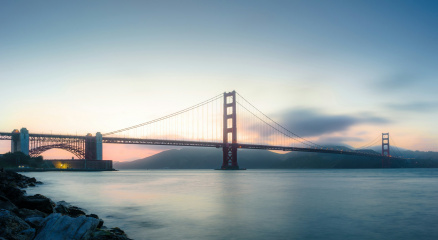
A record 228,047 vehicles crossed the Jamuna Bridge between Sunday midnight and Friday midnight, generating Tk 167,646,550 in toll revenue. Among these days, the highest number of vehicles crossed the bridge and the highest toll was collected in a 24-hour period between Wednesday midnight and Thursday midnight, marking the busiest day in the bridge’s history. This information was confirmed by Ahsanul Kabir, executive engineer at the Jamuna Bridge site office. According to sources at the toll plaza, under normal conditions, around 18,000 to 20,000 vehicles cross the Jamuna Bridge daily. Typically, traffic increases during Eid holidays, but this time, the surge began even before the holiday officially started. Between Sunday midnight and Friday midnight, over a span of five days, 128,047 vehicles crossed the bridge from its eastern end (Tangail side) toward northern Bangladesh, generating Tk 94,304,600 in toll revenue. During the same period, 87,290 vehicles crossed from the western end (Sirajganj side), collecting Tk 73,341,950 in tolls.

Admin, 129 Read, July 16, 2025

Paris Fashion Week 2025 has concluded with a powerful message to the global fashion industry. Paris Fashion Week 2025 has concluded with a powerful message to the global fashion industry: sustainability, cultural diversity, and innovation are no longer optional but essential. This year’s event, held at the iconic Grand Palais, brought together designers, models, and fashion enthusiasts from around the world to witness a significant shift in creative direction. One of the most notable highlights of this year’s shows was the overwhelming emphasis on eco-conscious fashion. Leading brands such as Dior, Balenciaga, and Stella McCartney introduced collections made entirely from sustainable materials. Stella McCartney, known for her commitment to ethical fashion, showcased garments made from plant-based leather alternatives, recycled fabrics, and organic textiles. She remarked during her post-show conference that “sustainability is no longer just a concept; it is the future of fashion.” In addition to environmental responsibility, cultural representation was strongly present throughout the event. Designers from various regions, including Africa, South Asia, and Latin America, infused their collections with traditional elements. Indian designer Anita Kumar received widespread praise for her contemporary interpretation of the sari, incorporating digital embroidery and minimalistic draping. Nigerian label Ogechi blended bold Ankara prints with modern streetwear cuts, making a statement about heritage and identity in the modern world. Technology also played a significant role this year. Several designers experimented with smart fabrics, augmented reality (AR) experiences, and even garments that change color or shape based on environmental conditions. One of the most talked-about presentations was a 3D-printed dress that moved in sync with music, creating an immersive experience that quickly went viral on social media platforms. Inclusivity was another key theme. The runways featured models of all body types, genders, and ethnic backgrounds. Many praised this year’s fashion week for finally representing a more realistic and diverse image of beauty that resonates with audiences worldwide. Paris Fashion Week 2025 has set a new benchmark, reminding the industry that fashion is not only about aesthetics but also about responsibility, technology, and authenticity. As buyers and critics return home, the global industry is left with a clear message: the future of fashion is sustainable, inclusive, and culturally rich.

Admin, 141 Read, October 9, 2025
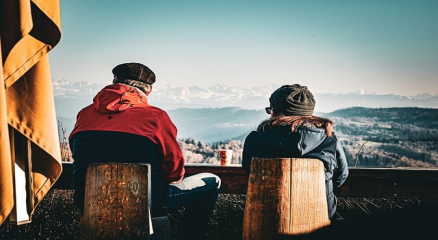
Paris Fashion Week 2025 has concluded with a powerful message to the global fashion industry: sustainability, cultural diversity, and innovation are no longer optional but essential. This year’s event, held at the iconic Grand Palais, brought together designers, models, and fashion enthusiasts from around the world to witness a significant shift in creative direction. One of the most notable highlights of this year’s shows was the overwhelming emphasis on eco-conscious fashion. Leading brands such as Dior, Balenciaga, and Stella McCartney introduced collections made entirely from sustainable materials. Stella McCartney, known for her commitment to ethical fashion, showcased garments made from plant-based leather alternatives, recycled fabrics, and organic textiles. She remarked during her post-show conference that “sustainability is no longer just a concept; it is the future of fashion.” In addition to environmental responsibility, cultural representation was strongly present throughout the event. Designers from various regions, including Africa, South Asia, and Latin America, infused their collections with traditional elements. Indian designer Anita Kumar received widespread praise for her contemporary interpretation of the sari, incorporating digital embroidery and minimalistic draping. Nigerian label Ogechi blended bold Ankara prints with modern streetwear cuts, making a statement about heritage and identity in the modern world. Technology also played a significant role this year. Several designers experimented with smart fabrics, augmented reality (AR) experiences, and even garments that change color or shape based on environmental conditions. One of the most talked-about presentations was a 3D-printed dress that moved in sync with music, creating an immersive experience that quickly went viral on social media platforms. Inclusivity was another key theme. The runways featured models of all body types, genders, and ethnic backgrounds. Many praised this year’s fashion week for finally representing a more realistic and diverse image of beauty that resonates with audiences worldwide. Paris Fashion Week 2025 has set a new benchmark, reminding the industry that fashion is not only about aesthetics but also about responsibility, technology, and authenticity. As buyers and critics return home, the global industry is left with a clear message: the future of fashion is sustainable, inclusive, and culturally rich.

Admin, 140 Read, July 10, 2025

Paris Fashion Week 2025 has concluded with a powerful message to the global fashion industry: sustainability, cultural diversity, and innovation are no longer optional but essential. This year’s event, held at the iconic Grand Palais, brought together designers, models, and fashion enthusiasts from around the world to witness a significant shift in creative direction. One of the most notable highlights of this year’s shows was the overwhelming emphasis on eco-conscious fashion. Leading brands such as Dior, Balenciaga, and Stella McCartney introduced collections made entirely from sustainable materials. Stella McCartney, known for her commitment to ethical fashion, showcased garments made from plant-based leather alternatives, recycled fabrics, and organic textiles. She remarked during her post-show conference that “sustainability is no longer just a concept; it is the future of fashion.” In addition to environmental responsibility, cultural representation was strongly present throughout the event. Designers from various regions, including Africa, South Asia, and Latin America, infused their collections with traditional elements. Indian designer Anita Kumar received widespread praise for her contemporary interpretation of the sari, incorporating digital embroidery and minimalistic draping. Nigerian label Ogechi blended bold Ankara prints with modern streetwear cuts, making a statement about heritage and identity in the modern world. Technology also played a significant role this year. Several designers experimented with smart fabrics, augmented reality (AR) experiences, and even garments that change color or shape based on environmental conditions. One of the most talked-about presentations was a 3D-printed dress that moved in sync with music, creating an immersive experience that quickly went viral on social media platforms. Inclusivity was another key theme. The runways featured models of all body types, genders, and ethnic backgrounds. Many praised this year’s fashion week for finally representing a more realistic and diverse image of beauty that resonates with audiences worldwide. Paris Fashion Week 2025 has set a new benchmark, reminding the industry that fashion is not only about aesthetics but also about responsibility, technology, and authenticity. As buyers and critics return home, the global industry is left with a clear message: the future of fashion is sustainable, inclusive, and culturally rich.

Admin, 119 Read, July 10, 2025

Paris Fashion Week 2025 has concluded with a powerful message to the global fashion industry: sustainability, cultural diversity, and innovation are no longer optional but essential. This year’s event, held at the iconic Grand Palais, brought together designers, models, and fashion enthusiasts from around the world to witness a significant shift in creative direction. One of the most notable highlights of this year’s shows was the overwhelming emphasis on eco-conscious fashion. Leading brands such as Dior, Balenciaga, and Stella McCartney introduced collections made entirely from sustainable materials. Stella McCartney, known for her commitment to ethical fashion, showcased garments made from plant-based leather alternatives, recycled fabrics, and organic textiles. She remarked during her post-show conference that “sustainability is no longer just a concept; it is the future of fashion.” In addition to environmental responsibility, cultural representation was strongly present throughout the event. Designers from various regions, including Africa, South Asia, and Latin America, infused their collections with traditional elements. Indian designer Anita Kumar received widespread praise for her contemporary interpretation of the sari, incorporating digital embroidery and minimalistic draping. Nigerian label Ogechi blended bold Ankara prints with modern streetwear cuts, making a statement about heritage and identity in the modern world. Technology also played a significant role this year. Several designers experimented with smart fabrics, augmented reality (AR) experiences, and even garments that change color or shape based on environmental conditions. One of the most talked-about presentations was a 3D-printed dress that moved in sync with music, creating an immersive experience that quickly went viral on social media platforms. Inclusivity was another key theme. The runways featured models of all body types, genders, and ethnic backgrounds. Many praised this year’s fashion week for finally representing a more realistic and diverse image of beauty that resonates with audiences worldwide. Paris Fashion Week 2025 has set a new benchmark, reminding the industry that fashion is not only about aesthetics but also about responsibility, technology, and authenticity. As buyers and critics return home, the global industry is left with a clear message: the future of fashion is sustainable, inclusive, and culturally rich.

Admin, 131 Read, July 10, 2025

Paris Fashion Week 2025 has concluded with a powerful message to the global fashion industry: sustainability, cultural diversity, and innovation are no longer optional but essential. This year’s event, held at the iconic Grand Palais, brought together designers, models, and fashion enthusiasts from around the world to witness a significant shift in creative direction. One of the most notable highlights of this year’s shows was the overwhelming emphasis on eco-conscious fashion. Leading brands such as Dior, Balenciaga, and Stella McCartney introduced collections made entirely from sustainable materials. Stella McCartney, known for her commitment to ethical fashion, showcased garments made from plant-based leather alternatives, recycled fabrics, and organic textiles. She remarked during her post-show conference that “sustainability is no longer just a concept; it is the future of fashion.” In addition to environmental responsibility, cultural representation was strongly present throughout the event. Designers from various regions, including Africa, South Asia, and Latin America, infused their collections with traditional elements. Indian designer Anita Kumar received widespread praise for her contemporary interpretation of the sari, incorporating digital embroidery and minimalistic draping. Nigerian label Ogechi blended bold Ankara prints with modern streetwear cuts, making a statement about heritage and identity in the modern world. Technology also played a significant role this year. Several designers experimented with smart fabrics, augmented reality (AR) experiences, and even garments that change color or shape based on environmental conditions. One of the most talked-about presentations was a 3D-printed dress that moved in sync with music, creating an immersive experience that quickly went viral on social media platforms. Inclusivity was another key theme. The runways featured models of all body types, genders, and ethnic backgrounds. Many praised this year’s fashion week for finally representing a more realistic and diverse image of beauty that resonates with audiences worldwide. Paris Fashion Week 2025 has set a new benchmark, reminding the industry that fashion is not only about aesthetics but also about responsibility, technology, and authenticity. As buyers and critics return home, the global industry is left with a clear message: the future of fashion is sustainable, inclusive, and culturally rich.

Admin, 145 Read, July 10, 2025

Paris Fashion Week 2025 has concluded with a powerful message to the global fashion industry: sustainability, cultural diversity, and innovation are no longer optional but essential. This year’s event, held at the iconic Grand Palais, brought together designers, models, and fashion enthusiasts from around the world to witness a significant shift in creative direction. One of the most notable highlights of this year’s shows was the overwhelming emphasis on eco-conscious fashion. Leading brands such as Dior, Balenciaga, and Stella McCartney introduced collections made entirely from sustainable materials. Stella McCartney, known for her commitment to ethical fashion, showcased garments made from plant-based leather alternatives, recycled fabrics, and organic textiles. She remarked during her post-show conference that “sustainability is no longer just a concept; it is the future of fashion.” In addition to environmental responsibility, cultural representation was strongly present throughout the event. Designers from various regions, including Africa, South Asia, and Latin America, infused their collections with traditional elements. Indian designer Anita Kumar received widespread praise for her contemporary interpretation of the sari, incorporating digital embroidery and minimalistic draping. Nigerian label Ogechi blended bold Ankara prints with modern streetwear cuts, making a statement about heritage and identity in the modern world. Technology also played a significant role this year. Several designers experimented with smart fabrics, augmented reality (AR) experiences, and even garments that change color or shape based on environmental conditions. One of the most talked-about presentations was a 3D-printed dress that moved in sync with music, creating an immersive experience that quickly went viral on social media platforms. Inclusivity was another key theme. The runways featured models of all body types, genders, and ethnic backgrounds. Many praised this year’s fashion week for finally representing a more realistic and diverse image of beauty that resonates with audiences worldwide. Paris Fashion Week 2025 has set a new benchmark, reminding the industry that fashion is not only about aesthetics but also about responsibility, technology, and authenticity. As buyers and critics return home, the global industry is left with a clear message: the future of fashion is sustainable, inclusive, and culturally rich.

Admin, 124 Read, July 10, 2025
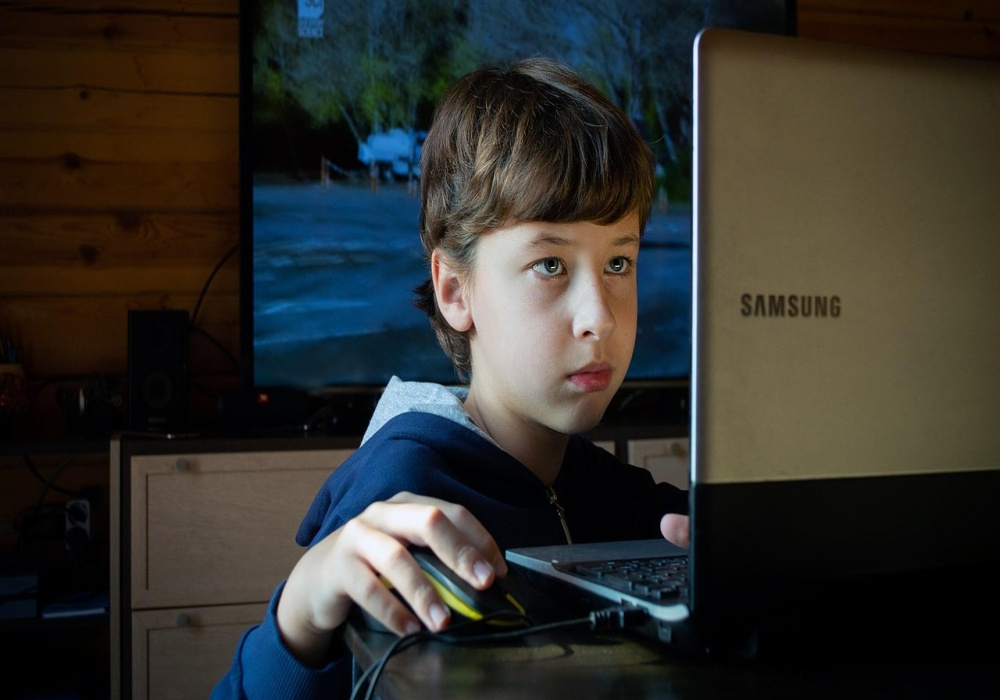
A major new international study has found a strong link between excessive screen time and mental health challenges in adolescents, including rising rates of insomnia, anxiety, and depression. The report, published by the Global Youth Wellness Foundation (GYWF), surveyed 72,000 teenagers aged 13 to 19 across 20 countries, including Bangladesh, the U.S., UK, and Japan. The study revealed that teenagers who spend more than 4 hours a day on social media or smartphones are twice as likely to report symptoms of poor sleep quality, mood swings, and lack of motivation. Digital Overload and the "Always-On" Culture "Teens today are exposed to a constant stream of notifications, comparisons, and content that overstimulates the brain," said Dr. Nafisa Chowdhury, lead researcher on the Bangladesh team. “It disrupts their sleep cycles, reduces face-to-face interactions, and fuels self-esteem issues.” Many teens reported checking their phones immediately before sleeping and even waking up at night to respond to messages or scroll through TikTok and Instagram. Mental Health Crisis in the Digital Age The study found: 34% of respondents reported signs of clinical depression 41% had trouble sleeping more than 3 nights a week 29% felt "chronically anxious" or socially disconnected Girls were more likely to report emotional distress linked to social media use In Dhaka, psychologists at private clinics say they’ve seen a threefold increase in teen patients over the past two years. What Experts Recommend Digital curfews: No screens 1 hour before bed App timers: Set daily limits for entertainment/social platforms Offline time: Encourage outdoor activities or family meals Mental health education: Include digital wellness in school curriculum Government Initiatives Underway In response to the growing concern, Bangladesh’s Ministry of Education is working with health officials to launch a "Safe Screens" campaign in schools, promoting healthy digital habits and offering workshops for both students and parents. “This is a national issue, and we must protect our next generation,” said Dr. Mostafa Kamal, advisor to the National Adolescent Health Program.

Mahidujjaman Tamim, 141 Read, July 13, 2025
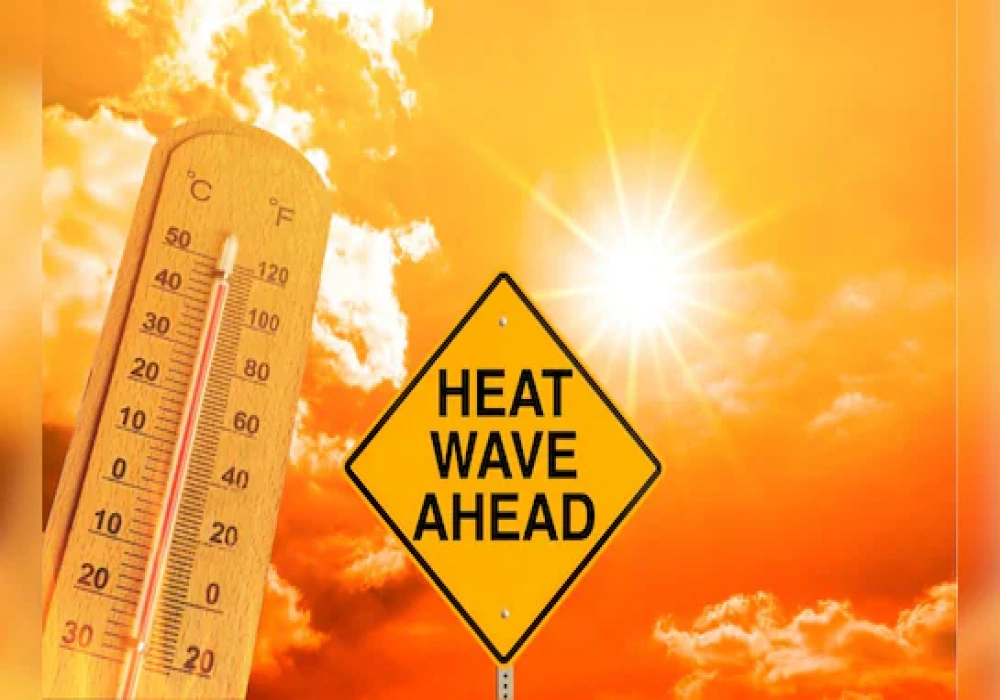
Hospitals across Asia, Europe, and parts of North America are reporting a sharp rise in heat-related illnesses as global temperatures reach record highs this July. Health authorities are issuing urgent heatwave warnings and advising people, especially the elderly and children, to take precautions as climate change fuels more extreme weather events. According to the World Meteorological Organization (WMO), over 60 countries have recorded temperatures above 42°C (107.6°F) in the last two weeks — the highest since 2019. Cities like Delhi, Dhaka, Cairo, and Phoenix are seeing emergency rooms fill up with patients suffering from heatstroke, dehydration, and cardiovascular strain. Vulnerable Populations at Risk The elderly, people with chronic diseases, outdoor workers, and those without access to cooling are especially vulnerable.“We are seeing a rise in severe dehydration, kidney problems, and even deaths due to prolonged heat exposure,” said Dr. Tahmina Rahman, Head of Emergency Medicine at Dhaka Shishu Hospital. In Bangladesh, at least 32 people have died due to heat-related complications in the last month alone, and over 1,500 patients have been treated for heat exhaustion across government hospitals. Governments Respond With Emergency Measures Countries are issuing heatwave alerts, distributing drinking water, and opening "cooling shelters" in public spaces. Bangladesh’s Ministry of Health has launched a hotline for emergency support and is advising schools to adjust class hours or shift to remote learning during extreme heat. “We are urging citizens to stay indoors during peak hours, wear light clothing, and stay hydrated,” said Dr. Abu Nasir, spokesperson for the DGHS. Experts say the current crisis is a warning of what’s to come if global warming is not addressed more aggressively. “Climate change isn’t just an environmental issue anymore — it’s a public health emergency,” warned Dr. Lin Zhang, a climate-health researcher at the University of Toronto. The UN Intergovernmental Panel on Climate Change (IPCC) predicts that by 2030, heatwaves could claim over 250,000 lives annually if current trends continue. What You Can Do: Avoid going out between 12 PM and 4 PM Drink 2.5–3 liters of water daily Use fans, cool cloths, or wet towels Never leave children or pets in parked vehicles Check on elderly neighbors or those living alone If you experience signs of heatstroke (dizziness, dry skin, rapid heartbeat), seek medical attention immediately.

Admin, 142 Read, July 20, 2025

The World Health Organization (WHO) has issued a warning about the sharp rise in lifestyle-related illnesses worldwide, calling for immediate action to combat what experts are calling a "silent epidemic" of preventable diseases. According to a 2025 Global Health Report released this week, non-communicable diseases (NCDs) such as diabetes, high blood pressure, obesity, heart disease, and depression are responsible for nearly 74% of all global deaths — a dramatic increase from previous years. A Crisis Fueled by Modern Living Experts blame modern lifestyles — including sedentary behavior, unhealthy diets, stress, lack of sleep, and excessive screen time — for the growing burden of NCDs. “People are moving less, eating more processed food, and living in high-stress environments,” said Dr. Maria Caruso, WHO’s Director of Global Wellness. “The result is a generation at greater risk of chronic illness at younger ages.” In Bangladesh, recent health data from the Ministry of Health and Family Welfare shows that over 12 million adults are living with diabetes, and cases of high blood pressure among people under 35 have nearly doubled since 2020. Mental Health Under Pressure Alongside physical health concerns, mental health remains a major issue. The pandemic's long-term effects, coupled with economic uncertainty and social media addiction, have driven a steep rise in anxiety and depression. A 2025 survey by BRAC Health found that 1 in 3 young people in urban Bangladesh experience moderate to severe stress, often linked to academic pressure, unemployment, and excessive smartphone use. “Increased screen time, disrupted sleep cycles, and a lack of outdoor activity are major contributors,” explained Dr. Rubina Haque, a psychologist at Dhaka Medical College Hospital. “Many young people are silently struggling.” New Push for Preventive Care In response to these trends, health authorities in many countries are shifting focus from treatment to prevention. Bangladesh’s government is launching new public awareness campaigns promoting physical activity, mental health checkups, and regular screenings for blood pressure and blood sugar. Several schools and workplaces are introducing mandatory fitness breaks, healthy canteens, and digital wellness programs aimed at reducing stress and encouraging healthier living. “Health is no longer just a hospital issue,” said Dr. Kamal Uddin, Director of Community Health at the Directorate General of Health Services (DGHS). “It’s a personal, family, and societal responsibility.” Tech and Telemedicine on the Rise Meanwhile, telemedicine and AI-powered health apps are making basic care more accessible. Platforms like Doctorola and Praava Health are helping patients connect with doctors online, order medicines, and monitor chronic conditions from home. Wearable devices, like smartwatches with health tracking, are also gaining popularity for real-time monitoring of heart rate, sleep, and stress levels. Looking Ahead As the world faces growing health threats — from poor lifestyle habits to environmental pollution — experts stress the importance of early education, community support, and government action. “If we don’t act now, we’ll have a future generation that’s sicker and more dependent on long-term treatment,” warned Dr. Caruso. “But with the right interventions, much of this is still preventable.”

Admin, 135 Read, July 20, 2025

A new study published this week in the British Journal of Sports Medicine reveals that walking just 30 minutes a day can significantly reduce the risk of developing chronic diseases such as heart disease, diabetes, and certain cancers. Researchers from King’s College London followed over 12,000 adults aged between 40 and 70 for a period of 10 years. The study found that those who engaged in brisk walking daily had up to a 25% lower risk of heart-related illnesses compared to those with a sedentary lifestyle. “Walking is one of the simplest and most accessible forms of physical activity, yet its benefits are profound,” said Dr. Amelia White, the lead author of the study. “Our research confirms that even moderate movement each day can have a powerful impact on long-term health.” Other Key Findings: Participants who walked in green or natural environments saw greater mental health improvements. Risk of Type 2 diabetes was reduced by 19% in regular walkers. Those who walked in groups had higher motivation to stay active. Participants who walked in green or natural environments saw greater mental health improvements. Risk of Type 2 diabetes was reduced by 19% in regular walkers. Those who walked in groups had higher motivation to stay active. A Global Trend Health experts worldwide are echoing the message, especially in urban centers where sedentary lifestyles are increasingly linked to health problems. The World Health Organization (WHO) recently emphasized physical activity as a top priority for improving global health outcomes. A new study published this week in the British Journal of Sports Medicine reveals that walking just 30 minutes a day can significantly reduce the risk of developing chronic diseases such as heart disease, diabetes, and certain cancers. Researchers from King’s College London followed over 12,000 adults aged between 40 and 70 for a period of 10 years. The study found that those who engaged in brisk walking daily had up to a 25% lower risk of heart-related illnesses compared to those with a sedentary lifestyle. “Walking is one of the simplest and most accessible forms of physical activity, yet its benefits are profound,” said Dr. Amelia White, the lead author of the study. “Our research confirms that even moderate movement each day can have a powerful impact on long-term health.” Public Health Response In response to the findings, the UK’s Department of Health and Social Care announced plans to launch a new campaign titled “Step Forward: 30 Minutes a Day” to encourage more people to incorporate walking into their daily routine. Dr. Amelia White, the lead author of the study. “Our research confirms that even moderate movement each day can have a powerful impact on long-term health.” A Global Trend Health experts worldwide are echoing the message, especially in urban centers where sedentary lifestyles are increasingly linked to health problems. The World Health Organization (WHO) recently emphasized physical activity as a top priority for improving global health outcomes.

Admin, 133 Read, July 20, 2025

In recent years, Bangladesh has witnessed a concerning surge in lifestyle-related diseases such as diabetes, hypertension, heart disease, and obesity. Health experts and medical professionals are sounding the alarm as these non-communicable diseases (NCDs) are becoming increasingly common among people of all ages, especially in urban areas. The trend indicates a significant shift in the nation’s health landscape, which once was more focused on communicable diseases and infections. According to the Bangladesh Bureau of Statistics and several health studies, one in every three adults is at risk of developing high blood pressure, while diabetes is affecting both middle-aged and younger individuals at an alarming rate. Cardiovascular diseases are now one of the leading causes of premature death in the country. Doctors say this shift is largely driven by rapid urbanization, poor lifestyle choices, and lack of health education. The root causes of this growing health threat are deeply linked to changing lifestyles. Fast food consumption has increased dramatically in the past decade, especially among the youth. Fried items, sugary drinks, and processed snacks have replaced home-cooked meals for many people. At the same time, physical activity has decreased due to technology-driven work and entertainment habits. Office workers spend long hours sitting, children prefer mobile games over outdoor play, and people generally avoid walking even short distances. Stress is another major factor contributing to lifestyle diseases. Busy work schedules, financial pressure, and social expectations are leading to sleep disorders and mental health issues like anxiety and depression. Unfortunately, mental health remains a less talked-about topic in our society, leaving many people untreated and unaware of the connection between stress and physical illness. Doctors are urging people to adopt preventive measures rather than waiting for symptoms to appear. These measures include eating a healthy, balanced diet with more fruits, vegetables, and whole grains; drinking sufficient water; avoiding excessive sugar and salt; and engaging in regular physical activities such as walking, yoga, or exercise. Avoiding smoking and alcohol is also highly recommended. Health campaigns and educational programs are essential to raise awareness across all sections of society. Experts suggest that schools should introduce health and nutrition education from an early stage. Workplaces should encourage short breaks, offer healthy snacks, and promote mental wellness. Government healthcare centers can also play a key role by organizing regular health check-up camps and offering guidance on maintaining a healthy lifestyle. The government has taken some steps, including launching awareness drives and strengthening non-communicable disease units in hospitals. However, more action is needed to reach rural populations and lower-income groups who often have less access to healthcare and information. The rise of lifestyle diseases is not just a medical issue—it’s a social, economic, and national concern. If left unaddressed, it could burden families with high treatment costs, reduce workforce productivity, and increase pressure on the already strained healthcare system. Public health specialists are warning that Bangladesh could face a serious health crisis in the next two decades if preventive steps are not taken now. The message is clear: small daily changes like eating nutritious food, staying physically active, reducing screen time, and managing stress can have a huge impact on long-term health. Now is the time to act, before these silent diseases take a louder toll on our lives.

Admin, 111 Read, June 28, 2025

Mikel Arteta promised to end Arsenal's five-year trophy drought next season after a 1-0 win against Newcastle secured their place in the Champions League.

Admin, 106 Read, July 16, 2025
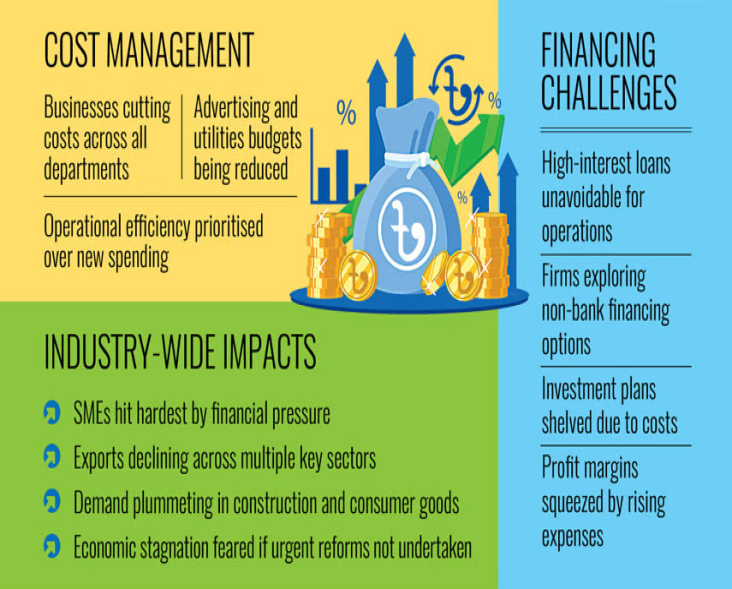
As soon as he hears the news of someone's death, he rushes to the graveyard on horseback with his required tools. Like a special companion on the final journey of a person, the 67-year-old extends his sincere hands. In a heartbreaking twist of fate, the faithful companion of gravedigger Manu Mia was killed yesterday, while Manu himself remains hospitalised, battling for his life. The 65-year-old Manu Mia, a familiar figure in the community for over four decades, has long been known for his humble service digging graves and transporting bodies in his modest wooden cart, drawn by his beloved horse, Shonar Pakhi. Residents say the bond between Manu and the gentle brown mare was unlike any they had seen—a relationship forged through hardship, routine, and deep affection. Manu was admitted to the hospital last week following complications from a respiratory illness. “He kept asking about the horse even from the hospital bed,” said his nephew, Rafique Mia. “He didn’t want her left alone.” Tragedy struck yesterday morning when Shonar Pakhi was struck and fatally injured by a speeding motorbike near the village graveyard. Witnesses said the horse had broken loose from her makeshift rope tether and was calmly walking toward the graveyard entrance, perhaps out of instinct. “She was not just a horse; she was family,” said Rahima Begum, a long-time neighbour. “That animal had pulled hundreds of funeral carts, always steady, always calm. To see her die like this, without her owner even knowing yet—it’s just too much.” The rider of the motorbike fled the scene, and police say they are investigating the hit-and-run incident. So far, no arrests have been made. News of the horse’s death has not yet been shared with Manu, who remains in critical but stable condition. Family members are struggling with how to break the devastating news. Locals have expressed shock and sorrow, with many calling for better enforcement of road safety rules in the area. A small vigil was held near the graveyard last night, where residents lit candles and shared memories of the old gravedigger and his loyal horse. “Manu Mia’s work was never glamorous, but he did it with dignity,” said Abdul Karim, a community elder. “Now, while he fights for his life, he has lost the only creature who stood by him through every sorrowful journey. It’s a tragic chapter in a quiet man’s life.”

Admin, 172 Read, July 20, 2025

Tourism Rebounds Strongly in 2025 as Travelers Seek New Adventures Post-Pandemic The global tourism industry has entered a period of remarkable recovery in 2025, following several years of pandemic-related disruption. With the lifting of most travel restrictions, renewed consumer confidence, and a deep craving for exploration, tourism has surged across continents. Experts say this rebound is not merely a return to old patterns, but a reshaping of how people travel, what they value, and how the industry responds. International Travel Reaches Record Levels Countries around the world have seen a significant rise in international arrivals. Popular destinations like France, Thailand, Italy, and Mexico are reporting visitor numbers that not only match but exceed pre-pandemic figures. Airports are bustling, cruise ships are sailing at full capacity, and global airlines have reinstated and even expanded routes. This surge is being driven by both leisure and business travelers eager to reconnect with the world. Tourists Demand Deeper, More Meaningful Experiences Travelers in 2025 are no longer satisfied with generic sightseeing tours. There is a growing demand for immersive experiences—whether it's living with a local family in a remote village, joining a traditional cooking class, or volunteering in conservation projects. This shift reflects a deeper desire for cultural understanding, personal growth, and making lasting memories, rather than just collecting passport stamps. Technology Transforms the Travel Experience Advancements in technology have revolutionized every stage of the travel journey. From AI-powered itinerary planners and mobile boarding passes to biometric check-ins and real-time translation apps, modern travelers are enjoying unprecedented convenience. Virtual reality previews and augmented reality tours are also helping travelers plan smarter and engage more deeply with destinations. Sustainability Becomes a Core Concern Post-pandemic travelers are more environmentally conscious than ever before. Eco-tourism has moved from niche to mainstream, with tourists choosing green-certified hotels, carbon offset flights, and low-impact transport options. Many are also seeking out destinations that emphasize environmental protection, wildlife preservation, and sustainable development. Tour operators and governments are responding by investing in responsible travel infrastructure and education. Flexible Booking and Safety Measures Still Matter Despite the easing of global health threats, travelers remain cautious. Flexible booking policies, free cancellations, and comprehensive travel insurance are considered essential. Tourists also favor destinations with clear safety protocols and reliable healthcare systems. These preferences are shaping the policies of airlines, hotels, and tour agencies, which now compete not only on price and location but on traveler assurance. Domestic and Regional Tourism Remains Strong While international travel has boomed, domestic tourism has also seen steady growth. Many travelers are discovering hidden gems within their own countries—national parks, cultural heritage sites, and lesser-known towns—thanks to local government campaigns and improved transportation networks. Weekend getaways, road trips, and regional cruises are more popular than ever, helping stimulate local economies and reduce pressure on overcrowded hotspots. Travel Trends Are Redefining Industry Standards. From "workcations" that blend business with leisure to solo female travel and multi-generational family trips, the diversity of travel preferences is expanding. Social media continues to influence destination choices, while personalized travel experiences—tailored by data and AI—are raising expectations across the industry. The result is a tourism ecosystem that is more agile, inclusive, and innovative.

Admin, 394 Read, July 26, 2025

Why Train Travel Is the Future of Sustainable Tourism In the face of growing environmental concerns and a global push for greener alternatives, train travel has emerged in 2025 as one of the most promising solutions for sustainable tourism. With lower emissions, rising consumer interest in eco-conscious travel, and significant investment in modern rail infrastructure, trains are redefining the way people explore the world. More than a nostalgic throwback, rail journeys today offer comfort, speed, and environmental responsibility—qualities that align with the values of the modern traveler. Here are the key reasons why train travel is gaining momentum as the future of sustainable tourism: Lower Carbon Emissions and Environmental Impact Trains produce significantly fewer greenhouse gas emissions compared to airplanes or cars. Electric and high-speed rail systems, now common in many parts of Europe and Asia, offer one of the cleanest forms of long-distance transportation. As climate change concerns grow, both tourists and governments are recognizing rail’s role in reducing the carbon footprint of global travel. Train stations are often located in the heart of cities and towns, directly connecting tourists with local businesses, markets, and attractions. This helps distribute tourism income more evenly—particularly to smaller or rural communities that are bypassed by major airlines. The result is a more inclusive, grassroots tourism model that benefits a wider range of people. Expansion of High-Speed Rail Networks Countries around the world are heavily investing in high-speed rail infrastructure. Networks connecting major cities and even cross-border regions are making train travel faster and more convenient than ever. In many cases, high-speed trains now rival or outperform air travel when total journey time—including airport transfers and security—is considered.Trains offer a slower, more mindful travel experience, allowing passengers to enjoy scenic routes, changing landscapes, and cultural transitions along the way. Unlike flights, which are often stressful and rushed, rail journeys provide spacious seating, onboard amenities, and uninterrupted views, turning the journey itself into part of the adventure. Technological Advancements Enhance the Journey Modern rail travel is enhanced by digital ticketing, real-time updates, mobile booking apps, and AI-powered route planning. Wi-Fi connectivity and smart onboard systems are turning trains into fully connected environments that suit the needs of both leisure and business travelers. These innovations help make train journeys smoother, safer, and more enjoyable. Today’s travelers—especially younger generations—are more environmentally and socially conscious. Many actively choose lower-emission options and seek authentic, slower-paced experiences that align with their values. Trains match this shift in mindset, offering a responsible way to explore the world without sacrificing comfort or convenience. In Summary Train travel in 2025 is no longer just a practical alternative—it is a symbol of the tourism industry's transformation toward sustainability. With growing awareness of climate change, advancements in rail technology, and a collective desire for meaningful, lower-impact journeys, trains are on track to become the preferred mode of travel for the environmentally responsible tourist. As the world looks toward greener horizons, the rails are leading the way.

Admin, 246 Read, July 20, 2025

Hidden Gems in Southeast Asia You’ve Never Heard Of While millions flock to Southeast Asia every year to explore tourist magnets like Bali, Bangkok, and Halong Bay, the region also hides a treasure trove of lesser-known destinations waiting to be discovered. In 2025, as more travelers seek authentic, off-the-beaten-path experiences, these hidden gems are gaining quiet popularity. These spots offer untouched landscapes, rich local cultures, and fewer crowds—ideal for travelers craving depth, solitude, and meaningful adventures. Here are some of Southeast Asia’s best-kept secrets that deserve a place on your next itinerary: Ban Gioc Waterfall, Vietnam Tucked away on the northern border of Vietnam, Ban Gioc Waterfall is one of the most breathtaking natural wonders in Asia—yet remains largely unknown to international tourists. Surrounded by lush limestone mountains and rice paddies, this massive waterfall straddles the border with China and offers a peaceful, untouched atmosphere. Visitors can take bamboo rafts near the base, explore nearby caves, and immerse themselves in the slow-paced rural life of Cao Bang Province. While Langkawi and Penang steal the spotlight, Bagan Lalang is a serene coastal village just an hour from Kuala Lumpur that offers calm beaches, seafood feasts, and spectacular sunsets without the tourist crowds. It’s the perfect weekend escape for travelers seeking local charm and affordable luxury. The overwater villas here provide a unique stay experience, and nearby mangrove forests offer eco-tourism activities like kayaking and birdwatching. Champasak, Laos Nestled along the Mekong River in southern Laos, Champasak is a tranquil town rich in history and spiritual beauty. Home to the ancient Khmer temple complex of Wat Phou—a UNESCO World Heritage Site often compared to Angkor Wat but with far fewer tourists—Champasak offers a unique window into Southeast Asia’s pre-Angkorian past. The town is also known for its French colonial architecture, riverside cafes, and laid-back pace of life. Often overshadowed by Boracay and Palawan, Siquijor is a mystical island in the central Philippines famous for its folklore, healing traditions, and crystal-clear waters. With hidden waterfalls, white-sand beaches, coral reefs, and firefly-filled mangrove forests, the island offers a magical blend of nature and local legend. Visitors can snorkel, motorbike across the island, or even visit traditional healers known as “mambabarang.” Tumpak Sewu, Indonesia Often called the “Niagara Falls of Indonesia,” Tumpak Sewu is a stunning horseshoe-shaped waterfall located in East Java, surrounded by jungle cliffs and volcanic terrain. Unlike the more visited Mount Bromo or Bali beaches, this hidden paradise requires a trek through dense forest and river crossings—making the reward even more satisfying. It’s ideal for adventurers, photographers, and anyone wanting to experience Indonesia’s raw natural power up close. Located at the southernmost tip of Myanmar, Kawthoung is a quiet port town and the gateway to the unspoiled Mergui Archipelago—an island chain of over 800 largely untouched islets. The area is ideal for sailing, diving, and discovering secluded beaches that feel truly remote. With few visitors and an emerging eco-tourism scene, Kawthoung remains one of the last frontiers for explorers looking for solitude and oceanic beauty. In Summary Southeast Asia continues to surprise travelers with its diversity, depth, and hidden wonders. As the travel landscape evolves, these lesser-known destinations are proving that you don’t need crowds or famous landmarks to have an unforgettable experience. Whether you're seeking nature, culture, adventure, or reflection—these secret spots offer the essence of Southeast Asia in its purest, most authentic form.

Admin, 167 Read, July 20, 2025

The Smart Way to See the World: How AI Is Revolutionizing Travel In an age where time is precious and wanderlust runs deep, artificial intelligence (AI) is becoming the ultimate travel companion. Gone are the days of juggling dozens of browser tabs, flipping through outdated guidebooks, or relying on guesswork. In 2025, planning a trip is as effortless as asking the right question—and letting AI do the rest. From the way we search for destinations to how we experience them in real time, AI is reshaping travel into something smarter, faster, and deeply personal. Here’s how it’s changing the game: Personalized Planning at Lightning Speed AI takes your travel preferences—budget, travel style, past trips, and even your online behavior—and instantly curates custom itineraries. Whether you're a solo backpacker or a family planner, platforms like Google Travel and Hopper analyze real-time data to recommend the best times to fly, where to stay, and what to do—tailored just for you. Need to change a flight, book a last-minute hotel, or file a baggage complaint? AI-powered chatbots now handle customer service around the clock—no more hold music or call center frustration. These virtual agents respond in seconds, speak your language, and are trained to solve real issues efficiently. Seamless Experiences Beyond Booking AI continues to assist even after you’ve boarded the plane. From live translation apps and AR-guided tours to facial recognition at airports, tech-enhanced journeys are smoother and more immersive. Your smartphone becomes your personal concierge, navigator, and translator—all powered by intelligent systems. While AI makes travel more efficient, it hasn’t replaced the value of human intuition. For complex trips or once-in-a-lifetime experiences, many still trust human travel advisors. But for most travelers, AI offers freedom from stress and planning fatigue—without losing the joy of discovery. The Future Is Here AI isn’t just helping us travel—it’s redefining how we connect with the world. With smart tools at your side, the hardest part of your next adventure might just be deciding where to go.

Admin, 192 Read, July 20, 2025
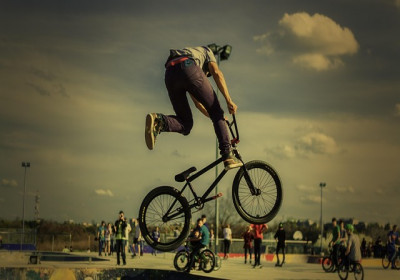
They say some places feel like a dream even when you’re wide awake—and for me, Cappadocia, Turkey was exactly that. From the moment I arrived in the quiet town of Göreme, nestled among soft volcanic rock formations, I knew this trip would be different. Not rushed. Not crowded. Just deeply personal and soul-refreshing. And it started—quite literally—with a hot air balloon ride at dawn. A Sky Full of Magic Waking up at 4:30 a.m. wasn’t easy, but the silence of the pre-sunrise sky made every yawn worth it. As our balloon gently rose, the horizon began to blush with orange and pink. Below us, hundreds of fairy chimneys, ancient caves, and rock-carved churches glowed in soft morning light. And above? Dozens of other balloons floated quietly—no noise, no chaos, just the soft sound of wind and the occasional whoosh of fire. It wasn’t a ride—it was meditation in the sky. Underground Cities & Ancient Souls Later that day, I explored Derinkuyu, one of Cappadocia’s underground cities, stretching nearly 200 feet deep. Walking through narrow tunnels and ancient ventilation shafts, I imagined how thousands once hid here during invasions. There’s something humbling about standing in a place where people lived, survived, and prayed without sunlight—yet with hope. Staying in a Cave Hotel (Yes, Really) What made my trip even more surreal was sleeping in a cave. I stayed at a cozy cave hotel with stone walls, warm lighting, and a rooftop terrace perfect for stargazing. The temperature inside was always cool, even when the sun baked the valley outside. At night, sipping Turkish tea under a sky full of stars and the silhouette of mountains in the distance—I felt completely present. No noise. No notifications. Just peace. Food, People, and Unexpected Moments The people of Cappadocia are gentle and proud of their heritage. Every shop owner I met shared a story—about how their family carved stones, or grew apricots in the valley. I ate manti (Turkish dumplings), sipped apple tea, and tried testi kebab—a meat stew cooked inside a clay pot, which the waiter cracked open right in front of me with a tiny hammer.Every meal felt like a celebration, even when I was alone. Why You Should Go Cappadocia isn’t a place for flashy travel photos—although it’s impossible to take a bad one. It’s a place for quiet joy, ancient echoes, and reconnecting with the part of you that wants to slow down. If you’ve been looking for a sign to disconnect from the digital world and lose yourself in the sky, in history, and in simple human connection—this is it. Travel Tips: Best time to visit: April–June or September–October (less heat, fewer crowds) Bring warm clothes for early mornings—even in summer Book balloon rides in advance—they sell out fast! Try to stay in Göreme or Ürgüp for the best cave hotel experience Final Thought: Cappadocia didn’t just give me a vacation. It gave me stillness, wonder, and a reminder that the world is wide—and we are small, but blessed to explore it.

Admin, 153 Read, July 20, 2025
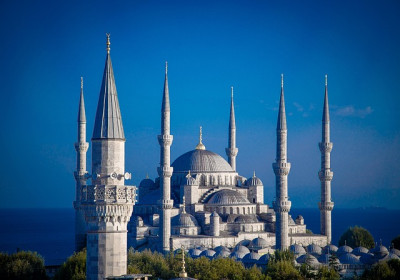
There are some places in the world that don’t look real — where landscapes feel borrowed from dreams and time flows a little slower. Cappadocia, in the heart of Turkey, is one such magical land. Last month, I had the chance to spend a few days exploring its surreal valleys, ancient cave dwellings, and colorful skies, and I’m still not over it. 🎈 Sunrise in the Sky: The Iconic Hot Air Balloon Ride Waking up at 4:30 a.m. may not sound fun on a vacation, but trust me, it’s worth it. As we ascended gently in our hot air balloon, the sky transformed into a canvas of pinks and golds. Floating above the fairy chimneys and undulating hills of Göreme was an experience I’ll never forget. It's quiet up there — almost sacred. No noise, no rush, just the gentle whoosh of the burner and the feeling of absolute freedom. 🏞️ Exploring the Valleys on Foot After touching down, I hiked through the Rose Valley and Love Valley. These trails are beginner-friendly but still feel like real adventures. Sculpted over millennia by wind and rain, the rock formations are almost otherworldly. Along the way, I stumbled upon centuries-old churches carved into cliffs, complete with faded frescoes — living proof of Cappadocia’s deep Christian history. 🏠 Sleeping in a Cave Hotel Yes, it’s as cool as it sounds! I stayed at a cave hotel in Uçhisar, where modern luxury meets ancient architecture. Thick stone walls kept the room cool, and I loved the cozy, candle-lit ambiance. At night, I’d sit on the terrace sipping Turkish tea, watching stars scatter across the sky — the kind of peaceful moment that stays with you long after you’ve gone. 🍽️ Food for the Soul Turkish cuisine is an adventure in itself. Every meal was a celebration — from slow-cooked Testi Kebab served in a clay pot to sweet, flaky baklava and rich, foamy Turkish coffee. Don’t miss trying the local wines either; Cappadocia is a hidden gem for wine lovers. 🛍️ Little Things, Big Memories On my last day, I wandered through Avanos, a town known for its pottery. I took a pottery class and made a (slightly lopsided) vase. It wasn’t perfect, but it’s now my favorite souvenir — a reminder that travel isn’t always about ticking off famous sights. It’s about stories, people, and little imperfect moments that turn into perfect memories. ✈️ Final Thoughts If you’re dreaming of a destination that feels like another planet, that feeds your soul and slows down time, Cappadocia is calling. Whether you’re traveling solo, with a loved one, or with friends, this Turkish gem promises an unforgettable experience.

Admin, 124 Read, July 20, 2025

The Forest Awakens the Senses Stepping into the forest is like entering a different world—calm, alive, and rich with sensory wonder. The earthy scent of moss and damp leaves fills the air, while golden sunlight streams through the branches above, creating dancing patterns on the forest floor. With each step, a new sound joins the woodland symphony: the rustling of leaves, the flapping of wings, the chirping of unseen birds. You might hear the soft tapping of a woodpecker in the distance, or see a squirrel darting up a tree with surprising agility. Small Wonders Hide in Plain Sight Every corner of the forest holds a quiet marvel. A spider’s web glistens with morning dew like a string of tiny pearls. Mushrooms push up through fallen logs in wild, unexpected colors—bright red caps, golden shelves, or soft white domes. A careful observer might spot an owl resting high on a branch, or find deer tracks pressed into the soft mud near a stream. These fleeting moments remind us how nature’s beauty lies not only in grandeur but in the smallest, most delicate details. Place for Reflection and Renewal More than just a walk, the forest offers space for the mind to breathe. The crunch of leaves underfoot, the rustle of the canopy above, and the gentle hush all around create the perfect backdrop for self-reflection. Many people find clarity here—writers spark ideas, artists find inspiration, and anyone burdened by modern life can feel themselves slowing down, reconnecting with their thoughts. It's no surprise that forest bathing (or shinrin-yoku in Japan) is a popular practice for mental well-being. Reminder of Our Place in Nature Walking through the forest reminds us that we are part of something much larger and older than ourselves. From the insects that pollinate to the trees that breathe for us, everything is connected. These ancient ecosystems deserve respect and protection. When you leave the forest—whether after an hour or a full day—you carry with you a quiet reverence, a deeper gratitude, and often a desire to return. As Henry David Thoreau once said, “I went to the woods because I wished to live deliberately.”

Admin, 114 Read, July 20, 2025

The beach is a treasure trove of seashells, each one unique in its shape, color, and texture. Embark on a beachcombing adventure, stooping down to collect these oceanic gems as you stroll along the shoreline. Marvel at their delicate beauty, appreciating the intricate patterns and shades they exhibit. Keep an eye out for fascinating marine life as well, such as schools of colorful fish darting through the waves, curious crabs scuttling along the sand, and the graceful dance of dolphins in the distance. These encounters with coastal creatures remind us of the rich biodiversity that thrives beneath the ocean's surface. The Timeless Allure of the Beach: Nature’s Sanctuary by the Sea The beach, a captivating and idyllic destination, enchants visitors with its ever-changing charm and natural rhythm. Firstly, the salty breeze carries with it a sense of freedom, filling your lungs with freshness and awakening the senses. Secondly, the vast horizon stretching endlessly over the ocean evokes a feeling of peace and perspective, reminding us of how small yet connected we are to the world. Thirdly, the beach is a playground of sensory pleasures—warm sun on the skin, soft sand between the toes, and the refreshing splash of seawater. Fourthly, it inspires creativity and joy, where sandcastles rise from imagination and footprints mark moments of fleeting presence. The Everlasting Magic of the Beach The beach, a serene and captivating haven, draws people in with its ever-shifting beauty and peaceful rhythm. To begin with, the salty ocean breeze breathes life into the soul, carrying a sense of freedom that awakens the senses and clears the mind. Next, the endless horizon—where sky meets sea—invites quiet reflection, offering perspective and a reminder of our place in the vastness of nature. Third, the beach delights the senses: the warmth of sunlight on your skin, the soft texture of sand beneath your feet, and the cool, playful touch of waves lapping the shore. Fourth, it sparks creativity and childlike joy, as castles rise from sand, shells become treasures, and footprints mark fleeting memories. Conclusion In a world that often moves too fast, the beach remains a timeless retreat—a place where nature whispers, time slows, and the soul finds rest. Its ever-changing landscape offers more than just a destination; it offers an experience of renewal, joy, and connection. Whether it's the serenity of dawn, the playfulness of midday, or the glow of a seaside sunset, the beach continues to remind us of life’s simple, enduring wonders.

Admin, 114 Read, July 20, 2025
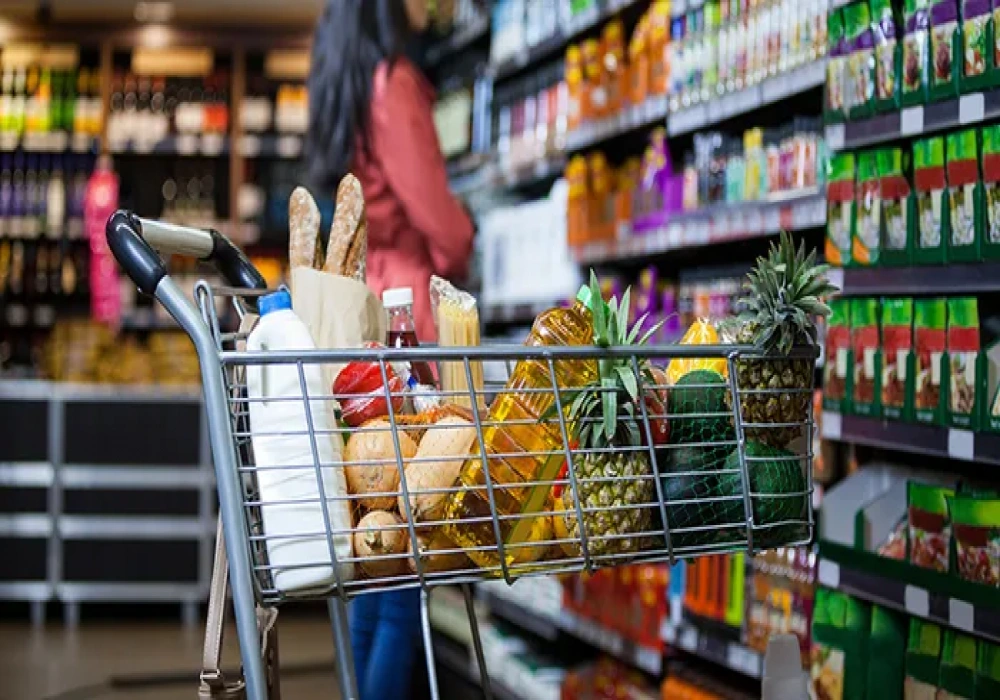
As grocery bills climb to record highs across continents, families are being forced to make painful choices. From Dhaka to Detroit, rising food prices have become a universal hardship, driven by a tangled web of global supply chain bottlenecks, extreme climate events, and geopolitical turmoil. Recent figures from the United Nations Food and Agriculture Organization (FAO) show that global food prices have risen nearly 23% year-over-year, marking one of the sharpest spikes in over a decade. Essential staples such as rice, wheat, cooking oil, and dairy are at the center of the storm, with developing economies bearing the worst of the impact. Food Inflation Snapshot: Category-Wise Price Surge Food Category Avg. Global Price Increase (12 Months) Key Drivers Grains (Rice, Wheat) +18% War in Ukraine, export bans Vegetables +25% Floods, droughts, labor shortages Dairy Products +15% High feed prices, energy costs Meat (Beef, Poultry) +22% Feed supply shortage, transport delays Cooking Oil +30% Indonesia’s ban, climate disasters What’s Causing the Crunch? 1. Supply Chain Disruptions COVID-19 aftershocks are still rippling through global logistics. Freight backlogs at ports, lack of refrigerated containers, and strikes among transport workers have delayed food delivery worldwide. “Even if you have food ready to ship, getting it from farm to table is twice as expensive and twice as slow,” says Prof. Arun Mitra, an economist at the University of Melbourne. 2. Geopolitical Tensions The Russia–Ukraine war has disrupted grain exports from two of the world’s largest producers. Together, they account for over 30% of the global wheat supply. Trade sanctions and naval blockades have further restricted shipments. Meanwhile, India’s curbs on rice exports to control domestic prices have squeezed markets across Africa and Southeast Asia. 3. Climate Change and Natural Disasters Flooding in Pakistan and Bangladesh wiped out rice and vegetable crops. Droughts in the Horn of Africa and heatwaves in Europe and Canada reduced wheat and maize yields. Wildfires in South America damaged farmland and disrupted coffee and soybean supply chains. 4. Currency Depreciation For many nations, the value of local currency has plummeted against the US dollar, making food imports even more expensive. In Bangladesh, the taka has lost nearly 18% of its value in two years, making oil, lentils, and dairy imports costlier than ever before. On the Ground: How Families Are Coping Rokeya Begum, a 39-year-old garment worker in Narayanganj, says, “Last year, I could afford fish three times a week. Now it’s once, maybe twice. Eggs and vegetables are also becoming luxuries.” In the U.S., middle-class families are increasingly relying on bulk-buying clubs and discount stores, while food bank demand is up 27% from the previous year. Across Africa, millions face the risk of acute food insecurity, with humanitarian agencies calling for urgent international aid. According to World Food Programme (WFP), over 345 million people globally are now experiencing "acute hunger", up from 282 million last year. What’s Being Done? Food subsidies in countries like Egypt, Indonesia, and Bangladesh. Price caps on essentials like onions, flour, and edible oils. Cash support to vulnerable families via mobile wallets. Investing in climate-resilient agriculture. Building regional food reserves to withstand export shocks. Strengthening infrastructure for cold chains and food storage. Diversifying trade routes and food sources. Expert Voices “Without bold reforms and global coordination, we risk food inflation becoming the new normal,” says Dr. Momena Alam of BRAC University’s Food Security Research Centre. “Poorer nations will suffer disproportionately. We must treat food not just as a market product but as a human right,” adds David Nabarro, WHO Special Envoy on Food Systems. The Road Ahead: Key Questions Will weather conditions stabilize in key growing regions? Can trade wars and protectionism be dialed back? How fast can logistics networks be rebuilt? Will richer nations support the food needs of vulnerable economies? Until these answers emerge, global households will continue to face a painful question at the checkout counter: How much food can I afford today?

Admin, 146 Read, July 20, 2025

As the United States grows more culturally diverse, so too does its taste in food. From the streets of New York City to the suburbs of Texas and the coasts of California, Americans are embracing a new era of global cuisine, turning everyday dining into a cultural experience that reflects the country’s expanding multicultural identity. Driven by immigration, international travel, and a digitally connected generation of food lovers, the American food landscape is becoming a vibrant melting pot of flavors, ingredients, and cooking techniques. Dishes once considered exotic — like Korean bibimbap, Ethiopian injera, Peruvian ceviche, or Filipino adobo — are now readily available in mainstream supermarkets, food trucks, and upscale restaurants alike. According to a 2025 report by the National Restaurant Association, more than 68% of Americans say they regularly try foods from different cultures, and 4 out of 5 restaurants in major cities now offer menus that include international items or fusion dishes. This surge of interest in global flavors is reshaping the way food is prepared, marketed, and enjoyed in the U.S. Chef Marcus Legrand, a James Beard Award winner and owner of “Gathered Table” in Los Angeles, says the change is not just about taste, but about connection. “People want to eat stories now,” he says. “When they bite into Thai curry or West African jollof rice, they’re connecting with a culture, a history — it’s not just food, it’s a journey.” Streaming platforms, food blogs, and social media influencers are also accelerating this trend. Shows like Chef’s Table and Street Food on Netflix have introduced global cuisines to millions of viewers, while TikTok and Instagram are filled with short, viral videos that celebrate everything from Japanese bento boxes to Turkish street kebabs. Restaurants and food entrepreneurs are adapting quickly. Ghost kitchens — delivery-only food businesses — are now launching entire brands around niche global dishes like Vietnamese pho, Jamaican jerk chicken, or Malaysian laksa. At the same time, grocery stores are expanding their international sections to include a wider variety of spices, sauces, and ready-made meals from Asia, Africa, Latin America, and the Middle East. Health and sustainability are also influencing the movement. Many global diets are plant-forward, rich in whole grains, legumes, vegetables, and natural oils. As Americans grow more conscious of health and climate change, traditional Mediterranean, Japanese, and South Indian meals are gaining recognition for being both nutritious and environmentally sustainable. However, with the excitement also comes responsibility. Cultural appropriation in food — when recipes or cuisines are taken without respect or acknowledgment of their origins — remains a sensitive topic. Many chefs and restaurateurs are emphasizing authenticity, collaboration, and credit, working directly with immigrant communities to honor and elevate their culinary heritage. Food festivals, pop-up events, and cross-cultural collaborations are becoming key ways to celebrate this diversity. Events like the New York City International Food Bazaar or the Taste of Nations Festival in Chicago bring together chefs, home cooks, and families from around the world to share food, stories, and community. As the American palate continues to expand, experts say global cuisine is no longer a trend — it's the new normal. What was once labeled “ethnic food” is now simply food. In this age of openness and exploration, the future of food in America looks deliciously diverse — a reflection not just of what we eat, but of who we are.

Admin, 143 Read, June 28, 2025

In recent years, the farm-to-table movement has gained powerful momentum across the United States, transforming how restaurants source their ingredients and how consumers think about their meals. What began as a niche trend in a few organic cafés has evolved into a widespread commitment to local, seasonal, and sustainable food sourcing—one that’s influencing both urban eateries and rural diners alike. Farm-to-table, also known as “farm-to-fork,” emphasizes the use of fresh, locally grown produce, meats, and dairy directly sourced from farmers, ranchers, and artisanal producers. The goal is simple: to shorten the supply chain, reduce the carbon footprint of food transportation, and ensure the highest quality ingredients reach the plate. Cities like Portland, Austin, and San Francisco have become leading hubs of this movement, with restaurants highlighting the origins of their ingredients on menus. Diners are increasingly choosing establishments that value transparency, ethical farming practices, and seasonality. From small bistros to fine-dining institutions, chefs are building relationships with local growers and crafting menus that change weekly or even daily depending on what’s available. Chef Rachel Dawson, owner of “Meadow & Mill” in Vermont, explains the appeal: “When I plan a menu, I don’t start with recipes. I start with what the farmers have picked that morning. That’s the beauty of it—freshness you can taste, and a connection to the land that’s becoming rare in today’s food system.” Beyond taste and ethics, the movement is also tied to health. Studies show that locally grown fruits and vegetables tend to retain more nutrients due to shorter transportation and storage times. Without the need for chemical preservatives or artificial ripening agents, the food remains closer to its natural state, appealing to health-conscious eaters.The COVID-19 pandemic further accelerated the trend as supply chain disruptions made consumers and restaurants alike more aware of the vulnerabilities of global food logistics. During lockdowns, many turned to local farms, community-supported agriculture (CSA) boxes, and farmers’ markets for their food needs. That momentum has carried over into 2025, with more restaurants committing to long-term partnerships with local producers. Government support has also played a role. Several states now offer grants and incentives for restaurants that source ingredients locally, while educational institutions and hospitals are increasingly adopting farm-to-school and farm-to-institution models. These programs not only benefit public health but also provide economic support to small and mid-sized farmers. However, the movement is not without challenges. Weather variability, limited supply during off-seasons, and higher costs can make it difficult for some restaurants to maintain a fully local menu. But many chefs view these challenges as opportunities for creativity. Winter menus may feature preserved vegetables, pickled goods, and root crops, while summer menus highlight berries, tomatoes, and fresh herbs. Consumers, too, are becoming more flexible and educated about seasonality. The expectation of year-round strawberries or imported avocados is gradually giving way to excitement about what’s in season and grown close to home. Food bloggers, nutritionists, and influencers are playing a major role in promoting this shift in food culture. As the farm-to-table philosophy continues to spread, it is influencing everything from school lunches to corporate cafeterias. Experts believe the movement will play a key role in building a more sustainable, resilient, and health-focused food system for the future. Whether you’re dining out or cooking at home, the next time you bite into a crisp apple or a farm-fresh egg, you might just be tasting the future of American food.

Admin, 139 Read, July 20, 2025

Across the United States, the culinary landscape is experiencing a dynamic transformation fueled by a growing interest in exotic foods and ingredients from every corner of the globe. This trend is reshaping menus in restaurants, inspiring home cooks, and encouraging chefs to experiment with bold new flavors that excite the adventurous American palate. In major cities like New York, Los Angeles, and Miami, diners are increasingly seeking out unique culinary experiences that introduce them to ingredients and dishes they may never have encountered before. Exotic foods such as sea cucumbers, jackfruit, edible flowers, and fermented delicacies are no longer niche items but are becoming popular staples in many trendy eateries. One notable example is the rise of jackfruit as a versatile plant-based meat alternative. Native to South and Southeast Asia, jackfruit’s texture and ability to absorb spices make it a popular substitute in vegan and vegetarian versions of traditional meat dishes like pulled pork sandwiches and tacos. Its popularity has surged due to growing consumer awareness of plant-based diets and sustainability concerns. Fermented foods, long celebrated in many Asian and European cultures, are also gaining ground in the U.S. market. Items like kimchi, natto, and miso are prized for their health benefits, particularly for gut health, and are now common in fusion dishes and health-conscious menus. Restaurants often feature kimchi fried rice, miso-glazed fish, and natto-inspired sauces, blending tradition with modern culinary innovation. Edible flowers and herbs are another exotic trend adding color and aroma to dishes. Flowers like nasturtiums, violets, and marigolds are used to garnish salads, desserts, and cocktails, elevating the dining experience visually and gastronomically. Mixologists have also embraced exotic botanicals to create unique flavor profiles in craft cocktails. Seafood lovers are exploring exotic species such as octopus, sea urchin, and abalone, which are prized for their delicate flavors and textures. These ingredients are often featured in high-end sushi bars and seafood restaurants, attracting diners eager to try luxurious and uncommon delicacies. Food festivals celebrating international cuisine have become platforms for showcasing exotic food trends. Events such as the “Global Taste Fest” in Los Angeles highlight dishes from Africa, South America, and Asia, giving Americans a chance to experience authentic flavors prepared by chefs from those regions. These festivals foster cultural appreciation and promote the diversity of the American food scene. Despite the excitement around exotic foods, experts caution that consumers should be mindful of sourcing and preparation. Sustainable harvesting and ethical practices are critical to ensuring these ingredients remain available without harming ecosystems. Moreover, proper preparation is necessary to ensure safety, as some exotic foods require special handling or cooking techniques. Retailers have responded to demand by expanding the availability of exotic ingredients through specialty markets and online stores. This accessibility enables home cooks to experiment with recipes inspired by global cuisines, further integrating exotic foods into everyday American cooking. The enthusiasm for exotic foods aligns with broader trends emphasizing culinary adventure, wellness, and sustainability. As Americans continue to explore new tastes and traditions, the food industry is poised to innovate, blending heritage with contemporary preferences to create exciting new dining experiences. For those eager to try exotic foods, food experts recommend starting with small portions and trusted establishments that prioritize quality and authenticity. Cooking classes and cultural food tours can provide valuable insights into the origins and proper preparation of these ingredients, making the culinary journey both enjoyable and educational.As the appetite for exotic foods grows, the American culinary scene will likely become even more vibrant and diverse, offering endless opportunities for discovery and enjoyment.

Admin, 139 Read, July 20, 2025

In recent years, American food lovers have been embracing an ever-growing fascination with exotic and unusual foods from around the world. From edible insects to rare fruits and unique seafood delicacies, adventurous diners in cities across the United States are seeking out new flavors and culinary experiences that challenge the traditional palate. Restaurants specializing in exotic cuisine have been popping up in metropolitan areas such as New York, Los Angeles, Miami, and Chicago, attracting food enthusiasts eager to try dishes that go beyond the familiar. According to a recent survey by the National Restaurant Association, nearly 40% of American diners say they are willing to try exotic foods at least once a year, and that number has steadily increased over the past decade. One of the most talked-about trends is the inclusion of insects, often referred to as “entomophagy,” in gourmet dishes. Crickets, mealworms, and grasshoppers are being incorporated into protein bars, snacks, and even fine dining menus. Nutritionists praise insects for their high protein content, sustainability, and low environmental impact compared to traditional livestock. Chefs like Alex Gomez of “Bug Bistro” in San Francisco have been pioneering creative recipes such as cricket flour pancakes and roasted grasshopper tacos, which are surprisingly well received. Exotic fruits and vegetables have also gained popularity among health-conscious consumers. Ingredients like dragon fruit, durian, rambutan, and black garlic are making their way into smoothies, salads, and sauces. These ingredients are not only valued for their unique flavors but also for their high antioxidant and vitamin content. Specialty grocery stores and farmers’ markets now regularly stock these items, making them more accessible to the average consumer.Seafood lovers are discovering unusual catches such as sea urchin, geoduck clam, and monkfish liver, often regarded as delicacies in Asian and European cuisines. High-end sushi restaurants are especially known for featuring these rare ingredients, drawing patrons willing to pay premium prices for an authentic taste of the exotic. The growing curiosity about global flavors has also spurred the rise of fusion cuisine, where chefs blend traditional recipes from different cultures to create innovative dishes. For instance, Korean-Mexican tacos and Indian-Italian pizzas are delighting customers with bold, unexpected flavor combinations.Food festivals celebrating exotic ingredients have become increasingly popular. Events like the “Exotic Eats Festival” in Miami showcase chefs and vendors who offer tastings of unusual dishes from across the globe. These festivals not only introduce people to new foods but also educate them about cultural traditions and sustainable food practices. While many consumers are eager to experiment, some express concerns about food safety and ethical sourcing. Experts emphasize the importance of ensuring that exotic ingredients are harvested sustainably and prepared hygienically to avoid health risks. Regulatory bodies are beginning to establish clearer guidelines to help both consumers and businesses navigate this emerging market. The fascination with exotic food reflects a broader trend toward culinary exploration and cultural exchange. As global travel resumes and digital media exposes people to diverse cuisines, the American dining scene continues to evolve with exciting new tastes. For adventurous eaters wanting to try exotic foods, experts recommend starting with well-reviewed restaurants and specialty food shops that source ingredients responsibly. Cooking classes and food tours are also popular ways to learn about preparation techniques and cultural contexts behind these unique dishes. With interest in exotic food showing no signs of slowing down, chefs and food entrepreneurs are likely to keep pushing the boundaries of flavor, creating an ever-more diverse and exciting culinary landscape in the United States.

Admin, 122 Read, July 20, 2025
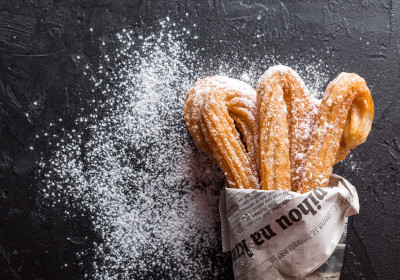
In recent years, the United States has seen a remarkable surge in the popularity of plant-based foods, driven by growing consumer interest in health, sustainability, and ethical eating. From plant-based burgers to dairy-free cheeses, grocery store aisles and restaurant menus across the country are rapidly expanding their offerings to meet this rising demand. According to market research firm Nielsen, sales of plant-based foods increased by nearly 30% over the past two years, far outpacing the growth of traditional animal-based products. This trend is not limited to vegetarians and vegans alone; many meat-eaters are now adopting “flexitarian” diets that include more plant-based meals for health reasons. Experts attribute this shift to several factors. Health concerns top the list, as studies link excessive consumption of red and processed meats to heart disease, cancer, and other chronic illnesses. In addition, awareness about the environmental impact of livestock farming—such as greenhouse gas emissions, water use, and deforestation—has prompted consumers to seek more sustainable food choices. Restaurants have been quick to respond. Major chains like Burger King, McDonald’s, and KFC now offer plant-based alternatives, often partnering with companies such as Beyond Meat and Impossible Foods to develop burgers that closely mimic the taste and texture of beef. These products have attracted widespread attention, not only from consumers but also from investors eager to capitalize on the booming market. Local eateries and gourmet restaurants have embraced plant-based cooking as well, creating innovative dishes using ingredients like jackfruit, tofu, tempeh, and lentils. Chef Amanda Lee of the popular vegan restaurant “Green Table” in Seattle explains, “We focus on making plant-based food exciting and delicious, breaking the stereotype that vegetarian food is bland or boring. Our customers come for the flavors but stay for the health benefits.” The dairy industry is also witnessing transformation. With rising lactose intolerance awareness and vegan preferences, sales of almond milk, oat milk, and other dairy alternatives have skyrocketed. Supermarkets have expanded their selections beyond milk to include plant-based yogurts, creams, and cheeses. Despite the enthusiasm, some critics argue that processed plant-based products can be high in sodium and additives, warning consumers to read labels carefully. Nutritionists recommend balancing these alternatives with whole foods like fruits, vegetables, grains, nuts, and seeds to ensure a healthy diet. Government agencies and health organizations have taken note of the trend. The U.S. Department of Agriculture’s recent dietary guidelines encourage Americans to incorporate more plant-based proteins into their meals. Meanwhile, several cities and states are supporting urban farming and local produce markets to improve access to fresh, plant-based foods. Consumers are also influencing food manufacturing with their preferences for transparency and ethical sourcing. Many plant-based brands emphasize organic ingredients, non-GMO certification, and fair-trade practices in their marketing. The rise of plant-based diets reflects a broader cultural shift toward wellness and environmental responsibility. As people become more aware of the impact their food choices have on personal health and the planet, the plant-based movement is poised to grow even stronger. For those interested in trying plant-based foods, nutritionists suggest starting with simple swaps, such as replacing cow’s milk with oat milk in coffee or trying a meatless Monday meal. With the variety and quality of options available today, adopting a plant-forward diet has never been easier or more delicious.

Admin, 122 Read, July 20, 2025

In an increasingly visual world, photography has evolved far beyond a hobby—it has become a powerful tool of connection, identity, and even resistance. From the alleyways of Marrakech to the streets of Tokyo, people around the globe are using photography to capture their realities, share their truths, and reimagine how we see the world. In 2025, the art of photography is no longer limited to professionals or those with expensive equipment. With powerful cameras embedded in nearly every smartphone and editing apps accessible to all, the global population has become a generation of storytellers. New Language of Expression Photography has become the most universal visual language—transcending borders, politics, and even spoken words. A single image can spark movements, ignite conversations, and bring attention to marginalized voices. From the war-torn zones of Gaza and Ukraine to peaceful protests in Europe and climate marches in South America, everyday citizens are documenting history in real time. These raw, unfiltered images often make their way to global audiences faster than traditional news media. "The smartphone is the new pen," says French photojournalist Camille Laurent. "People don’t just take photos—they share their worldviews." The Rise of Visual Identity In cities like New York, Seoul, and Berlin, photography has become deeply intertwined with personal branding. On platforms like Instagram and Threads, visuals are the currency of influence. Whether it’s fashion, travel, activism, or mental health, photography is the lens through which individuals craft and project their identity. This has also sparked a global aesthetic—where minimalist cafes in Istanbul resemble those in Paris, and sunlit "golden hour" selfies are universal. Yet within this visual sameness, cultural uniqueness is also being celebrated. Photographers are reclaiming their heritage—using traditional attire, rural landscapes, and local rituals to tell stories that challenge stereotypes and global homogenization. AI, Ethics & The Future As artificial intelligence blends with photography, questions of ethics and authenticity are surfacing. AI-generated portraits and edited realities raise concerns about truth, body image, and media manipulation. Yet, at the same time, AI tools are empowering more people to create stunning visuals without formal training—democratizing creativity in ways never imagined. "We’re entering an era where the line between photography and digital art is blurring," notes Japanese visual artist Rei Nakamura. "But the emotion behind the image still matters most." A Global Bond In refugee camps in Jordan, schoolchildren are given disposable cameras to capture their lives. In Scandinavian forests, nature photographers use drones to document wildlife. On African coastlines, photographers are preserving indigenous stories that were never written down. Despite the diversity of context, one thing is clear: photography connects humanity. It offers empathy. It builds bridges. In the words of American photographer Dorothea Lange, "Photography takes an instant out of time, altering life by holding it still." And today, more than ever, the world is watching—frame by frame.

Admin, 223 Read, July 20, 2025

In an increasingly visual world, photography has evolved far beyond a hobby—it has become a powerful tool of connection, identity, and even resistance. From the alleyways of Marrakech to the streets of Tokyo, people around the globe are using photography to capture their realities, share their truths, and reimagine how we see the world. In 2025, the art of photography is no longer limited to professionals or those with expensive equipment. With powerful cameras embedded in nearly every smartphone and editing apps accessible to all, the global population has become a generation of storytellers. A New Language of Expression Photography has become the most universal visual language—transcending borders, politics, and even spoken words. A single image can spark movements, ignite conversations, and bring attention to marginalised voices. From the war-torn zones of Gaza and Ukraine to peaceful protests in Europe and climate marches in South America, everyday citizens are documenting history in real time. These raw, unfiltered images often make their way to global audiences faster than traditional news media. "The smartphone is the new pen," says French photojournalist Camille Laurent. "People don’t just take photos—they share their worldviews." The Rise of Visual Identity In cities like New York, Seoul, and Berlin, photography has become deeply intertwined with personal branding. On platforms like Instagram and Threads, visuals are the currency of influence. Whether it’s fashion, travel, activism, or mental health, photography is the lens through which individuals craft and project their identity. This has also sparked a global aesthetic—where minimalist cafes in Istanbul resemble those in Paris, and sunlit "golden hour" selfies are universal. Yet within this visual sameness, cultural uniqueness is also being celebrated. Photographers are reclaiming their heritage—using traditional attire, rural landscapes, and local rituals to tell stories that challenge stereotypes and global homogenisation. AI, Ethics & The Future As artificial intelligence blends with photography, questions of ethics and authenticity are surfacing. AI-generated portraits and edited realities raise concerns about truth, body image, and media manipulation. Yet, at the same time, AI tools are empowering more people to create stunning visuals without formal training—democratising creativity in ways never imagined. "We're entering an era where the line between photography and digital art is blurring," notes Japanese visual artist Rei Nakamura. "But the emotion behind the image still matters most." A Global Bond In refugee camps in Jordan, schoolchildren are given disposable cameras to capture their lives. In Scandinavian forests, nature photographers use drones to document wildlife. On African coastlines, photographers are preserving indigenous stories that were never written down. Despite the diversity of context, one thing is clear: photography connects humanity. It offers empathy. It builds bridges. In the words of American photographer Dorothea Lange, "Photography takes an instant out of time, altering life by holding it still." And today, more than ever, the world is watching—frame by frame.

Admin, 161 Read, July 20, 2025

In an increasingly visual world, photography has evolved far beyond a hobby—it has become a powerful tool of connection, identity, and even resistance. From the alleyways of Marrakech to the streets of Tokyo, people around the globe are using photography to capture their realities, share their truths, and reimagine how we see the world. In 2025, the art of photography is no longer limited to professionals or those with expensive equipment. With powerful cameras embedded in nearly every smartphone and editing apps accessible to all, the global population has become a generation of storytellers. A New Language of Expression Photography has become the most universal visual language—transcending borders, politics, and even spoken words. A single image can spark movements, ignite conversations, and bring attention to marginalised voices. From the war-torn zones of Gaza and Ukraine to peaceful protests in Europe and climate marches in South America, everyday citizens are documenting history in real time. These raw, unfiltered images often make their way to global audiences faster than traditional news media. "The smartphone is the new pen," says French photojournalist Camille Laurent. "People don’t just take photos—they share their worldviews." The Rise of Visual Identity In cities like New York, Seoul, and Berlin, photography has become deeply intertwined with personal branding. On platforms like Instagram and Threads, visuals are the currency of influence. Whether it’s fashion, travel, activism, or mental health, photography is the lens through which individuals craft and project their identity. This has also sparked a global aesthetic—where minimalist cafes in Istanbul resemble those in Paris, and sunlit "golden hour" selfies are universal. Yet within this visual sameness, cultural uniqueness is also being celebrated. Photographers are reclaiming their heritage—using traditional attire, rural landscapes, and local rituals to tell stories that challenge stereotypes and global homogenisation. AI, Ethics & The Future As artificial intelligence blends with photography, questions of ethics and authenticity are surfacing. AI-generated portraits and edited realities raise concerns about truth, body image, and media manipulation. Yet, at the same time, AI tools are empowering more people to create stunning visuals without formal training—democratising creativity in ways never imagined. "We're entering an era where the line between photography and digital art is blurring," notes Japanese visual artist Rei Nakamura. "But the emotion behind the image still matters most." A Global Bond In refugee camps in Jordan, schoolchildren are given disposable cameras to capture their lives. In Scandinavian forests, nature photographers use drones to document wildlife. On African coastlines, photographers are preserving indigenous stories that were never written down. Despite the diversity of context, one thing is clear: photography connects humanity. It offers empathy. It builds bridges. In the words of American photographer Dorothea Lange, "Photography takes an instant out of time, altering life by holding it still." And today, more than ever, the world is watching—frame by frame.

Admin, 164 Read, July 20, 2025

In an increasingly visual world, photography has evolved far beyond a hobby—it has become a powerful tool of connection, identity, and even resistance. From the alleyways of Marrakech to the streets of Tokyo, people around the globe are using photography to capture their realities, share their truths, and reimagine how we see the world. In 2025, the art of photography is no longer limited to professionals or those with expensive equipment. With powerful cameras embedded in nearly every smartphone and editing apps accessible to all, the global population has become a generation of storytellers. A New Language of Expression Photography has become the most universal visual language—transcending borders, politics, and even spoken words. A single image can spark movements, ignite conversations, and bring attention to marginalised voices. From the war-torn zones of Gaza and Ukraine to peaceful protests in Europe and climate marches in South America, everyday citizens are documenting history in real time. These raw, unfiltered images often make their way to global audiences faster than traditional news media. "The smartphone is the new pen," says French photojournalist Camille Laurent. "People don’t just take photos—they share their worldviews." The Rise of Visual Identity In cities like New York, Seoul, and Berlin, photography has become deeply intertwined with personal branding. On platforms like Instagram and Threads, visuals are the currency of influence. Whether it’s fashion, travel, activism, or mental health, photography is the lens through which individuals craft and project their identity. This has also sparked a global aesthetic—where minimalist cafes in Istanbul resemble those in Paris, and sunlit "golden hour" selfies are universal. Yet within this visual sameness, cultural uniqueness is also being celebrated. Photographers are reclaiming their heritage—using traditional attire, rural landscapes, and local rituals to tell stories that challenge stereotypes and global homogenisation. AI, Ethics & The Future As artificial intelligence blends with photography, questions of ethics and authenticity are surfacing. AI-generated portraits and edited realities raise concerns about truth, body image, and media manipulation. Yet, at the same time, AI tools are empowering more people to create stunning visuals without formal training—democratising creativity in ways never imagined. "We're entering an era where the line between photography and digital art is blurring," notes Japanese visual artist Rei Nakamura. "But the emotion behind the image still matters most." A Global Bond In refugee camps in Jordan, schoolchildren are given disposable cameras to capture their lives. In Scandinavian forests, nature photographers use drones to document wildlife. On African coastlines, photographers are preserving indigenous stories that were never written down. Despite the diversity of context, one thing is clear: photography connects humanity. It offers empathy. It builds bridges. In the words of American photographer Dorothea Lange, "Photography takes an instant out of time, altering life by holding it still." And today, more than ever, the world is watching—frame by frame.

Admin, 245 Read, July 26, 2025
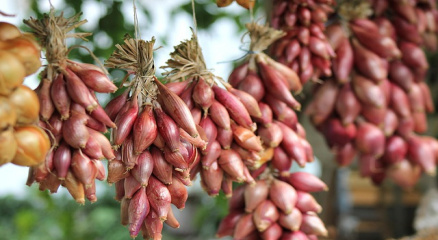
In an increasingly visual world, photography has evolved far beyond a hobby—it has become a powerful tool of connection, identity, and even resistance. From the alleyways of Marrakech to the streets of Tokyo, people around the globe are using photography to capture their realities, share their truths, and reimagine how we see the world. In 2025, the art of photography is no longer limited to professionals or those with expensive equipment. With powerful cameras embedded in nearly every smartphone and editing apps accessible to all, the global population has become a generation of storytellers. A New Language of Expression Photography has become the most universal visual language—transcending borders, politics, and even spoken words. A single image can spark movements, ignite conversations, and bring attention to marginalized voices.From the war-torn zones of Gaza and Ukraine to peaceful protests in Europe and climate marches in South America, everyday citizens are documenting history in real time. These raw, unfiltered images often make their way to global audiences faster than traditional news media."The smartphone is the new pen," says French photojournalist Camille Laurent. "People don’t just take photos—they share their worldviews." The Rise of Visual Identity In cities like New York, Seoul, and Berlin, photography has become deeply intertwined with personal branding. On platforms like Instagram and Threads, visuals are the currency of influence. Whether it’s fashion, travel, activism, or mental health, photography is the lens through which individuals craft and project their identity. This has also sparked a global aesthetic—where minimalist cafes in Istanbul resemble those in Paris, and sunlit "golden hour" selfies are universal. Yet within this visual sameness, cultural uniqueness is also being celebrated. Photographers are reclaiming their heritage—using traditional attire, rural landscapes, and local rituals to tell stories that challenge stereotypes and global homogenization. AI, Ethics & The Future As artificial intelligence blends with photography, questions of ethics and authenticity are surfacing. AI-generated portraits and edited realities raise concerns about truth, body image, and media manipulation. Yet, at the same time, AI tools are empowering more people to create stunning visuals without formal training—democratizing creativity in ways never imagined. "We’re entering an era where the line between photography and digital art is blurring," notes Japanese visual artist Rei Nakamura. "But the emotion behind the image still matters most." A Global Bond In refugee camps in Jordan, schoolchildren are given disposable cameras to capture their lives. In Scandinavian forests, nature photographers use drones to document wildlife. On African coastlines, photographers are preserving indigenous stories that were never written down. Despite the diversity of context, one thing is clear: photography connects humanity. It offers empathy. It builds bridges. In the words of American photographer Dorothea Lange, "Photography takes an instant out of time, altering life by holding it still." And today, more than ever, the world is watching—frame by frame.

Admin, 164 Read, July 20, 2025
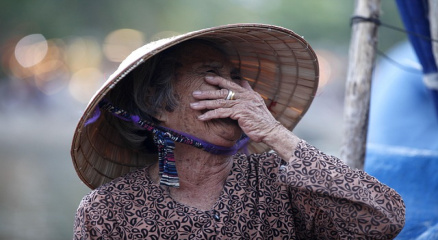
In an increasingly visual world, photography has evolved far beyond a hobby—it has become a powerful tool of connection, identity, and even resistance. From the alleyways of Marrakech to the streets of Tokyo, people around the globe are using photography to capture their realities, share their truths, and reimagine how we see the world. In 2025, the art of photography is no longer limited to professionals or those with expensive equipment. With powerful cameras embedded in nearly every smartphone and editing apps accessible to all, the global population has become a generation of storytellers. A New Language of Expression Photography has become the most universal visual language—transcending borders, politics, and even spoken words. A single image can spark movements, ignite conversations, and bring attention to marginalised voices. From the war-torn zones of Gaza and Ukraine to peaceful protests in Europe and climate marches in South America, everyday citizens are documenting history in real time. These raw, unfiltered images often make their way to global audiences faster than traditional news media. "The smartphone is the new pen," says French photojournalist Camille Laurent. "People don’t just take photos—they share their worldviews." The Rise of Visual Identity In cities like New York, Seoul, and Berlin, photography has become deeply intertwined with personal branding. On platforms like Instagram and Threads, visuals are the currency of influence. Whether it’s fashion, travel, activism, or mental health, photography is the lens through which individuals craft and project their identity. This has also sparked a global aesthetic—where minimalist cafes in Istanbul resemble those in Paris, and sunlit "golden hour" selfies are universal. Yet within this visual sameness, cultural uniqueness is also being celebrated. Photographers are reclaiming their heritage—using traditional attire, rural landscapes, and local rituals to tell stories that challenge stereotypes and global homogenisation. AI, Ethics & The Future As artificial intelligence blends with photography, questions of ethics and authenticity are surfacing. AI-generated portraits and edited realities raise concerns about truth, body image, and media manipulation. Yet, at the same time, AI tools are empowering more people to create stunning visuals without formal training—democratising creativity in ways never imagined. "We're entering an era where the line between photography and digital art is blurring," notes Japanese visual artist Rei Nakamura. "But the emotion behind the image still matters most." A Global Bond In refugee camps in Jordan, schoolchildren are given disposable cameras to capture their lives. In Scandinavian forests, nature photographers use drones to document wildlife. On African coastlines, photographers are preserving indigenous stories that were never written down. Despite the diversity of context, one thing is clear: photography connects humanity. It offers empathy. It builds bridges. In the words of American photographer Dorothea Lange, "Photography takes an instant out of time, altering life by holding it still." And today, more than ever, the world is watching—frame by frame.

Admin, 181 Read, July 20, 2025

In an increasingly visual world, photography has evolved far beyond a hobby—it has become a powerful tool of connection, identity, and even resistance. From the alleyways of Marrakech to the streets of Tokyo, people around the globe are using photography to capture their realities, share their truths, and reimagine how we see the world. In 2025, the art of photography is no longer limited to professionals or those with expensive equipment. With powerful cameras embedded in nearly every smartphone and editing apps accessible to all, the global population has become a generation of storytellers. A New Language of Expression Photography has become the most universal visual language—transcending borders, politics, and even spoken words. A single image can spark movements, ignite conversations, and bring attention to marginalized voices. From the war-torn zones of Gaza and Ukraine to peaceful protests in Europe and climate marches in South America, everyday citizens are documenting history in real time. These raw, unfiltered images often make their way to global audiences faster than traditional news media. "The smartphone is the new pen," says French photojournalist Camille Laurent. "People don’t just take photos—they share their worldviews." The Rise of Visual Identity In cities like New York, Seoul, and Berlin, photography has become deeply intertwined with personal branding. On platforms like Instagram and Threads, visuals are the currency of influence. Whether it’s fashion, travel, activism, or mental health, photography is the lens through which individuals craft and project their identity. This has also sparked a global aesthetic—where minimalist cafes in Istanbul resemble those in Paris, and sunlit "golden hour" selfies are universal. Yet within this visual sameness, cultural uniqueness is also being celebrated. Photographers are reclaiming their heritage—using traditional attire, rural landscapes, and local rituals to tell stories that challenge stereotypes and global homogenization. AI, Ethics & The Future As artificial intelligence blends with photography, questions of ethics and authenticity are surfacing. AI-generated portraits and edited realities raise concerns about truth, body image, and media manipulation. Yet, at the same time, AI tools are empowering more people to create stunning visuals without formal training—democratizing creativity in ways never imagined. "We’re entering an era where the line between photography and digital art is blurring," notes Japanese visual artist Rei Nakamura. "But the emotion behind the image still matters most." A Global Bond In refugee camps in Jordan, schoolchildren are given disposable cameras to capture their lives. In Scandinavian forests, nature photographers use drones to document wildlife. On African coastlines, photographers are preserving indigenous stories that were never written down. Despite the diversity of context, one thing is clear: photography connects humanity. It offers empathy. It builds bridges. In the words of American photographer Dorothea Lange, "Photography takes an instant out of time, altering life by holding it still." And today, more than ever, the world is watching—frame by frame.

Admin, 161 Read, July 10, 2025

In an increasingly visual world, photography has evolved far beyond a hobby—it has become a powerful tool of connection, identity, and even resistance. From the alleyways of Marrakech to the streets of Tokyo, people around the globe are using photography to capture their realities, share their truths, and reimagine how we see the world. In 2025, the art of photography is no longer limited to professionals or those with expensive equipment. With powerful cameras embedded in nearly every smartphone and editing apps accessible to all, the global population has become a generation of storytellers. A New Language of Expression Photography has become the most universal visual language—transcending borders, politics, and even spoken words. A single image can spark movements, ignite conversations, and bring attention to marginalized voices. From the war-torn zones of Gaza and Ukraine to peaceful protests in Europe and climate marches in South America, everyday citizens are documenting history in real time. These raw, unfiltered images often make their way to global audiences faster than traditional news media. "The smartphone is the new pen," says French photojournalist Camille Laurent. "People don’t just take photos—they share their worldviews." The Rise of Visual Identity In cities like New York, Seoul, and Berlin, photography has become deeply intertwined with personal branding. On platforms like Instagram and Threads, visuals are the currency of influence. Whether it’s fashion, travel, activism, or mental health, photography is the lens through which individuals craft and project their identity. This has also sparked a global aesthetic—where minimalist cafes in Istanbul resemble those in Paris, and sunlit "golden hour" selfies are universal. Yet within this visual sameness, cultural uniqueness is also being celebrated. Photographers are reclaiming their heritage—using traditional attire, rural landscapes, and local rituals to tell stories that challenge stereotypes and global homogenization. AI, Ethics & The Future As artificial intelligence blends with photography, questions of ethics and authenticity are surfacing. AI-generated portraits and edited realities raise concerns about truth, body image, and media manipulation. Yet, at the same time, AI tools are empowering more people to create stunning visuals without formal training—democratizing creativity in ways never imagined. "We’re entering an era where the line between photography and digital art is blurring," notes Japanese visual artist Rei Nakamura. "But the emotion behind the image still matters most." A Global Bond In refugee camps in Jordan, schoolchildren are given disposable cameras to capture their lives. In Scandinavian forests, nature photographers use drones to document wildlife. On African coastlines, photographers are preserving indigenous stories that were never written down. Despite the diversity of context, one thing is clear: photography connects humanity. It offers empathy. It builds bridges. In the words of American photographer Dorothea Lange, "Photography takes an instant out of time, altering life by holding it still." And today, more than ever, the world is watching—frame by frame.

Admin, 281 Read, July 20, 2025

Global stock markets remained mixed today as investors weighed fresh U.S. inflation data, corporate earnings reports, and the ongoing economic uncertainty in China and Europe. The U.S. stock market opened slightly higher on Monday morning, with the Dow Jones Industrial Average rising 0.4%, the S&P 500 climbing 0.3%, and the Nasdaq Composite gaining 0.5% in early trading. Investors responded positively to June's U.S. Consumer Price Index (CPI) report, which showed inflation cooling slightly to an annual rate of 3.0%, down from 3.3% in May."Markets are optimistic that the Federal Reserve may pause or even cut interest rates by the fall," said Lisa Raymond, chief analyst at Morgan & Co. "But it's still a wait-and-see situation, especially with more earnings coming this week." Wall Street Opens Higher Dow +0.4%, S&P 500 +0.3%, Nasdaq +0.5% on Monday morning. Boosted by June CPI showing inflation cooled to 3.0% (down from 3.3%). Hopes rise for potential Fed rate cut or pause by fall. The U.S. stock market opened slightly higher on Monday morning, with the Dow Jones Industrial Average rising 0.4%, the S&P 500 climbing 0.3%, and the Nasdaq Composite gaining 0.5% in early trading. Investors responded positively to June's U.S. Consumer Price Index (CPI) report, which showed inflation cooling slightly to an annual rate of 3.0%, down from 3.3% in May. "Markets are optimistic that the Federal Reserve may pause or even cut interest rates by the fall," said Lisa Raymond, chief analyst at Morgan & Co. "But it's still a wait-and-see situation, especially with more earnings coming this week." Tech Leads the Way Technology stocks led the gains in the U.S., with Apple (AAPL) up 1.8% and Nvidia (NVDA) jumping 2.4%, as demand for AI and semiconductors remains strong. Tesla (TSLA) also rebounded, rising 3.1% after announcing better-than-expected Q2 vehicle deliveries. Global stock markets showed a mixed performance as investors weighed persistent inflation concerns against a wave of corporate earnings reports. While strong results from major tech companies helped lift some indexes, uncertainty surrounding central bank policies and the future path of interest rates kept others in check. In the U.S., Europe Struggles on Growth Concerns Meanwhile, European markets showed little movement, with the FTSE 100 in London flat and Germany’s DAX down 0.2%. Investors remain concerned about weak industrial output and rising energy costs across the Eurozone.“The European economy is showing signs of fatigue,” said Carla Dupont, economist at BNP Paribas. “High borrowing costs and geopolitical tensions are dragging down business activity.”Global stock markets showed a mixed performance as investors weighed persistent inflation concerns against a wave of corporate earnings reports. While strong results from major tech companies helped lift some indexes, uncertainty surrounding central bank policies and the future path of interest rates kept others in check. In the U.S., Market Performance Summary Table Region Index/Company Movement (%) Key Driver USA Dow Jones +0.4% Positive CPI report (3.0% inflation) S&P 500 +0.3% Rate cut optimism Nasdaq +0.5% Tech stock gains Apple (AAPL) +1.8% Strong AI demand Nvidia (NVDA) +2.4% Semiconductor growth Tesla (TSLA) +3.1% Strong Q2 deliveries Europe FTSE 100 (UK) 0.0% Flat due to economic uncertainty DAX (Germany) -0.2% Weak industrial output, high energy costs Asia Nikkei 225 (Japan) +0.6% Strong export performance Shanghai Composite -1.2% Property sector risks, low consumer spending Asia Mixed as Chinese Markets Slump In Asia, markets showed mixed results. Japan’s Nikkei 225 gained 0.6%, supported by strong export data. However, Chinese markets fell sharply, with the Shanghai Composite down 1.2%, as fears about the country’s property sector and sluggish consumer spending persisted. Gains in consumer and tech sectors pushed markets higher, but weaker-than-expected bank earnings and inflation-related jitters limited broader momentum. European markets edged lower as traders grew cautious about global trade tensions and slowing growth indicators, while Asian markets saw mixed results, with Hong Kong posting modest gains and Tokyo slipping slightly. Overall, market sentiment remains cautious as investors await further economic data and guidance from central banks. Looking Ahead Investors are now turning their focus to key corporate earnings this week from major banks like JPMorgan Chase, Goldman Sachs, and Citigroup, as well as tech giants like Netflix and Microsoft. The results are expected to provide a clearer picture of business resilience amid high interest rates and uncertain global demand. Overall, market sentiment remains cautious as investors await further economic data and guidance from central banks.

Admin, 1284 Read, July 31, 2025

Dhaka – The National Board of Revenue (NBR) has introduced a groundbreaking taxation policy targeting social media influencers and digital content creators across Bangladesh, marking a significant shift in how digital income is regulated in the country.This policy requires influencers earning through sponsored posts, affiliate marketing, digital product promotions, livestreaming tips, brand collaborations, and platform ad revenues—such as from YouTube, Facebook, Instagram, and TikTok—to formally declare their income and pay taxes like other professionals. The initiative is part of the government's broader push to bring the booming digital economy under fiscal oversight and enhance national revenue collection.“Digital creators are now part of the economy — they must contribute like others,” said a senior NBR official. “We cannot leave such a rapidly growing sector untaxed while other industries bear the burden.” Why Now? Over the last few years, Bangladesh has seen a dramatic rise in the number of content creators. From tech reviewers and food bloggers to lifestyle influencers and online educators, thousands of individuals now generate substantial earnings online—some reportedly earning Tk 50,000 to over Tk 5 lakh per month. Yet, most of this income has so far gone untaxed due to the informal nature of these operations and lack of regulatory clarity. With the digital economy contributing billions to GDP, the NBR views this as a crucial moment to establish fiscal responsibility in the sector. A Rapidly Expanding Digital Landscape Platform Estimated Bangladeshi Users Common Income Sources Facebook 45+ million Page ads, brand deals, sales YouTube 30+ million viewers AdSense, sponsorships, merch Instagram 10+ million Fashion and beauty partnerships TikTok 20+ million Short-form video promotion income Mixed Reactions from Creators The announcement has sparked a wave of responses among Bangladesh’s digital creators. Some influencers welcome the move as a step toward greater legitimacy and recognition of their profession. “If I’m treated like a business, I’ll run it like one,” said Mehzabin Akter, a Dhaka-based makeup influencer with 500K followers. Others fear the complex paperwork, new compliance responsibilities, and reduced net earnings could discourage newcomers or disrupt smaller creators’ operations.“I make less than Tk 30,000 a month from affiliate links. If I need to hire an accountant, pay taxes, and file returns, it’s just not worth it,” said Rajib Hossain, a tech YouTuber from Rajshahi. Advice from Tax Professionals They recommend: Keeping digital invoices and receipts for all income Recording payments from platforms like Google AdSense and TikTok Creator Fund Maintaining contracts for sponsored posts and brand deals Consulting professionals for annual tax filing assistance Experts also point out that in many cases, only income exceeding a specific threshold (Tk 3 lakh annually) will be subject to taxation, meaning smaller creators may fall below the taxable line—but must still report their income. Looking Ahead This policy is just the beginning. The government plans to roll out education campaigns, webinars, and digital guides to help influencers understand their obligations and avoid penalties. Talks are also underway about possibly introducing flat tax schemes or digital income brackets specifically for freelance and creator-based work. Moreover, some officials believe this could eventually pave the way for government-verified digital creator licenses or IDs, opening the door to greater access to loans, business registration, and legal protections for creators. Final Thought As Bangladesh’s digital content economy matures, the line between passion and profession continues to blur. The NBR’s move signals that social media stardom now comes with not just followers and fame—but financial accountability. While the new rules may pose initial challenges, they also reflect growing respect for the industry as a legitimate and powerful economic force. The real test will be in how smoothly both influencers and the tax system can adapt to this digital shift.

Admin, 226 Read, July 20, 2025

In a growing digital crisis, Bangladesh is witnessing a surge in deepfake videos—AI-generated clips that manipulate faces and voices to depict politicians, celebrities, and public figures saying or doing things they never actually did. The spread of these hyper-realistic videos across platforms like Facebook, YouTube, and TikTok has sparked widespread panic, misinformation, and serious reputational harm. Many of these videos are politically charged, featuring high-profile leaders in fabricated scandals or issuing fake statements. The trend has intensified ahead of the upcoming national elections, raising alarms about potential manipulation of public opinion and election integrity. The Bangladesh Telecommunication Regulatory Commission (BTRC) has issued a strong warning to internet users, urging them not to share unverified or manipulated videos. It stressed that spreading such content—knowingly or unknowingly—could lead to legal action under the Digital Security Act, especially if it threatens national stability or individual dignity. “We are closely monitoring social platforms. Anyone found distributing harmful deepfakes may face legal consequences,” said a BTRC spokesperson. Digital misinformation is not new, but deepfakes represent a new level of threat. Unlike simple text-based rumors or poorly edited images, these AI-generated videos can deceive even savvy users, making it harder to distinguish fact from fiction. “People believe what they see,” said Dr. Anika Rahman, a media literacy expert. “When a video appears authentic, it spreads faster and causes more damage—even if it’s later proven fake.” Citizens have reported cases where deepfakes have led to street protests, calls for boycotts, and even harassment of innocent individuals, especially when the content is politically or religiously sensitive. Deepfakes are created using artificial intelligence techniques, particularly deep learning and facial recognition technology. They replace or manipulate faces and voices in videos with startling accuracy, often using just a few photos or audio samples of the target person. Technology Used Purpose Risk Level Deep Learning AI Mimic facial expressions High Voice Cloning Reproduce speech patterns High GANs (Generative Adversarial Networks) Make visuals look real Very High Facebook, YouTube, and TikTok are under growing pressure from both governments and civil society to ramp up content moderation systems. While they all claim to use AI tools to detect and block deepfakes, users and watchdogs argue the response is too slow. “We are working with global AI experts to flag and remove deepfakes faster,” said a Facebook South Asia representative. “But the volume of content makes instant moderation very challenging.” Critics say harmful videos often stay up for hours or even days, allowing millions to view, share, and believe the false content before takedowns happen. Experts believe that more than just tech solutions are needed. Public awareness, media literacy campaigns, and robust fact-checking services must accompany digital platform efforts.Some digital rights groups in Bangladesh are also calling for specific deepfake legislation, similar to what countries like the US and Singapore have introduced. This could include: Criminal penalties for malicious creators Faster platform accountability Mandatory deepfake disclosures for entertainment or satire Verify videos with trusted news outlets Use reverse image/video tools (e.g., InVID or Google Lens) Report suspicious content immediately Avoid sharing unverified clips, even “just for fun” As AI technology continues to evolve, deepfakes will likely become even harder to detect—and even more persuasive. In a digital world flooded with content, truth is now something we must consciously search for. For Bangladesh, a country with over 50 million active social media users, the deepfake challenge is not just a tech issue—it’s a threat to democracy, security, and trust. How the government, platforms, and citizens respond will shape the future of digital credibility in the nation.

Admin, 138 Read, July 20, 2025

Chattogram, July 20, 2025 — In the bustling alleys of Bangladesh’s cities and towns, the age-old cries of street vendors are being steadily replaced by the silent buzz of smartphones. Facebook Marketplace has quietly emerged as a game-changer for thousands of small vendors across the country, redefining how business is done in an increasingly digital world. From clothing and accessories to electronics and handmade crafts, sellers who once relied on door-to-door sales or modest market stalls are now turning to social media to reach a nationwide customer base — without the overhead of physical storefronts. Take the story of Jahidul Islam from Comilla. Once dependent on walking door to door with a heavy bag of clothes, he now operates from his home with a smartphone and a Facebook page. “I used to knock on 20 doors a day just to sell a few pieces,” he said. “Now, I post pictures online and get orders from all over the country — sometimes even from outside Bangladesh.” His story reflects a wider trend sweeping through both rural and urban Bangladesh: the rise of the digital entrepreneur. This digital shift, accelerated by increased smartphone penetration and affordable internet, is not only transforming commerce — it's changing lives. For many small vendors, particularly women, students, and low-income individuals, Facebook Marketplace provides a flexible, low-cost entry into business. Housewives are turning into online boutique owners. University students are selling gadgets or fashion items between classes. In places where job opportunities are limited, online selling offers a sense of economic independence and self-worth. The Impact at a Glance: Aspect Before Marketplace After Marketplace Startup cost High (shop rent, permits) Low (smartphone & internet) Customer reach Local only Nationwide (even diaspora) Business hours Limited to market hours 24/7 availability Job creation Minimal Growing micro-entrepreneurship Female participation Low Significantly increasing However, this success is not without its complications. With the rise in popularity of Facebook-based businesses, there has also been an increase in fraudulent activities. From misleading product photos and fake brands to outright scams where customers pay but never receive their orders, the lack of formal regulation and oversight is becoming a serious concern. Consumer rights groups report a growing number of complaints related to online transactions, with many victims having little to no legal recourse.“Fraudulent pages are popping up every day,” warns Tania Kabir, a digital rights activist in Dhaka. “People are losing money, and there's no centralized system to hold these vendors accountable. We need government and platform-level regulation that doesn’t hurt honest sellers but protects consumers.” The Bangladesh Telecommunication Regulatory Commission (BTRC) has also acknowledged the need for stronger oversight. Efforts are underway to create a verified seller badge for trustworthy Facebook businesses, as well as a dedicated complaint mechanism linked to the Ministry of Commerce’s consumer rights protection wing. But implementation remains slow, and many sellers remain wary of any policies that may increase their operational costs or introduce red tape. Despite the challenges, Facebook Marketplace continues to flourish. Its success also hints at a larger opportunity — the possibility of creating a more structured, digitally-driven small business ecosystem in Bangladesh. If paired with training in digital literacy, basic e-commerce, and customer service, this grassroots online economy could significantly reduce unemployment and increase income in low- and middle-income communities. Experts suggest that future success lies in partnerships between government, tech platforms, and local NGOs to create support systems for these digital entrepreneurs. Programs offering microloans, digital marketing training, and platform accountability could ensure that Facebook Marketplace continues to be not just a trend, but a long-term driver of economic change. For now, in towns like Chattogram, Rajshahi, Sylhet, and Comilla, Facebook Marketplace is more than a tool — it’s a livelihood. A digital lifeline that empowers the ambitious, supports families, and brings business to doorsteps — not with a knock, but with a notification. Bottom Line: As Bangladesh navigates its way through economic transitions, Facebook Marketplace has emerged as a powerful enabler of digital entrepreneurship. With proper support, regulation, and consumer protection, this informal sector could become a formal force in shaping the future of the country’s economy.

Admin, 135 Read, July 20, 2025

In an era where attention spans are short and social change demands urgency, TikTok has emerged as a powerful new platform for youth-driven activism. What started as a space for dance trends and lip-sync videos has quickly evolved into a vibrant ecosystem where young people are using 15–60 second clips to challenge injustice, raise awareness, and mobilize support for social causes.From climate change protests to gender rights, mental health awareness to political commentary, TikTok’s short-form video format has proven uniquely suited to sparking dialogue and capturing the emotions behind movements. Activists across Bangladesh, India, the Philippines, and beyond are using the platform not just for expression — but for education and mobilization. One powerful example includes the #StudentVoices movement in Bangladesh, where students shared videos demanding reforms in the education system, including calls for more inclusive policies and better mental health support in schools. These clips went viral, sparking mainstream media attention and responses from education officials. Similarly, during the Rohingya refugee crisis or after environmental disasters, TikTokers in South Asia created donation drives, fact-based explainers, and firsthand videos from affected zones — showing the platform’s potential for real-time grassroots journalism. In Manila, a TikTok series debunking election misinformation was viewed over 4 million times, mostly by first-time voters.However, this new wave of digital activism is not without challenges. Critics argue that “slacktivism” — where users feel satisfied simply by liking or sharing posts — may replace real-world engagement. There’s also concern about misinformation, content censorship, and the potential misuse of algorithms that may suppress marginalized voices. Despite these concerns, educators and social researchers recognize TikTok’s potential as an entry point for civic education and social awareness. Many NGOs and advocacy groups now collaborate with TikTok creators to reach younger demographics with accurate, inspiring, and mobilizing content.With over 1 billion users globally, and over 60% under the age of 30, TikTok is not just shaping how youth consume content — it’s shaping how they participate in the world. As digital native generations come of age, their activism is taking new forms — and TikTok, for all its controversies, is proving to be one of their loudest megaphones.

Admin, 178 Read, July 20, 2025
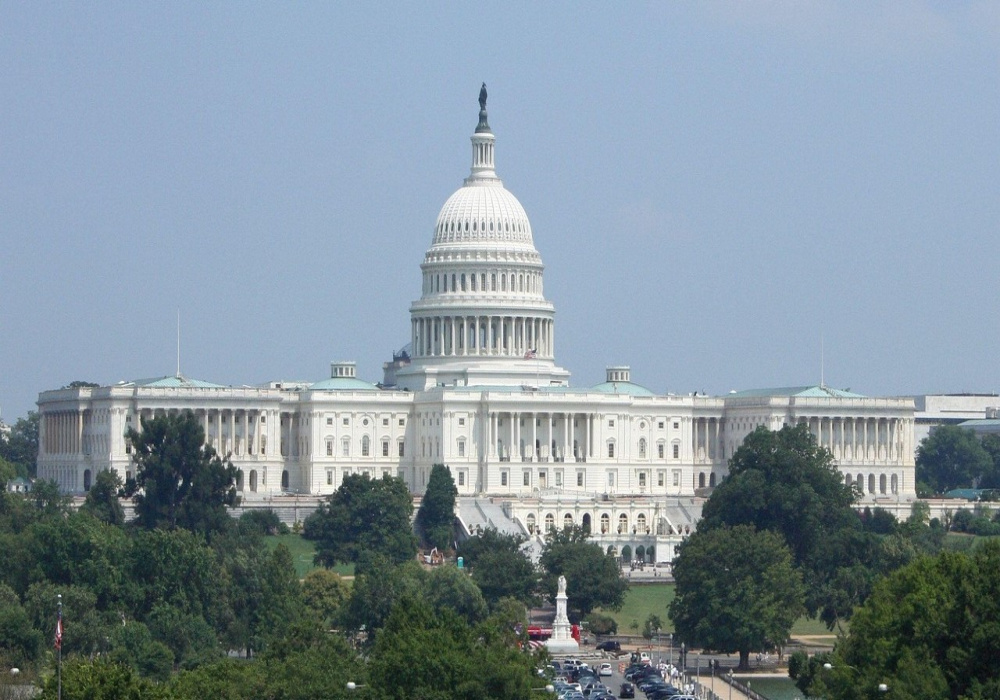
Dhaka – In today’s Bangladesh, politics is no longer confined to public rallies or television talk shows — it’s playing out every day on Facebook, X (formerly Twitter), and TikTok. As the country heads toward its next general election, social media has become a powerful tool for political communication, grassroots organizing, and public debate.Political parties, independent candidates, and youth activists are all turning to social platforms to reach the public directly. Videos, livestreams, memes, and campaign reels now shape political narratives faster than traditional media ever could. “Social media lets us speak directly to the people, without gatekeepers,” said Arman Chowdhury, a digital campaign manager for a leading political party. “In 2025, a viral post can shift public opinion overnight.”According to the Bangladesh Election Monitoring Forum, over 60% of first-time voters rely on social media as their primary source of political information. Parties are investing heavily in digital teams, influencer partnerships, and content creators to boost engagement and shape perception. But the rise of digital politics has a darker side. Misinformation, hate speech, and coordinated disinformation campaigns are spreading rapidly, often polarizing communities and confusing voters. During the recent city elections, fake polls and deepfake videos circulated widely, prompting the Bangladesh Telecommunication Regulatory Commission (BTRC) to issue warnings and take down dozens of misleading posts. “Social media is both a blessing and a threat to democracy,” said Dr. Nilufa Yasmin, a political science professor at Dhaka University. “It amplifies voices but also enables manipulation. Regulation and media literacy are urgently needed.” Civic groups and digital watchdogs are calling for stronger transparency from platforms like Facebook and TikTok regarding political ads, fake accounts, and bot-driven propaganda. Meanwhile, social media has empowered a new generation of digital activists — from environmentalists and women's rights advocates to student leaders. Hashtags like #SaveTheSundarbans, #JusticeForNusrat, and #DigitalBangladesh have sparked national conversations and even led to real-world policy changes. “I use my Instagram to talk about climate justice and education reform,” said Tania Haque, a 22-year-old activist from Narayanganj. “Even if we’re not on TV, we have a voice — and it’s loud.” However, concerns about digital surveillance and freedom of expression persist. Several users have reported account suspensions or harassment after posting critical content about powerful figures or institutions. As social media continues to shape politics in real time, experts urge voters to verify sources, think critically, and avoid echo chambers. “Don’t believe everything you see on your feed,” warned BTRC spokesperson Shahinul Islam. “Use technology, but stay aware.” With elections looming, the digital battlefield is heating up — and in 2025, a single post, video, or hashtag could change the course of the nation.

Admin, 168 Read, July 20, 2025

Dhaka – The Bangladesh government is ramping up efforts to combat fake news and harmful content on social media, following a wave of misinformation surrounding recent political events and public health issues. The Ministry of Information and Broadcasting, in coordination with the BTRC, is drafting new regulations that would require global platforms like Facebook, YouTube, and X to open local offices, respond to content removal requests within 24 hours, and increase transparency in algorithmic content distribution. “Misinformation spreads faster than ever, especially during crises,” said ICT Division spokesperson Rashedul Karim. “These rules will protect citizens and national stability.” Experts welcome the move but warn against overreach. “Content moderation must not infringe on freedom of speech,” noted digital rights advocate Shireen Afroz. Social media companies say they are enhancing AI-based moderation tools and improving user reporting systems. However, critics argue current efforts are inadequate, as false claims often go viral before action is taken. Meanwhile, digital literacy campaigns are being launched to help users verify information and avoid manipulation. As Bangladesh continues to embrace the digital world, balancing security and free expression remains a growing challenge.

Mahidujjaman Tamim, 120 Read, July 13, 2025

Dhaka – Social media has become the heartbeat of youth culture in 2025, influencing everything from fashion and music to language and identity. For millions of teenagers and young adults in Bangladesh and across the globe, platforms like TikTok, Instagram, and YouTube are not just digital tools — they are cultural spaces where trends are born, shared, and reshaped every hour. According to a recent study by the Centre for Digital Youth, over 85% of teenagers in urban Bangladesh spend more than three hours daily on social media. The report highlights how these platforms have evolved into powerful agents of influence — changing how the younger generation dresses, speaks, socializes, and even views the world. “I get all my ideas from social media — what to wear, what to listen to, what new spots to hang out at,” said Samiya Rahman, a 17-year-old student from Dhaka. “Sometimes I feel like I’m living two lives — one offline, one online.” TikTok, in particular, remains the most influential platform among youth. Viral challenges, dance routines, cooking hacks, fashion transitions, and motivational reels dominate the feed. Bangladeshi content creators like Tanzim Khan, Oishee Rahman, and Fahim Vlogs have become household names among Gen Z followers. Instagram, on the other hand, is still the go-to for curated personal branding. Young people use Stories and Reels to document their daily lives, achievements, activism, and style — often edited with filters, music, and effects to match aesthetic trends. But with this hyper-connectivity comes a complex web of pressures. Digital comparison, fear of missing out (FOMO), and the pursuit of perfection have led to rising anxiety, low self-esteem, and screen dependency. “Social media is giving young people a platform to express themselves, but also putting them under enormous pressure to look perfect and stay ‘on trend,’” said Dr. Mahbuba Sultana, a child psychologist. “We need more open conversations around digital wellness.” Peer influence is also shifting. Instead of traditional role models like athletes or actors, teens are now following micro-influencers and content creators who speak their language and share their struggles. Topics like mental health, gender identity, climate change, and self-love are gaining traction — often started by young users themselves. In response to growing concerns, some schools are introducing digital citizenship classes to teach students how to use social media responsibly, spot misinformation, and balance screen time with real-life interactions. Despite the concerns, many believe social media has given the youth more freedom, visibility, and voice than any generation before. “I’ve learned more about confidence, culture, and creativity from my TikTok feed than from my textbooks,” said Ayman Nafi, an 18-year-old aspiring content creator from Sylhet. “It’s where we all connect and grow.” As the youth continue to define their generation online, experts call for greater digital literacy, parental understanding, and platform responsibility to ensure that the online world remains a space for empowerment — not pressure.

Mahidujjaman Tamim, 126 Read, July 13, 2025

Dhaka – In 2025, social media has evolved far beyond entertainment and status updates — it's now a booming hub for business, employment, and personal branding. From job seekers to entrepreneurs, millions are using platforms like LinkedIn, Facebook, TikTok, and Instagram to generate income and build careers in the digital economy. With the growth of freelancing and e-commerce, social media has become the new résumé for many in Bangladesh and around the world. Online platforms now serve as digital offices, marketplaces, and career development spaces, offering both opportunities and challenges in the rapidly changing job landscape. LinkedIn, once limited to corporate professionals, is now attracting students, freelancers, and small business owners. Job postings, networking groups, and skill-building videos are seeing record engagement. In Bangladesh alone, LinkedIn users have crossed 7 million, with many companies hiring directly through the platform. “I got my last two projects through LinkedIn,” said Arafat Rahman, a freelance graphic designer from Khulna. “I don’t need an agency — just a strong profile and a portfolio online.” Meanwhile, Facebook and Instagram are fueling the rise of small online businesses. According to a report by the e-Commerce Association of Bangladesh (e-CAB), over 500,000 small businesses now operate via social media, many run by women, students, and rural entrepreneurs. “The demand for digital marketing skills has exploded,” said Tanima Haque, who runs a digital training center in Rajshahi. “Young people are learning SEO, video editing, and social media management because these are real, bankable skills today.” The phenomenon of content creators or influencers has also grown into a full-fledged profession. From YouTubers and TikTokers to Instagram vloggers, creators are partnering with brands and earning through sponsored content, affiliate marketing, and live streams. Some are even launching their own product lines and mobile apps. But the trend has its drawbacks. Experts warn of rising competition, burnout, and income instability in the influencer economy. Platforms frequently change their algorithms, making it hard for creators to maintain steady reach and engagement. “There is a dark side to social media fame,” said Dr. Tasfia Nawar, a media analyst. “Many creators feel pressure to constantly produce content and stay relevant, which affects their mental health.” In response, several startups are building tools to help digital workers better manage income, track analytics, and protect their well-being. Government initiatives are also catching up. The ICT Division of Bangladesh has launched new training programs to promote youth employment through digital platforms, especially in rural areas. Some universities have even added social media and digital entrepreneurship courses to their curriculum. As the lines blur between personal and professional life, experts stress the need for digital ethics, transparency, and financial literacy in this new era of online careers. “Social media is no longer optional,” said Imran Kabir, a career coach in Dhaka. “If you’re not on it, you’re invisible — but you also need to know how to use it wisely.” With digital connectivity growing every day, social media isn’t just shaping how people communicate — it’s reshaping how people work, earn, and dream in the 21st century.

Mahidujjaman Tamim, 124 Read, July 13, 2025

Dhaka – Social media platforms have become an inseparable part of daily life in 2025, with more people than ever using apps like Facebook, TikTok, Instagram, X (formerly Twitter), and YouTube not just for entertainment, but for business, education, and even healthcare. According to the Bangladesh Telecommunication Regulatory Commission (BTRC), over 75 million people in the country are now active social media users, a sharp increase from just two years ago. The growth has been fueled by better internet access, cheaper smartphones, and the rise of content creators and influencers across urban and rural areas. “From a remote village to a busy city, everyone is online now,” said Shamsul Alam, a digital marketing expert based in Dhaka. “Even farmers are using Facebook to sell their products. It’s not just about fun anymore — it’s become a lifeline.” In 2025, TikTok continues to dominate among young users, with educational, cooking, comedy, and motivational videos gaining millions of views daily. Meanwhile, platforms like Instagram and Facebook are still widely used for communication and online shopping. However, the rapid growth comes with serious concerns. A recent study by Dhaka University found that over 60% of young users experience stress, anxiety, or sleep problems related to excessive social media use. The study also warned about rising cyberbullying, body image issues, and addiction among teenagers. Parents and teachers are increasingly worried. “My daughter spends more time on her phone than on homework,” said Nazma Akter, a parent from Chattogram. “It’s affecting her concentration and mood.” Government agencies have also raised red flags over misinformation and fake news, which continue to spread rapidly on social media. During recent political events and natural disasters, several viral posts were found to be misleading or completely false. To combat this, the BTRC has strengthened monitoring and urged global platforms to increase content moderation and transparency in Bangladesh. Some new policies are being discussed that may require social media companies to open local offices and respond more quickly to content removal requests. Despite the risks, social media remains a powerful tool for small businesses, freelancers, and activists. Online stores are booming, and digital entrepreneurs are finding new ways to grow through Facebook Marketplace, Instagram Shops, and live video promotions. “Social media changed my life,” said Rina Begum, who runs a successful home-based clothing business on Instagram. “I went from zero to hundreds of orders without ever opening a physical store.” As Bangladesh navigates this digital era, experts say the focus must shift toward digital literacy, responsible usage, and mental health awareness. With proper education and regulation, social media can continue to be a force for good — connecting people, empowering communities, and opening new doors for the future.

Mahidujjaman Tamim, 111 Read, July 13, 2025

Dhaka – Social media platforms have reached a new milestone in 2025, with global usage crossing 5.2 billion active users, according to a recent report by DataReportal. Bangladesh is no exception to this trend, as more than 60% of the population now actively uses platforms like Facebook, TikTok, YouTube, and Instagram for news, entertainment, shopping, and communication. The explosive growth is being driven by faster internet access, cheaper smartphones, and the increasing popularity of short-form video content. TikTok remains the fastest-growing platform, while Facebook still holds the largest user base in the country. “I use Facebook and WhatsApp daily to stay connected with my family and friends,” said Nahid Hossain, a university student in Dhaka. “But lately, I’ve been spending more time on TikTok because the videos are fun and short.” However, the rise in screen time has raised serious concerns among health experts and educators. Studies show that excessive social media use is linked to anxiety, depression, and poor sleep, especially among teenagers and young adults. “We are noticing a disturbing trend among adolescents,” said Dr. Farzana Rahman, a clinical psychologist. “Their attention spans are shrinking, and many of them feel pressured to present a perfect image online. It’s creating a mental health crisis.” Misinformation and fake news continue to be major challenges. Despite increased efforts by tech companies to detect and remove false content, platforms are still flooded with misleading videos, conspiracy theories, and deepfakes. The Bangladesh Telecommunication Regulatory Commission (BTRC) has warned against the spread of harmful content and urged platforms to take stronger actions. In a statement last month, the BTRC emphasized the need for “content moderation, transparency, and the protection of users’ digital rights.” Social media is also reshaping politics and public discourse. Politicians and public figures are using these platforms to communicate directly with followers, bypassing traditional media channels. While this offers more engagement, critics argue it also increases the risk of unchecked propaganda. Despite the downsides, businesses are embracing the digital shift. Thousands of small brands and entrepreneurs are now using Facebook and Instagram Shops, influencer marketing, and video ads to reach new audiences. “Social media changed everything for our online store,” said Nusrat Jahan, a clothing brand owner. “We don’t even need a physical shop anymore.” As social media becomes further embedded in daily life, experts call for digital literacy programs in schools, stronger regulations on platforms, and more awareness among users. The challenge remains: how to enjoy the benefits of digital connection without falling into the traps of misinformation, addiction, and mental fatigue.

Admin, 114 Read, July 26, 2025
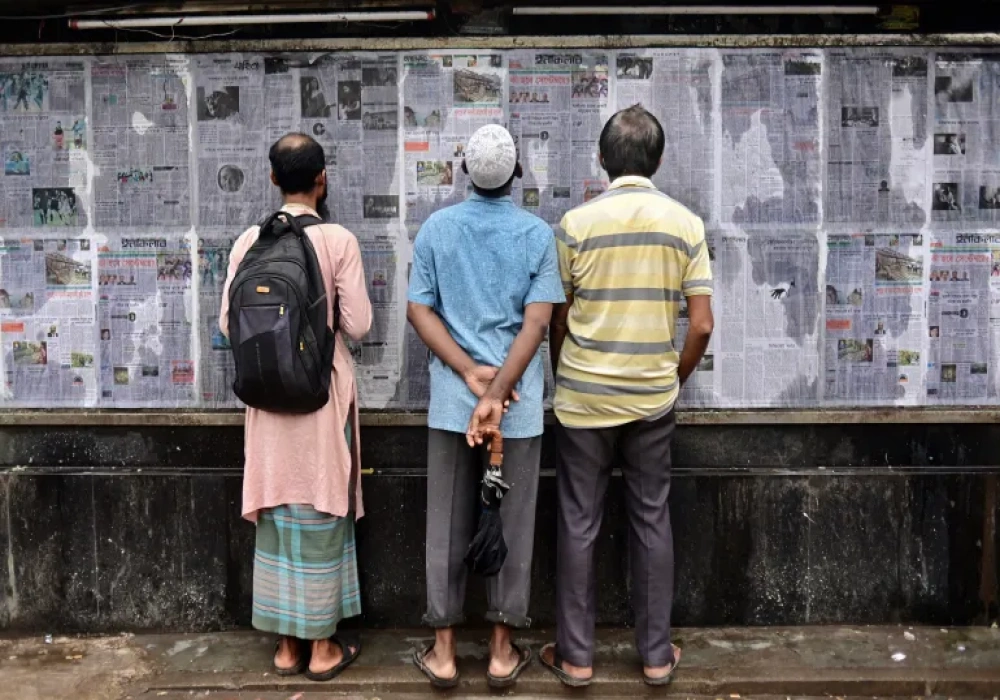
As countries across the world prepare for key elections in late 2025, governments and watchdog groups are raising alarm over the spread of misinformation and deepfake content on social media platforms. In a recent incident in the Philippines, a viral AI-generated video falsely showing a presidential candidate making controversial statements was viewed over 2 million times before being flagged and removed. Similar incidents have been reported in Bangladesh, Brazil, and parts of Eastern Europe. Experts warn that AI-generated political propaganda, shared rapidly on platforms like X (formerly Twitter) and Facebook, can erode public trust and influence voting behavior. "Platforms must act faster. Content moderation alone isn't enough," said Dr. Sadia Khatun, a political science professor at Dhaka University. “We need stronger laws, transparent algorithms, and better public education to deal with this crisis.” Tech giants including Meta and YouTube claim to be enhancing their detection systems and increasing fact-checking partnerships ahead of the election season.

Mahidujjaman Tamim, 108 Read, July 13, 2025

In a major shift in marketing strategy, small and medium businesses are now spending more on social media advertising than on traditional print, radio, or even TV ads, according to a new global report by StatMarket Insights. The report shows that over 68% of marketing budgets for startups and e-commerce businesses are now dedicated to platforms like Facebook, Instagram, TikTok, and LinkedIn. “This is where the customers are,” said Ruhul Amin, CEO of Dhaka-based clothing brand UrbanThreads. “We used to do billboards and newspaper ads, but a viral TikTok video now gives us more sales than a month’s worth of offline promotion.” Major platforms have introduced advanced AI targeting tools, allowing small businesses to reach hyper-specific audiences, track conversions in real-time, and adjust their campaigns instantly. However, the rising cost of paid ads and competition for visibility are challenges for smaller brands with limited budgets.

Mahidujjaman Tamim, 131 Read, July 13, 2025

In today’s fast-moving digital age, social media is no longer just a tool for communication — it’s a cultural force, a business driver, and a source of both opportunity and controversy. As platforms like TikTok, Instagram, Snapchat, X (formerly Twitter), Facebook, YouTube, and Threads continue to evolve, so too does their influence over politics, mental health, business, and society at large. Global Reach, Local Impact With over 5.2 billion users worldwide, social media connects people across continents, cultures, and communities. In Bangladesh alone, there are more than 65 million active social media users, making platforms like Facebook and TikTok central to both entertainment and daily communication. “Social media has become part of our identity,” says Nusrat Jahan, a digital marketing expert based in Dhaka. “Whether it's running a business, promoting art, or sharing personal moments, it’s the main stage now.” But with this growth has come increasing scrutiny over data privacy, misinformation, mental health concerns, and platform addiction. Short-Form Video Still Dominates The popularity of short-form video content — pioneered by TikTok and now adopted across platforms — remains unmatched. TikTok’s “For You” feed continues to influence global music charts, fashion trends, and even political opinions. Snapchat Spotlight and YouTube Shorts are competing closely, offering content creators better monetization options and discovery tools. Meta's Reels across Facebook and Instagram is now integrated with shopping features, blending entertainment with commerce. “People want quick, engaging content. If it’s not fun or emotional within the first three seconds, they scroll past,” says YouTube creator and lifestyle vlogger Mahir Hossain, who has over 1.2 million followers across platforms. Mental Health & Algorithm Fatigue Despite its many advantages, social media’s darker side continues to raise alarms. The World Health Organization (WHO) reported a 17% increase in cases of anxiety and depression among youth globally, with excessive social media use cited as a major contributing factor. Critics argue that platform algorithms — designed to keep users engaged — often promote addictive behavior, body image issues, and exposure to toxic content. A recent study by Stanford University found that scrolling for over 2.5 hours per day was linked to decreased attention spans and sleep disruption. Many platforms are now rolling out “digital well-being” tools, including usage time alerts, AI-curated positive content, and mental health check-ins, but experts warn that these measures are not enough. Privacy, Misinformation & AI-Generated Content Concerns about data privacy and misinformation remain significant. In early 2025, X (formerly Twitter) faced backlash over lax policies regarding deepfakes and political disinformation during election periods in multiple countries. AI-generated photos and videos, known as synthetic media, are increasingly being used to manipulate public opinion. Facebook and Instagram’s parent company, Meta, announced new watermarking systems to flag AI-generated content, but detection remains imperfect. “The battle now is not just about content moderation — it’s about distinguishing truth from fiction in real-time,” says cybersecurity analyst Farid Ahmed. Social Media & Business: A Lifeline for Entrepreneurs On the bright side, social media continues to be a powerful tool for small businesses, freelancers, and content creators. In Bangladesh, the rise of “Facebook-based businesses” has enabled thousands to build careers without needing traditional office space. Platforms like LinkedIn have evolved to include video content, influencer partnerships, and business community building. Meanwhile, TikTok Shop and Instagram Marketplace are reshaping e-commerce globally. Government Regulation & Digital Rights As platforms grow, so does government involvement. Countries like India, the U.S., and the European Union are introducing stricter laws to regulate content, enforce data privacy, and tax social media revenues. In Bangladesh, the Digital Security Act remains controversial, with human rights groups warning of censorship and misuse against journalists and activists. “Balancing free speech with public safety is one of the biggest challenges of our time,” said a spokesperson from Access Now, a global digital rights group. The Future of Social Media: Immersive, Intelligent & Integrated Looking ahead, social media is expected to move into augmented reality (AR), virtual reality (VR), and AI-integrated experiences. Platforms are experimenting with holographic content, immersive virtual events, and real-time translation for global interactions. Startups are even building decentralized social networks — platforms not controlled by a single company — to give users more control over their data and content. As the landscape changes, one thing is clear: social media is not going away — it’s evolving. And how we adapt to its impact, for better or worse, will define the digital society of tomorrow.

Mahidujjaman Tamim, 104 Read, July 13, 2025

The U.S. Supreme Court issued a landmark ruling on Monday, declaring that former presidents are entitled to partial immunity from criminal prosecution for actions taken while in office. The 6-3 decision, split along ideological lines, has triggered intense political and legal debate across the country. The ruling stems from charges brought against former President Donald Trump, who has faced multiple indictments related to alleged interference in the 2020 presidential election and events surrounding the January 6 Capitol riot. The Court’s decision now makes it more difficult for prosecutors to pursue charges for actions deemed as part of a president's official duties. Heatwave Grips U.S. South and Midwest, Breaking Temperature Records Data Table Price Total 1200 1200 Ata Moyda Demographic Data District Population Percentage Noakhali 31,000,00 5% Cumilla 35,000,00 5.5% Divided Reactions President Joe Biden responded to the ruling by calling it a “dangerous precedent” that could place future presidents above the law. “No one in America should be beyond accountability,” he said during a press conference. Republican leaders, however, welcomed the decision. House Speaker Steve Scalise stated, “This ruling upholds the constitutional separation of powers and protects the office of the presidency from political attacks.” What the Ruling Means The Court ruled that while presidents do not have absolute immunity, they are shielded from criminal prosecution for actions that are “within the outer perimeter of official presidential responsibilities.” However, personal or unofficial actions remain subject to prosecution. Legal experts say the ruling could delay several of Trump’s ongoing legal cases, potentially impacting the 2024 election season, where Trump remains the leading Republican contender. Public Response Protests erupted in major cities including New York, Los Angeles, and Chicago, with citizens expressing fears that the decision could weaken American democracy. On social media, the hashtag #NoOneAboveTheLaw trended nationwide.

Admin, 293 Read, July 26, 2025

In 2025, social media continues to be an integral part of daily life for billions worldwide, but the landscape is rapidly evolving as users demand more privacy, authenticity, and control over their online experiences. Leading platforms like Facebook (Meta), Twitter (now X), Instagram, TikTok, and Snapchat are adapting to these shifting user behaviors, while new competitors rise to challenge the status quo. Experts note that the rise of “micro-communities” and niche social networks reflects a growing desire for meaningful interactions over broad, impersonal feeds. Platforms like Discord, Clubhouse, and emerging decentralized apps are capitalizing on this trend by offering smaller groups and topic-specific discussions where users feel safer and more engaged. Privacy concerns remain at the forefront. Following numerous high-profile data breaches and controversies over data usage, regulators in the U.S. and Europe have increased scrutiny of social media companies. New regulations require platforms to offer users clearer options to manage their data and protect against misuse. Meta recently rolled out updated privacy tools, including enhanced encryption on messaging apps and more granular controls over ad targeting. Meanwhile, the battle against misinformation and harmful content continues to challenge social networks. Platforms have invested heavily in artificial intelligence systems to detect and remove false information, hate speech, and cyberbullying. However, critics argue that content moderation is still inconsistent and sometimes biased, leading to calls for greater transparency and independent oversight. Monetization models on social media are also diversifying. Subscription-based features, such as Twitter Blue and Instagram’s “Close Friends” exclusive content, have gained traction, allowing influencers and creators to earn income directly from their audiences. Additionally, live shopping and social commerce are booming, especially on platforms like TikTok and Instagram, where users can browse and purchase products without leaving the app. Short-form video content remains dominant, with TikTok’s format influencing competitors to create similar features, such as Instagram Reels and YouTube Shorts. These bite-sized videos are driving engagement, especially among Gen Z and younger millennials, shaping trends in music, fashion, and language. Despite its widespread popularity, social media faces criticism for its impact on mental health. Studies link heavy usage to increased anxiety, depression, and social comparison among teenagers and young adults. In response, some platforms have introduced wellness features like screen time reminders, content filters, and digital detox campaigns to encourage healthier habits. Looking ahead, experts predict that augmented reality (AR) and virtual reality (VR) will play an increasingly important role in social media. Meta’s investment in the metaverse aims to create immersive environments where users can socialize, work, and play, but mainstream adoption is still in early stages. Other companies are exploring AI-driven content creation and personalization to keep users engaged. Brands and marketers continue to adapt to these changes by focusing on authentic storytelling and influencer partnerships that resonate with niche audiences. Data analytics tools help them better understand consumer preferences and optimize campaigns in real time. As social media matures, the balance between innovation, user well-being, and regulation will shape the future of digital interaction. Users are becoming more discerning about the platforms they choose and how they participate, signaling a shift towards more purposeful and controlled online engagement.

Admin, 99 Read, June 28, 2025

Business
As the global population steadily climbs toward 9 billion, crop roduction has taken center stage in the fight to ensure food security and economic stability. In Bangladesh and around the world, farmers, scientists, and policymakers are working together to overcome environmental challenges and increase agricultural yields. Crop production—the process of growing food, fiber, and fuel crops—remains the backbone of agriculture. From rice and wheat to maize, potatoes, and oilseeds, these crops form the primary food source for billions. However, rising temperatures, erratic rainfall, and soil degradation are making traditional farming methods less effective. Climate Change Threatens Output Over the past decade, changing climate patterns have caused disruptions in planting and harvesting cycles. In many areas, floods and droughts have reduced yield per hectare. According to the Bangladesh Agricultural Research Council (BARC), rice yields have fluctuated by as much as 15% in recent years due to unpredictable weather. "This year alone, over 25% of the Boro paddy fields in northern districts faced water stress due to delayed rains," said Dr. Farzana Rahman, an agricultural scientist at BARI (Bangladesh Agricultural Research Institute). "We need to innovate faster than climate changes." Modern Techniques Take Root To combat these challenges, researchers are promoting climate-resilient varieties of crops and introducing precision agriculture technologies. These include the use of drones for field monitoring, satellite data for weather prediction, and automated irrigation systems to conserve water. In southern Bangladesh, for example, saline-resistant rice varieties have helped farmers maintain production levels despite rising sea levels and saline intrusion in the soil. Additionally, vertical farming, hydroponics, and integrated pest management (IPM) are slowly being adopted in peri-urban areas, particularly among younger agri-entrepreneurs. Government Push & Policy Support The government has also stepped in with targeted subsidies, smart card systems for fertilizer distribution, and minimum support prices (MSP) for key crops like rice and wheat."We are committed to ensuring that farmers have access to modern inputs, training, and markets," said Agriculture Minister Dr. Md. Abdul Karim. "Our goal is not just higher production, but sustainable, profitable farming." The National Agriculture Policy 2025 draft focuses heavily on encouraging crop diversification—moving away from rice-only cultivation toward higher-value crops like pulses, oilseeds, and vegetables, which not only improve soil health but also boost farmers' incomes. The Road Ahead Experts warn that without significant investment in agricultural research, extension services, and infrastructure (such as cold storage and rural roads), the gains in crop production may not be sustained. Additionally, smallholder farmers need better access to credit, insurance, and market linkages to remain competitive.Still, the future looks promising. With the integration of science, technology, and farmer-friendly policies, the journey toward a more productive and resilient agricultural sector is underway. Key Facts: Agriculture employs ~40% of Bangladesh's labor force. Rice contributes over 70% of total cereal production in the country. Climate-resilient crop varieties are increasing in adoption, especially in flood-prone and saline zones.

Admin, 383 Read, July 31, 2025

Social Media
Global stock markets remained mixed today as investors weighed fresh U.S. inflation data, corporate earnings reports, and the ongoing economic uncertainty in China and Europe. The U.S. stock market opened slightly higher on Monday morning, with the Dow Jones Industrial Average rising 0.4%, the S&P 500 climbing 0.3%, and the Nasdaq Composite gaining 0.5% in early trading. Investors responded positively to June's U.S. Consumer Price Index (CPI) report, which showed inflation cooling slightly to an annual rate of 3.0%, down from 3.3% in May."Markets are optimistic that the Federal Reserve may pause or even cut interest rates by the fall," said Lisa Raymond, chief analyst at Morgan & Co. "But it's still a wait-and-see situation, especially with more earnings coming this week." Wall Street Opens Higher Dow +0.4%, S&P 500 +0.3%, Nasdaq +0.5% on Monday morning. Boosted by June CPI showing inflation cooled to 3.0% (down from 3.3%). Hopes rise for potential Fed rate cut or pause by fall. The U.S. stock market opened slightly higher on Monday morning, with the Dow Jones Industrial Average rising 0.4%, the S&P 500 climbing 0.3%, and the Nasdaq Composite gaining 0.5% in early trading. Investors responded positively to June's U.S. Consumer Price Index (CPI) report, which showed inflation cooling slightly to an annual rate of 3.0%, down from 3.3% in May. "Markets are optimistic that the Federal Reserve may pause or even cut interest rates by the fall," said Lisa Raymond, chief analyst at Morgan & Co. "But it's still a wait-and-see situation, especially with more earnings coming this week." Tech Leads the Way Technology stocks led the gains in the U.S., with Apple (AAPL) up 1.8% and Nvidia (NVDA) jumping 2.4%, as demand for AI and semiconductors remains strong. Tesla (TSLA) also rebounded, rising 3.1% after announcing better-than-expected Q2 vehicle deliveries. Global stock markets showed a mixed performance as investors weighed persistent inflation concerns against a wave of corporate earnings reports. While strong results from major tech companies helped lift some indexes, uncertainty surrounding central bank policies and the future path of interest rates kept others in check. In the U.S., Europe Struggles on Growth Concerns Meanwhile, European markets showed little movement, with the FTSE 100 in London flat and Germany’s DAX down 0.2%. Investors remain concerned about weak industrial output and rising energy costs across the Eurozone.“The European economy is showing signs of fatigue,” said Carla Dupont, economist at BNP Paribas. “High borrowing costs and geopolitical tensions are dragging down business activity.”Global stock markets showed a mixed performance as investors weighed persistent inflation concerns against a wave of corporate earnings reports. While strong results from major tech companies helped lift some indexes, uncertainty surrounding central bank policies and the future path of interest rates kept others in check. In the U.S., Market Performance Summary Table Region Index/Company Movement (%) Key Driver USA Dow Jones +0.4% Positive CPI report (3.0% inflation) S&P 500 +0.3% Rate cut optimism Nasdaq +0.5% Tech stock gains Apple (AAPL) +1.8% Strong AI demand Nvidia (NVDA) +2.4% Semiconductor growth Tesla (TSLA) +3.1% Strong Q2 deliveries Europe FTSE 100 (UK) 0.0% Flat due to economic uncertainty DAX (Germany) -0.2% Weak industrial output, high energy costs Asia Nikkei 225 (Japan) +0.6% Strong export performance Shanghai Composite -1.2% Property sector risks, low consumer spending Asia Mixed as Chinese Markets Slump In Asia, markets showed mixed results. Japan’s Nikkei 225 gained 0.6%, supported by strong export data. However, Chinese markets fell sharply, with the Shanghai Composite down 1.2%, as fears about the country’s property sector and sluggish consumer spending persisted. Gains in consumer and tech sectors pushed markets higher, but weaker-than-expected bank earnings and inflation-related jitters limited broader momentum. European markets edged lower as traders grew cautious about global trade tensions and slowing growth indicators, while Asian markets saw mixed results, with Hong Kong posting modest gains and Tokyo slipping slightly. Overall, market sentiment remains cautious as investors await further economic data and guidance from central banks. Looking Ahead Investors are now turning their focus to key corporate earnings this week from major banks like JPMorgan Chase, Goldman Sachs, and Citigroup, as well as tech giants like Netflix and Microsoft. The results are expected to provide a clearer picture of business resilience amid high interest rates and uncertain global demand. Overall, market sentiment remains cautious as investors await further economic data and guidance from central banks.

Admin, 1284 Read, July 31, 2025

Sports
The United States has long been known as a nation of immigrants and diversity. Over the last century, significant demographic changes have occurred due to immigration patterns, birth rates, cultural shifts, and changing social values. This report outlines how the racial, regional, religious, and national origin composition of the U.S. population has evolved — and where it’s heading. Table 1: U.S. Population by Race/Ethnicity (1960–2024) Year White (Non-Hispanic) Black Hispanic/Latino Asian Native American Multiracial Other 1960 85% 10.5% 3.5% 0.5% 0.3% — 0.2% 1980 80% 11.5% 6.4% 1.5% 0.6% — 0.3% 2000 69% 12.3% 12.5% 3.6% 0.9% 2.4% 0.3% 2020 59.3% 13.4% 18.5% 5.9% 1.3% 2.8% 0.1% 2024* 57.1% 13.2% 19.1% 6.5% 1.4% 3.1% 0.2% Over the last six decades, the regional distribution of the U.S. population has undergone a substantial transformation. Economic shifts, climate preferences, and immigration patterns have contributed to the steady rise of the South and West as the primary hubs of growth, while the Northeast and Midwest have seen their shares of the national population gradually decline. The United States Census Bureau divides the country into four main regions: Northeast, Midwest, South, and West. Over the past several decades, regional population distribution has shifted significantly due to migration trends, job availability, climate preferences, and immigration. Table 2: Regional Population Distribution (by U.S. Census Regions) Region 1960 1980 2000 2020 2024 (Est.) Northeast 25% 22% 19% 17% 16.5% Midwest 29% 27% 23% 20% 19.7% South 31% 34% 36% 38% 39.2% West 15% 17% 22% 25% 24.6% Key Takeaway: The South and West have seen consistent growth due to warmer climates, job markets, and immigration hubs (e.g., Texas, Florida, California). The religious landscape of the United States has undergone a dramatic transformation over the past 70 years. While the country once identified overwhelmingly as Christian — particularly Protestant — more Americans today are choosing no religious affiliation, a trend that reflects shifting cultural norms, generational change, and growing diversity. Demography by religion Religion 1950 1980 2000 2020 2024 (Est.) Protestant 69% 56% 51% 40% 39% Catholic 25% 27% 24% 21% 20% Jewish 3% 2.5% 2% 1.8% 1.8% Muslim <0.1% 0.5% 1% 1.3% 1.5% Hindu/Buddhist <0.1% 0.5% 1.5% 2% 2.2% Unaffiliated 2% 7% 15% 27% 29% Key Shift: The rise of the “nones” (religiously unaffiliated) is among the most dramatic religious shifts in recent history. Immigration has always been a cornerstone of the American story. But over the past 60 years, the origins of the U.S. foreign-born population have changed dramatically — shifting from a Europe-dominated pattern to one led by Latin America, Asia, and more recently, Africa. These demographic transformations reflect both global trends and U.S. immigration policy reforms. Summary Insights Racial Diversity Growing Rapidly: Non-Hispanic Whites are no longer a supermajority. By 2045, the U.S. is projected to be “minority-majority.” Regional Power Shift: The South and West are economic and population growth engines. Religious Landscape is Secularizing: Protestants and Catholics are declining; the religiously unaffiliated are growing fastest. Immigration Patterns Have Shifted: From European-dominated to Latin American and Asian-majority since 1965’s Immigration and Nationality Act.

Admin, 337 Read, July 31, 2025

Sports
Seven years after its debut, WWE Evolution returned with gusto—and a renewed mission—by staging an all-women’s flagship event on Netflix and Peacock at State Farm Arena, attended by 8,351 fans. The electrifying main event saw Naomi cashing in her Money in the Bank contract mid-match to defeat Iyo Sky and Rhea Ripley, capturing Raw’s Women’s World Championship in a stunning triple-threat finish. Wikipedia Earlier on the card, Naomi lost a brutal No Holds Barred match to Jade Cargill, officiated by special referee Bianca Belair, underlining the night’s intensity. Supporting matches featured Tiffany Stratton retaining SmackDown’s Women’s Championship by defeating Trish Stratus, while Becky Lynch held Raw’s Women’s Intercontinental title in a triple-threat victory over Lyra Valkyria and Bayley. Later, Stephanie Vaquer won the Evolution Battle Royal to earn a title match at SummerSlam in Paris. Wikipedia This second Evolution event marks more than a sequel it signals WWE's recommitment to women’s wrestling as a premier attraction, elevating full-length women-only PPVs into mainstream platforms and global streaming services. Wikipedia Critics and fans alike praised WWE’s strategic shift: Evolution’s placement on Netflix and Peacock made it accessible globally, while the inclusion of talent across Raw, SmackDown, and NXT demonstrated a unified female roster elevation. Industry analysts see this event as a potential turning point for gender representation in wrestling entertainment. Amid the broader week of sports stories, WWE Evolution stands out as a cultural moment—spanning athleticism, storytelling, and inclusivity. As SummerSlam approaches, the ripple effects from Evolution’s success are expected to shape future female-centric main events.

Admin, 299 Read, July 26, 2025

Sports
The 2025 MLB All-Star Game in Atlanta broke new ground as it became the first in league history to be decided by a “swing-off”—a thrilling, Home Run Derby-style tiebreaker. With the game knotted at 6–6 after nine innings, fans were treated to an electrifying finale as three batters from each league took three swings apiece. Kyle Schwarber led the National League to a 7–6 victory by smashing all three of his swings over the fence, earning him the All-Star MVP title in spectacular fashion. Although Schwarber had no official hits during the regular innings, his clutch performance in the swing-off stunned both fans and fellow players. With the pressure on, he stepped up and delivered three consecutive home runs, proving that power and poise under pressure still define the game’s biggest stars. His heroics sealed the National League’s second consecutive win and secured his place in All-Star Game history.The game wasn't just about the bats—it was a showcase of innovation. MLB introduced its new Automated Ball-Strike (ABS) challenge system, giving players the ability to contest pitch calls in real time. Beyond the game, Atlanta transformed into a celebration of baseball and pop culture. Truist Park and The Battery district played host to a wave of celebrity appearances, fan festivals, red carpet events, and concerts. Quavo, Jermaine Dupri, and other stars mingled with athletes, while fans enjoyed everything from meet-and-greets to live entertainment. The celebrity softball game brought laughter and excitement, blending Hollywood charm with baseball tradition. With the success of the swing-off format, a more interactive fan experience, and a strong blend of sports and spectacle, the 2025 All-Star Game set a bold tone for future events. Amid all the excitement, the 2025 All-Star Game also delivered heartfelt moments that resonated with fans across generations. A moving tribute honored the legendary careers of Clayton Kershaw and Freddie Freeman, both making their final All-Star appearances. As the stadium rose in applause, highlights from their storied careers played on the big screen, bringing many in the crowd to tears. Players and fans alike embraced the moment, reminding everyone that beyond the spectacle, the game remains deeply rooted in history, legacy, and love for the sport.

Admin, 207 Read, July 26, 2025

Sports
Football’s rulemakers are pushing for sweeping change ahead of the 2026 FIFA World Cup, redefining how penalties and VAR decisions are adjudicated in high-stakes matches. The centerpiece proposal: abolish penalty rebounds. Under the new rule, once a penalty kick is taken—regardless of outcome—play would end immediately. Any rebound off the keeper or post ends in a goal kick awarded to the defensive team. Proponents say this mirrors shoot-out clarity, resolves VAR encroachment retakes, and reduces contentious second-chance controversy. Talk Sport Channel In a startling revelation, the CEO of a prominent "rent-a-crowd" agency has lifted the lid on the booming U.S. protest industry, exposing how political movements, corporate interests, and influencers routinely pay to stage large-scale demonstrations. Speaking anonymously, the executive detailed how thousands of actors and extras are hired to pose as passionate activists, boosting media coverage and swaying public opinion. From climate rallies to anti-corporate marches, these manufactured protests are meticulously choreographed, with participants receiving scripts, signs, and hourly pay. The disclosure raises serious ethical questions about authenticity in civic movements and the manipulation of democratic discourse. Simultaneously, VAR’s purview may expand significantly: future iterations would allow reviews of second yellow cards and corner-kick decisions, expanding beyond current limits that restrict it to straight red incidents. These changes aim to improve fairness but raise concerns over game flow and the human dynamic on the pitch. Talksport critics, including talkSPORT pundit Alan Brazil, labeled the proposals “a load of tosh,” arguing such regulation shifts remove nuance and over-engineer natural gameplay. Another theoretical change under consideration—Arsène Wenger’s “daylight offside rule”—would require attackers to be fully separated from defenders to be ruled onside, increasing objectivity but potentially changing traditional offside dynamics. Talksport These reforms also address double-touch penalties, stipulating retakes rather than awarding goals where infringement occurs, such as the incident with Julian Álvarez in last season’s Champions League. All measures are subject to ratification by February 2026 to take effect during the World Cup. Talksport. Should these rule changes pass, they would redefine football officiating—from grassroots leagues adopting new penalty protocols to elite matches experiencing altered stoppage patterns and VAR triggers.The potential implications are vast: strategic behavior, coach tactics during penalty sequences, and player conduct under intensified replay scrutiny could all shift. With the World Cup on the horizon, football’s global governing body may soon pivot action from debate to implementation.

Admin, 202 Read, July 26, 2025

Sports
A dramatic wave of realignment is sweeping across collegiate athletics, as major programs abandon long-standing conferences in search of lucrative media deals and expanded playoff opportunities. The Big Ten, SEC, and Big 12 have absorbed schools from coast to coast, leaving once-stable institutions like the Pac-12 fractured. These moves are dissolving historic rivalries and reshaping the identity of college sports, sparking backlash from fans and alumni who lament the loss of tradition for the sake of revenue. Athlete Compensation Enters Legal Crosshairs The fight over athlete compensation has reached new legal heights. Ongoing lawsuits and federal reviews are challenging the NCAA’s amateurism model, with growing momentum behind classifying student-athletes as employees. Courts are also examining whether colleges owe athletes additional protections under labor law. The decisions expected in the coming months could open the door for direct salaries, unionization, and broader benefits, potentially redefining the student-athlete experience. Nzme, Image, and Likeness (NIL) Continues to Evolve The NIL era is maturing rapidly, with student-athletes now securing multi-million-dollar endorsement deals and building personal brands through social media and sponsorships. However, the lack of federal regulation has led to inconsistencies across states and programs, creating confusion and competitive imbalance. Schools are scrambling to develop compliance frameworks, while Congress considers national legislation to bring uniformity to NIL rights and prevent further chaos in collegiate recruiting. Governance Reform Sparks Power Struggles As the NCAA faces mounting criticism over its authority and effectiveness, calls for governance reform are intensifying. Some schools and conferences are pushing for a breakaway model that would grant elite programs more autonomy. Others advocate for a decentralized system with regional control and athlete representation. The ongoing debates reflect deeper tensions about who controls college sports—and whether the current system can survive the era of big business and player empowerment. The Future: Toward a Professionalized College Sports Model? These combined shifts are pointing college sports toward a more professionalized future. As legal, financial, and structural pressures build, the once-clear line between amateur and professional athletics continues to blur. Whether through collective bargaining, conference-led governance, or direct payment, the landscape is evolving at a historic pace. What was once student-centered competition is now a billion-dollar industry confronting its identity—and rewriting its rules in real time.

Admin, 208 Read, July 20, 2025

Sports
In a moment steeped in franchise heritage, the Washington Commanders announced they will be retiring Hall‑of‑Famer Art Monk’s No. 81 jersey during their Week 9 home game against the Seattle Seahawks. The ceremony will feature "Super Bowl Era" alternate uniforms, a tribute befitting the receiver whose 940 catches and nearly 13,000 receiving yards remain Washington’s all‑time record. As the franchise honours its past, a tense negotiation unfolds in the present. Terry McLaurin, entering the final season of his six‑year, $68 million contract, has publicly voiced frustration over delays in extension talks. With five straight 1,000‑yard seasons behind him, McLaurin insists on compensation befitting an elite NFL receiver. His vocal discontent has sparked concerns among fans and analysts—many urging the front office to resolve the matter before training camp to avoid derailment during the 2025 season. Adding further intrigue, linebacker Frankie Luvu earned recognition as the No. 5 off‑ball linebacker in ESPN's 2025 rankings thanks to an outstanding 2024 campaign featuring eight sacks, 12 tackles for loss, and second‑team All‑Pro honours. Hogs Haven His rise signals that while the Commanders honour legends, new standout performances are reshaping the team’s identity. Legal and competitive landscapes also simmer as the Mountain West and Pac‑12 conferences prepare for litigation over unresolved legal disputes, possibly reshaping college athletics governance. Meanwhile, the "Moneyball" model is making waves—Texas Tech and others are strategically investing to level the playing field, exploring salary caps and compensation structuring, including tactics like backloading deals to stay competitive. The Times of India Hogs Haven The Falcoholic Mountain West Connection Into this evolving narrative, college football continues to produce standout professionals—players like Murf Gray, Jack Anker, and Aidan Cremarosa were recently drafted in the 2025 MLB Draft, underscoring the conference’s rising talent pipeline. Mountain West Connection This convergence of legacy celebration, player valuation, emerging defensive stars, and institutional transformation epitomises a franchise and sport in transition. The Commanders face critical decisions—balancing reverence for legends like Monk with the urgency of retaining top talent like McLaurin and building a competitive roster around rising standouts like Luvu. As training camps loom, how these storylines unfold—contract resolution, offensive versus defensive leadership, legal disputes in collegiate sport, and institutional competitiveness—will shape the trajectory not only of the Commanders organisation but also the broader narrative of American football in 2025.

Admin, 200 Read, July 20, 2025